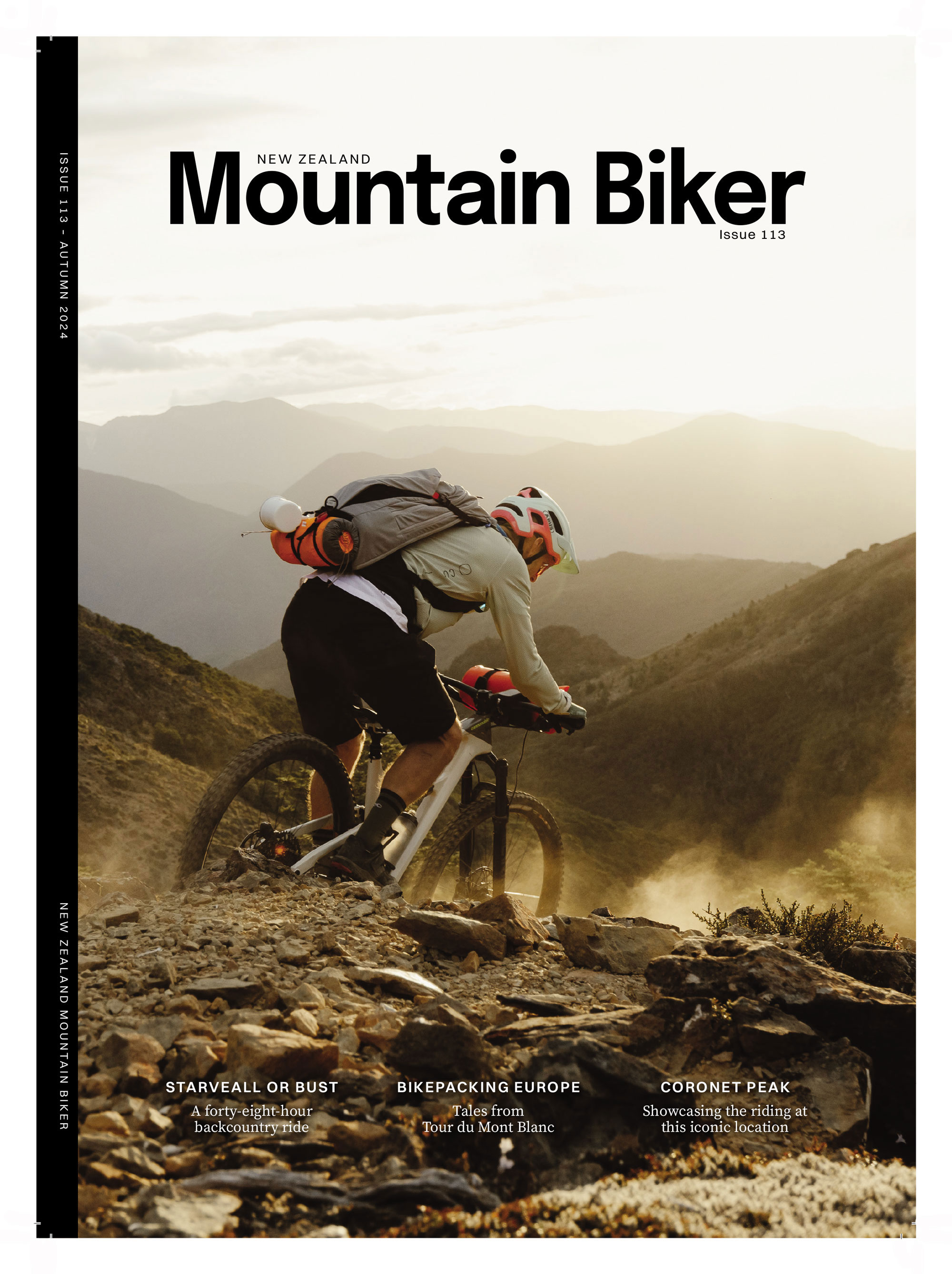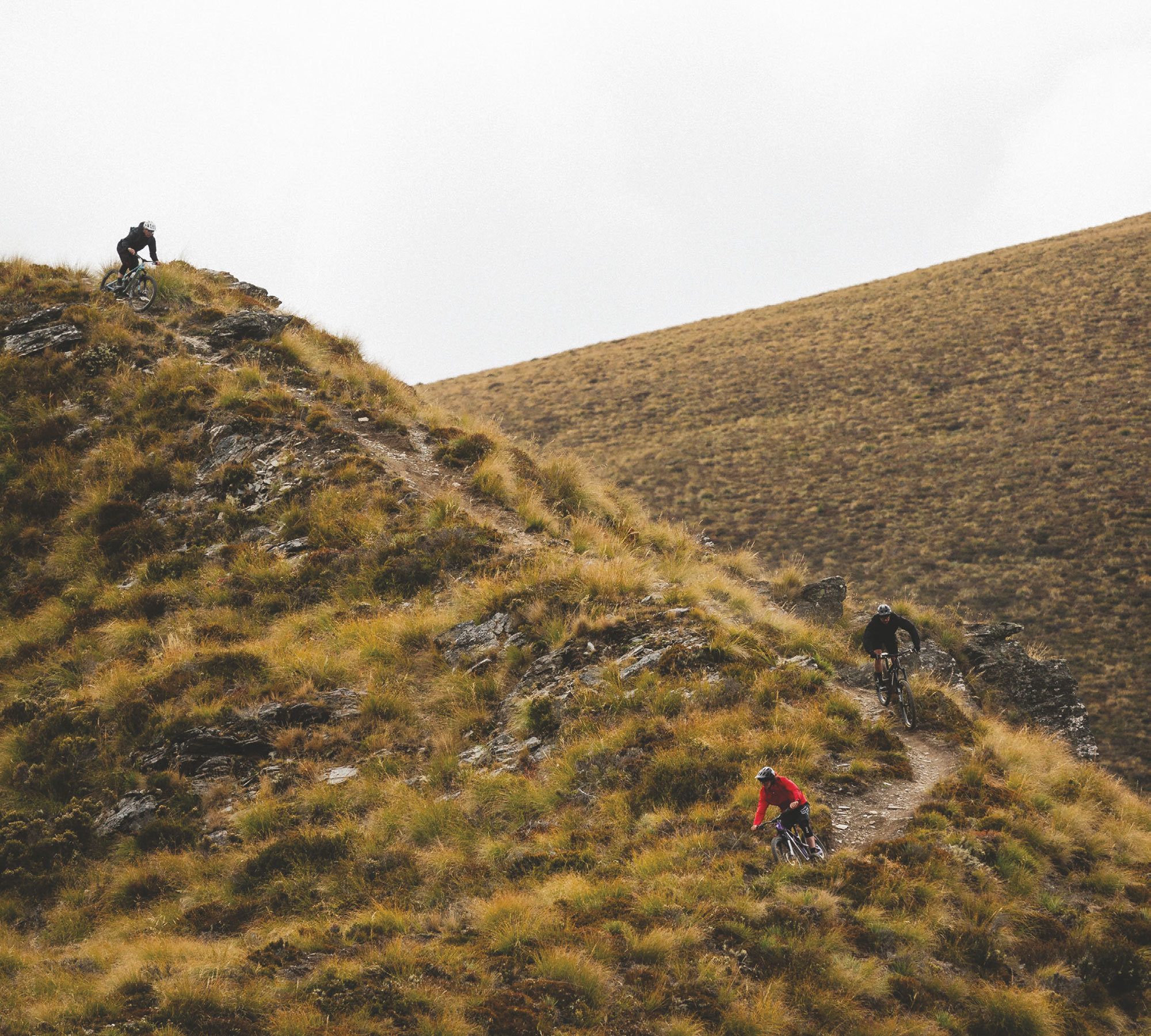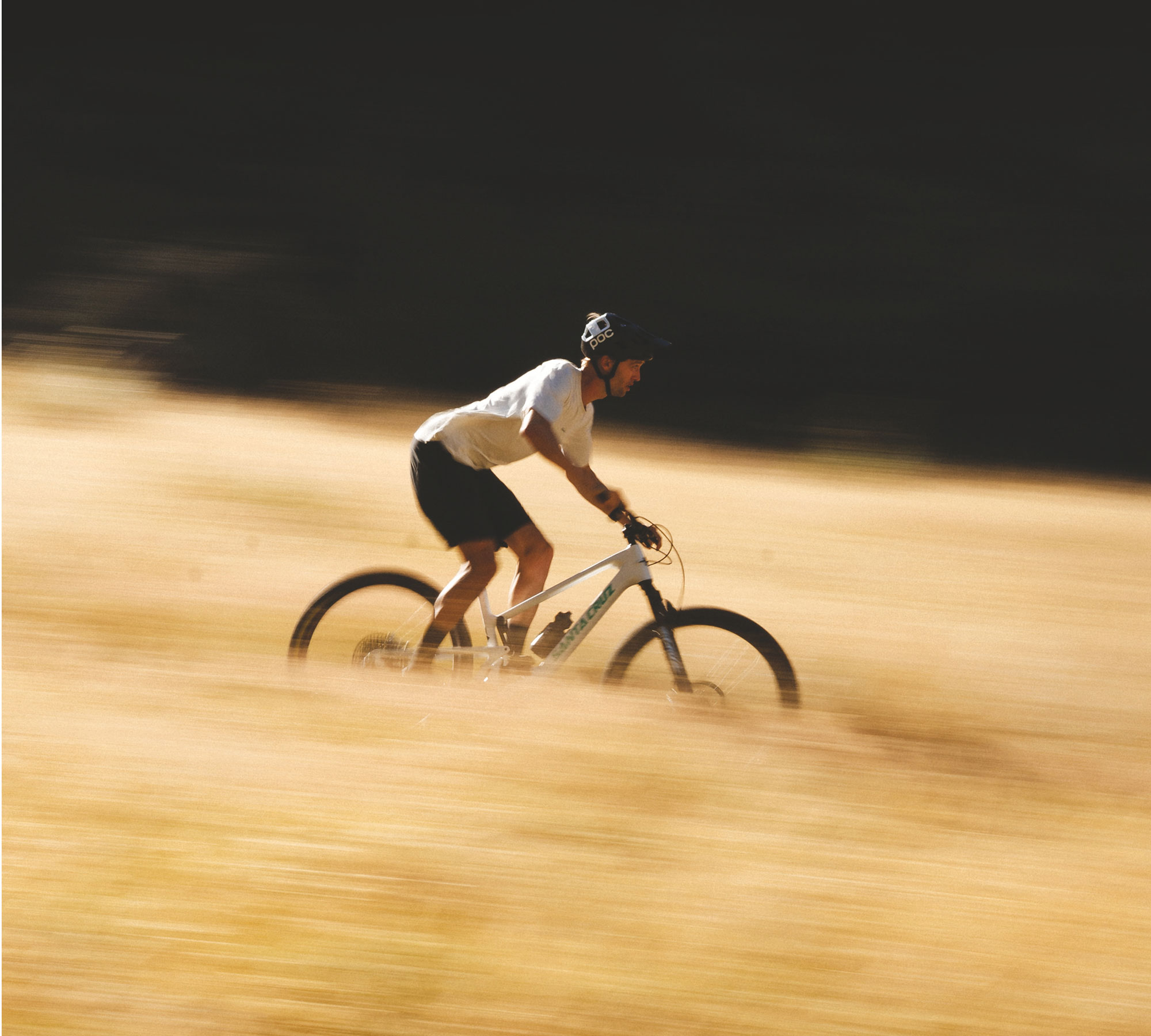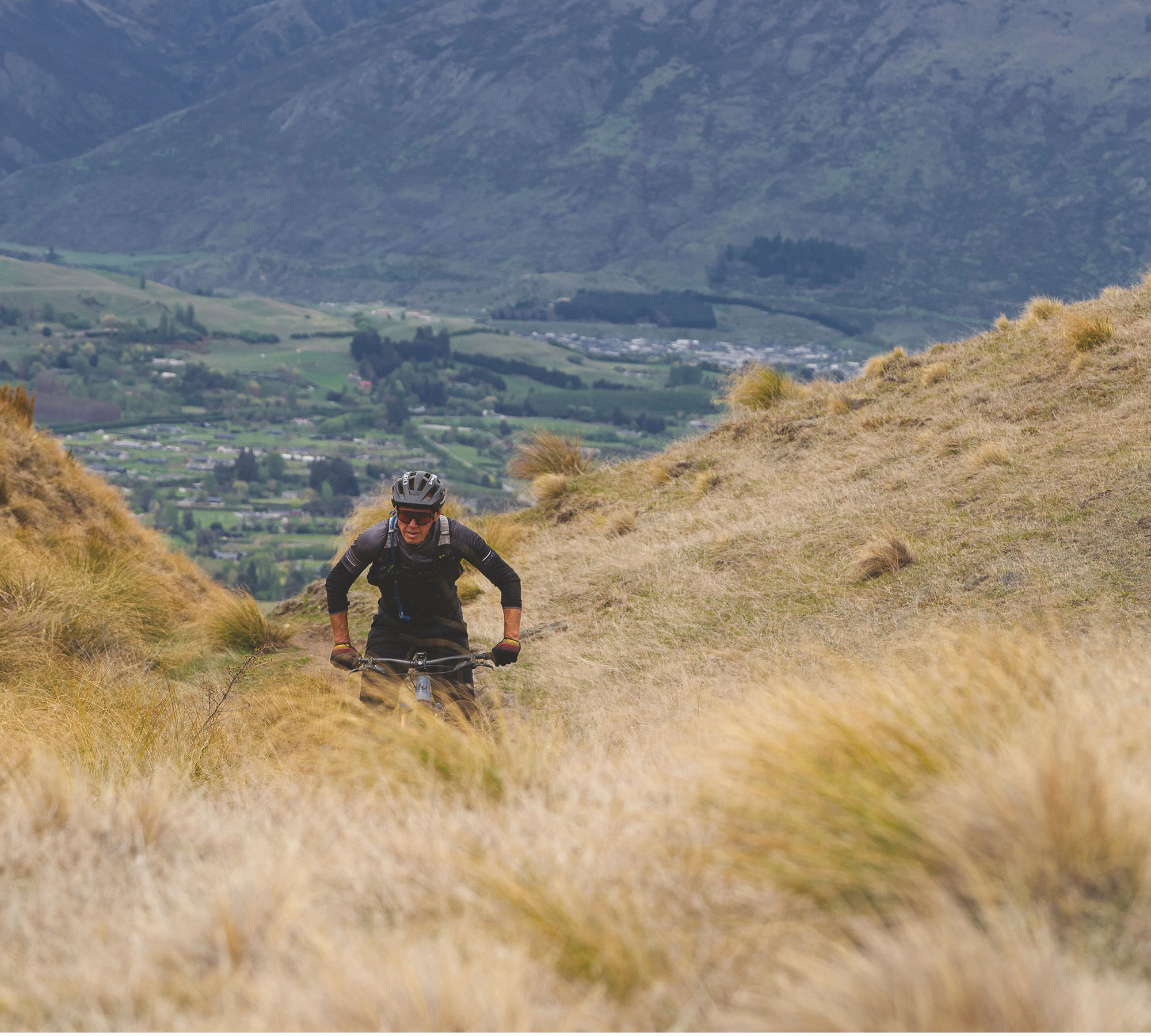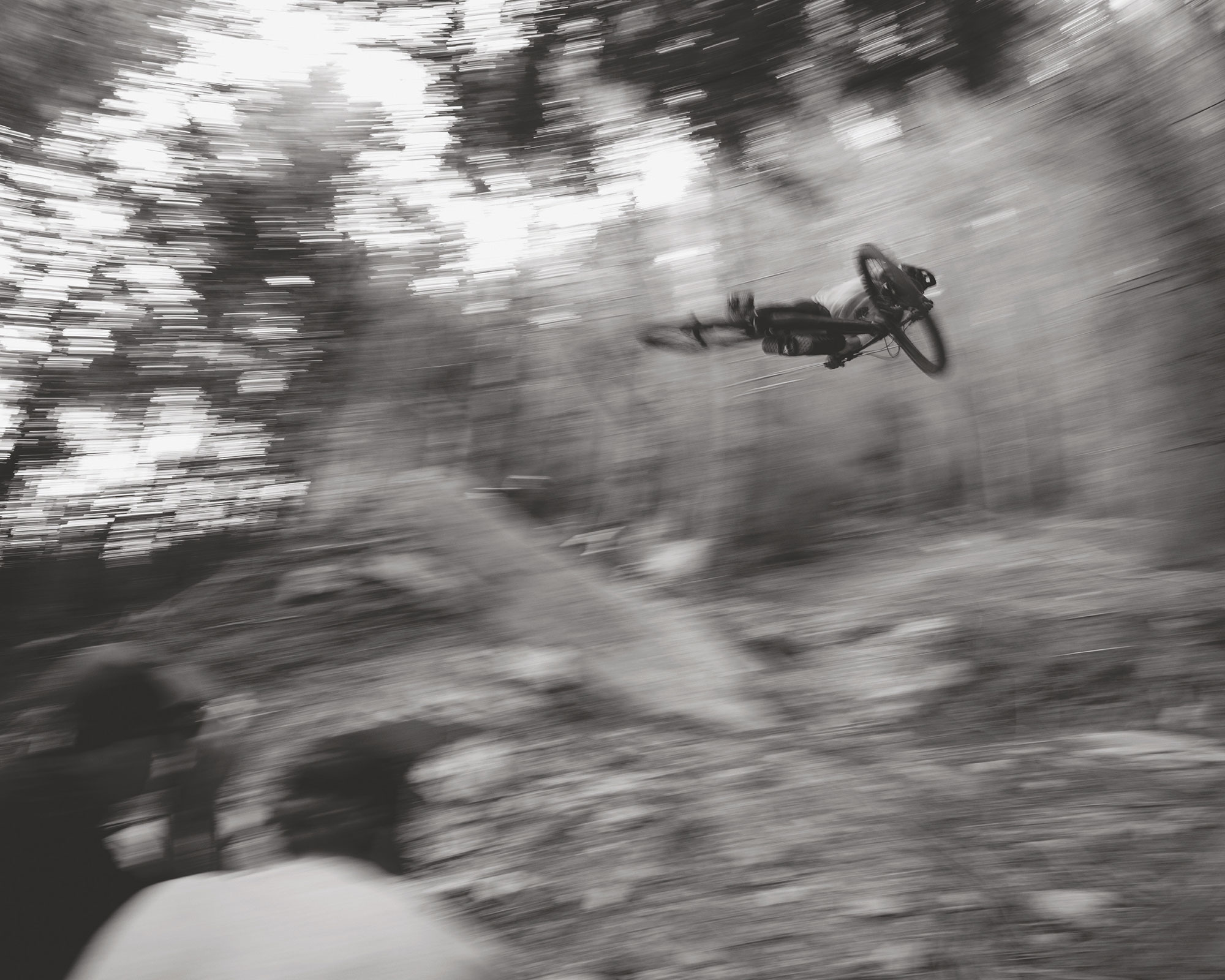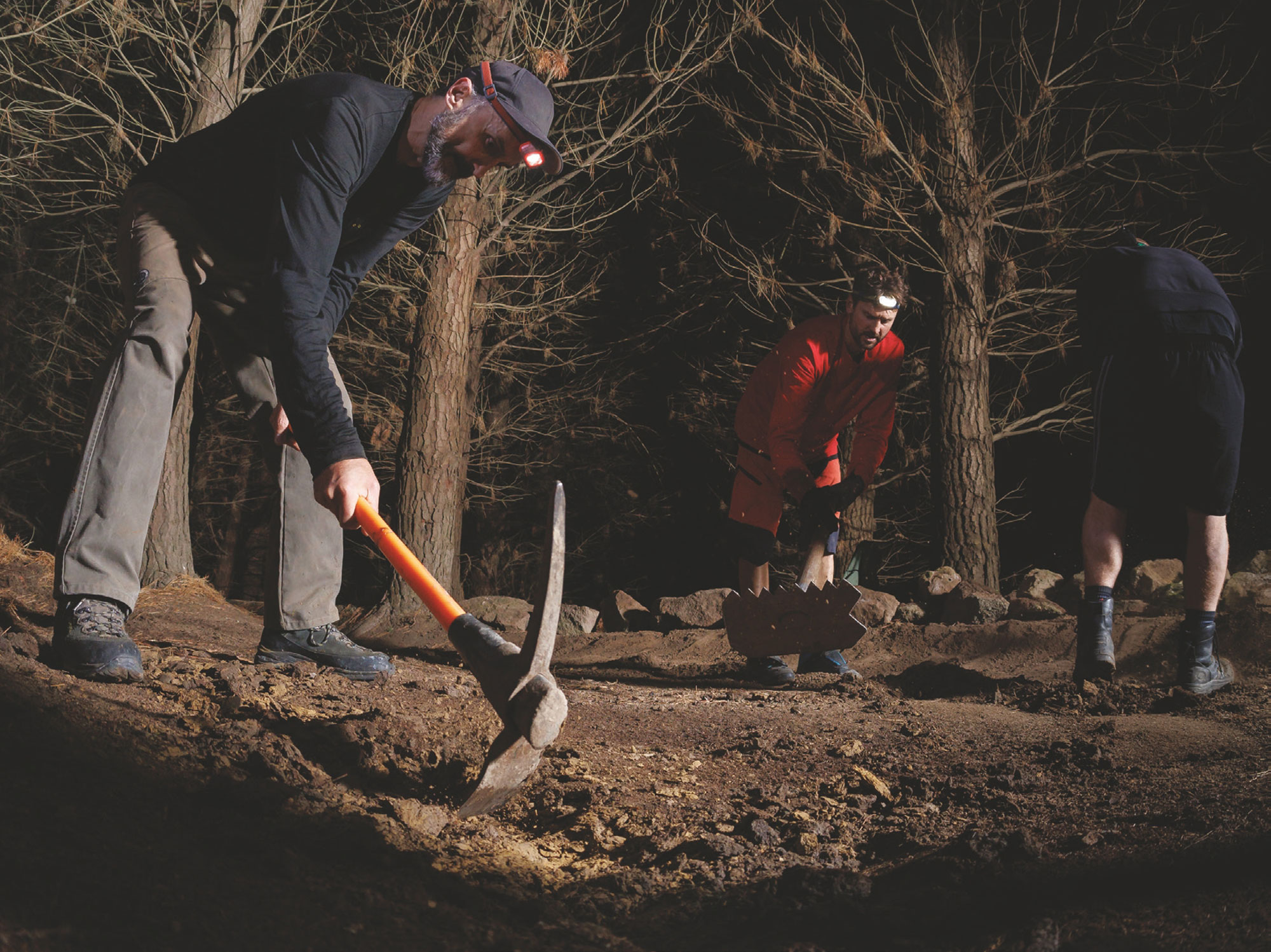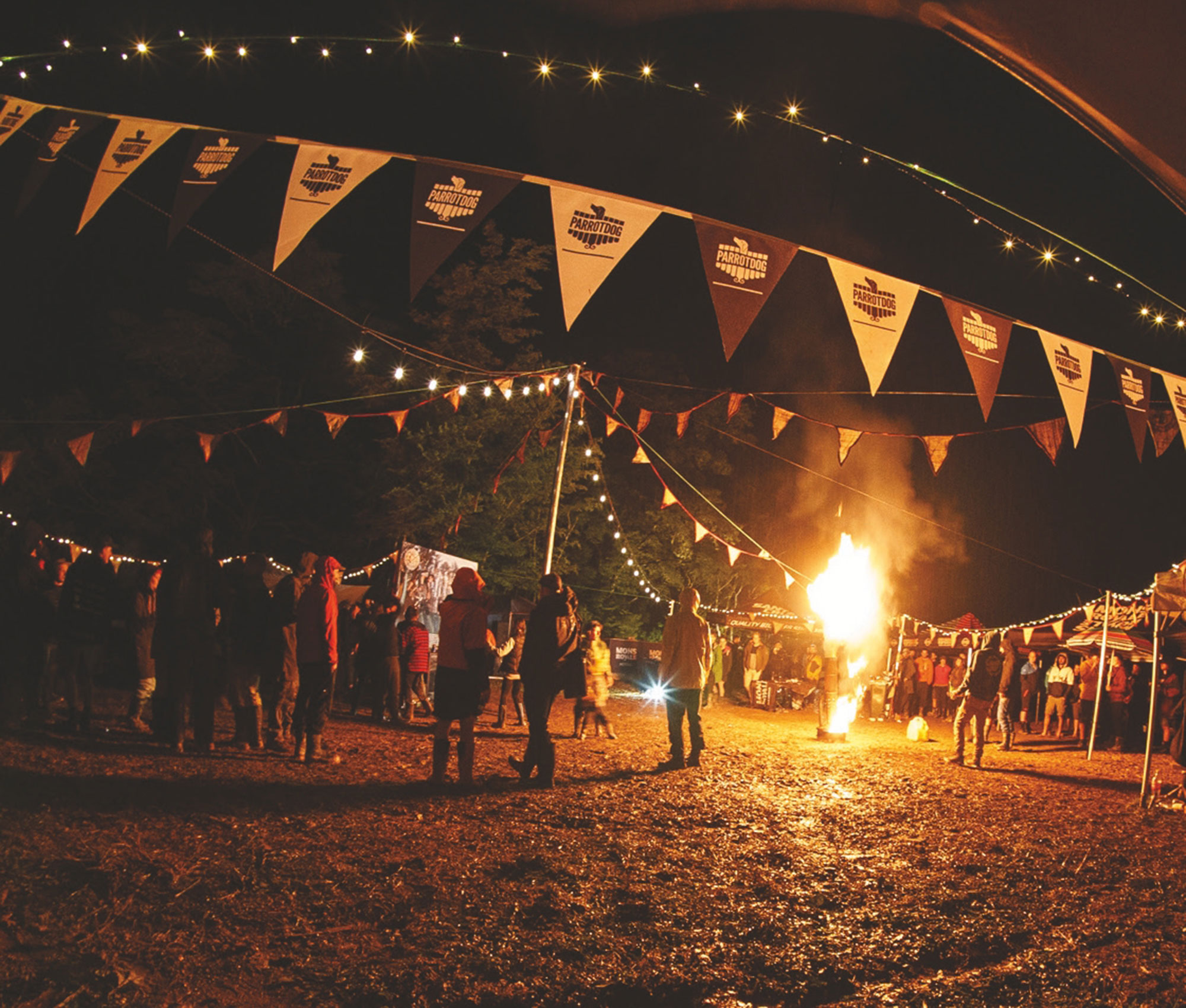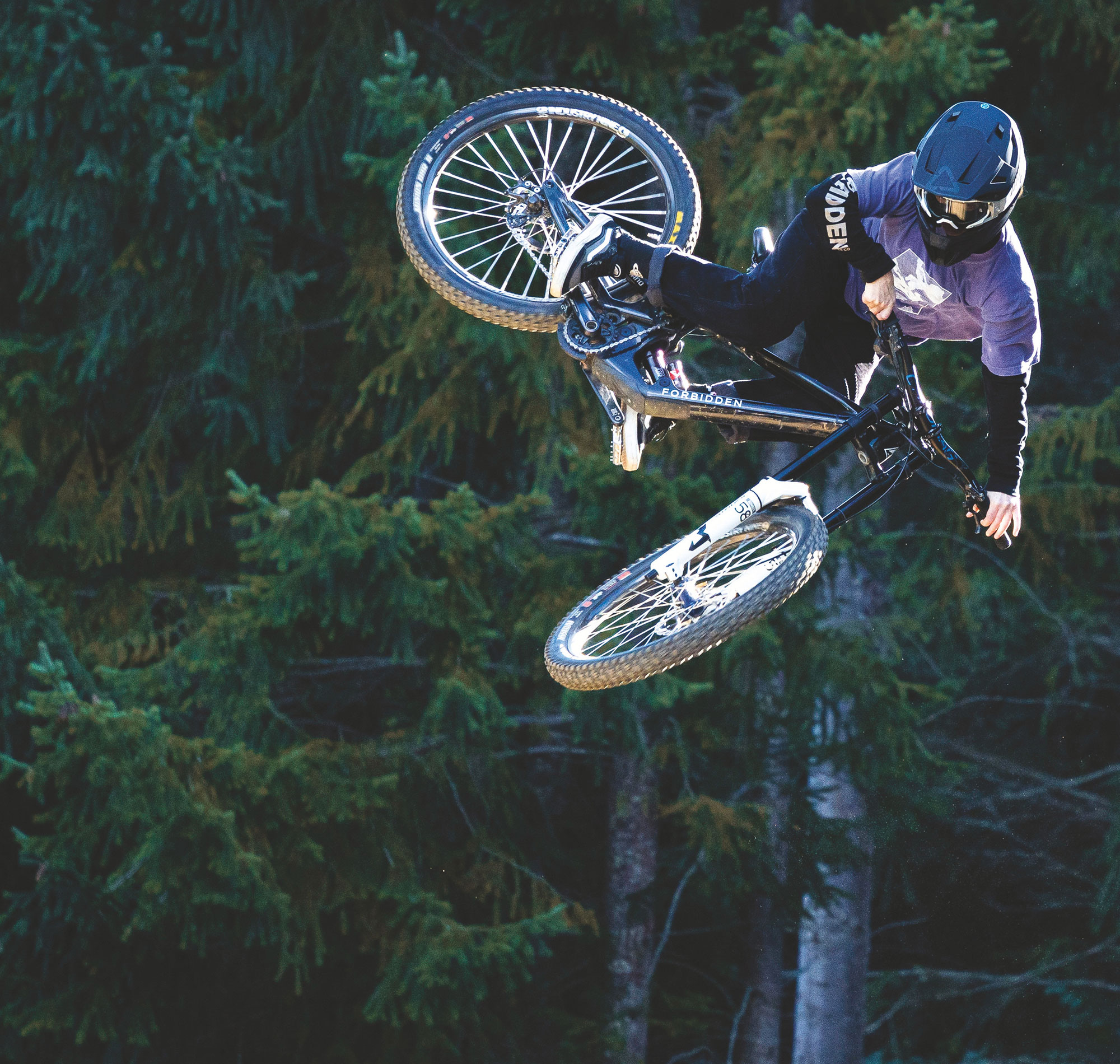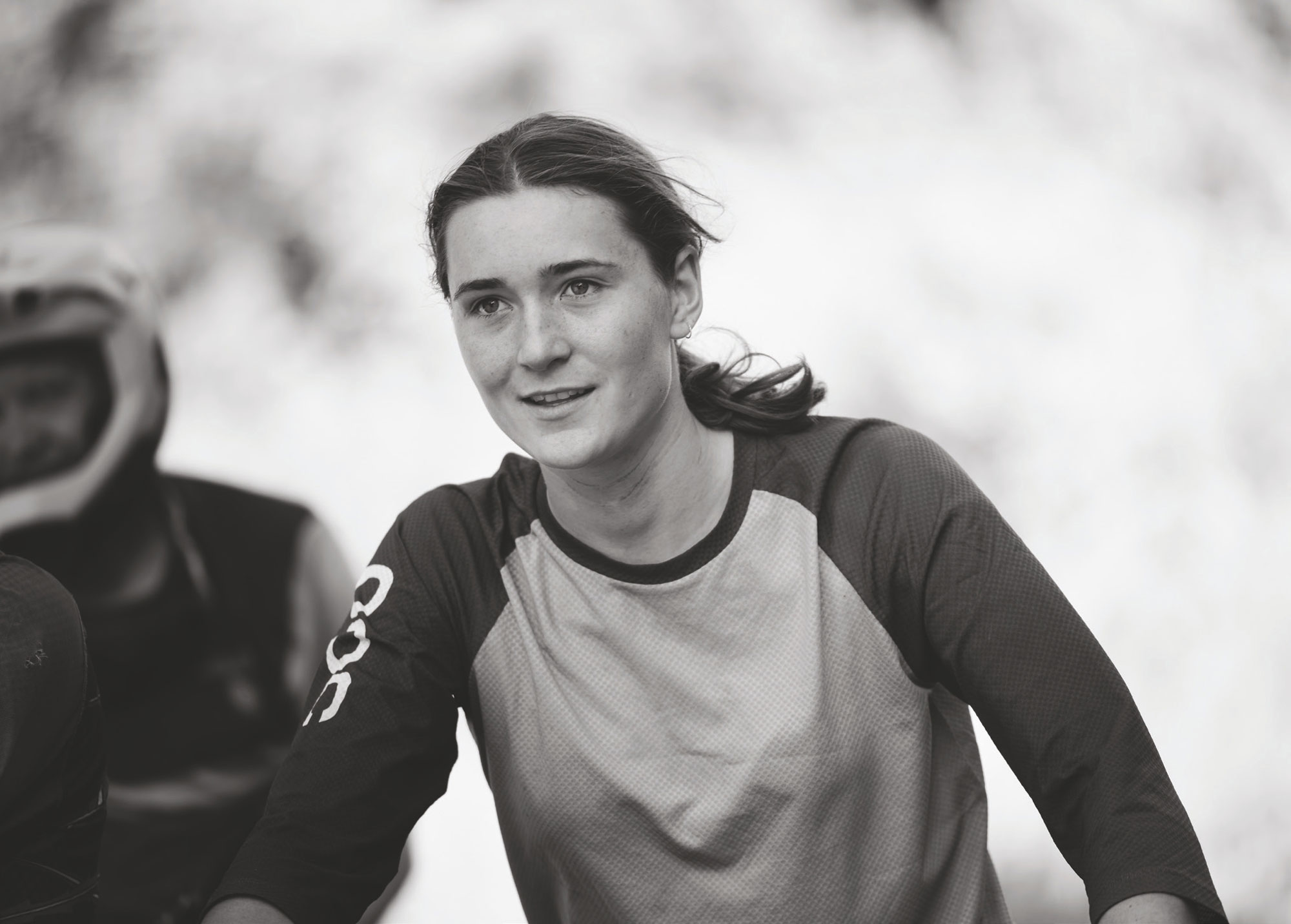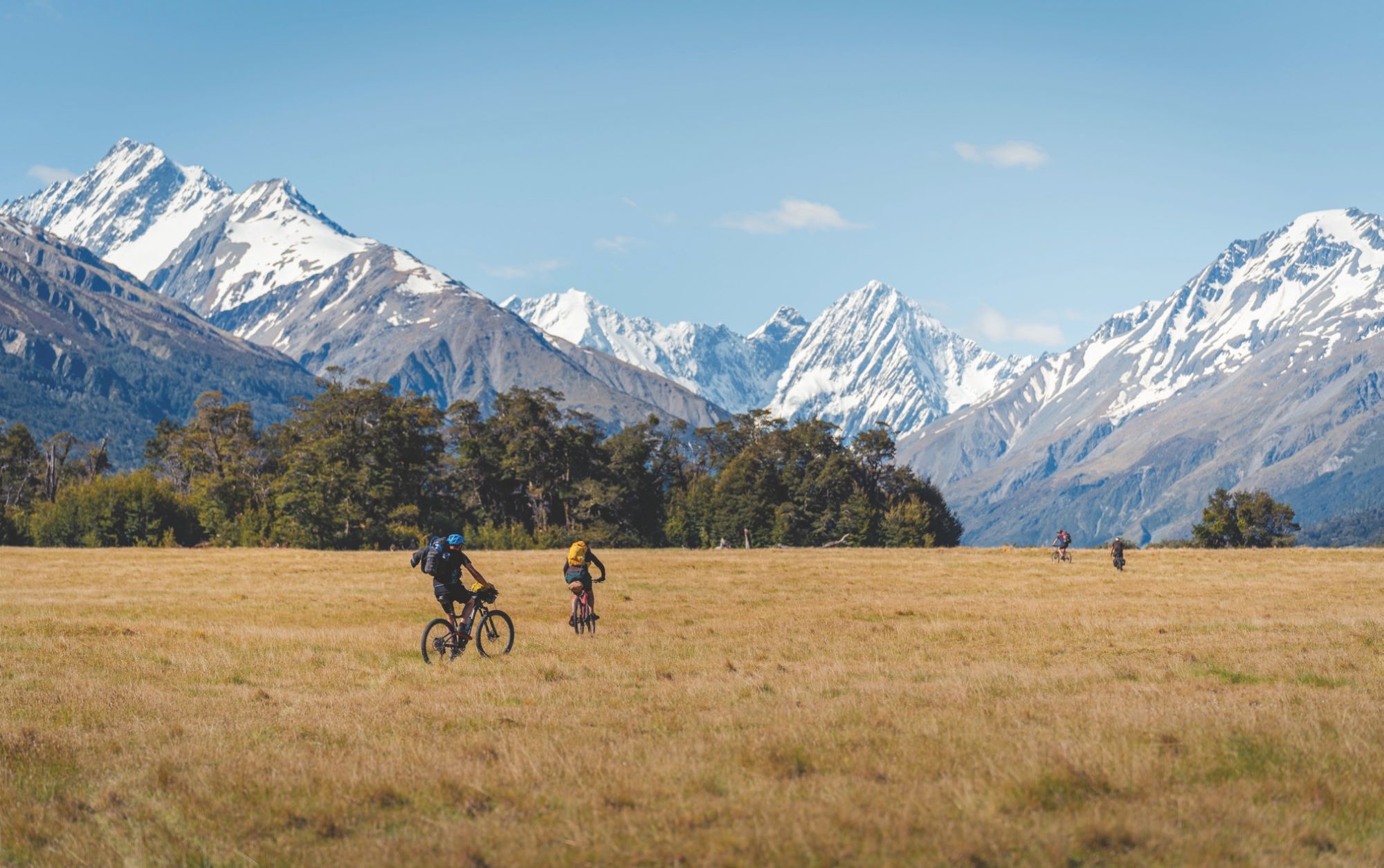SRAM all day
Words Ben Hildred
Images Callum Wood
Sun up to sun down; one final push; extend the loop; another lap; just keep going.
SRAM has created an event in Whistler to celebrate their new transmission, a way to push participants and blur the gap between type one and type two fun; T-type fun, maybe?
The original event was a great success during the Canadian Crankworx stop. Feedback and stories from its inaugural spin justified it as an event to be repeated – but why wait for summer to roll around again in B.C when Queenstown’s best season is in full swing? Let’s do an All Day ride here too!
I was tasked with the effortless mission of persuading 40 friends to enrol for a day of fun and riding bikes with a loosely formed plan. In a town of keen beans it was pretty simple, and with the promise of a beer and food provided by SRAM, at Atlas after their pedal, it was on.
Ten teams of four met at Atlas first thing to get briefed, receive an ‘All Day’ handbook and create their own adventure. Each team was given the same seven checkpoints; get to all the checkpoints, take a team photo, send it to me and return to Atlas. How you get to the check points, the trails you use and the routes you take was up to each team. Meanwhile, I’d be at Atlas ‘all day’ with a colour printer, documenting each team’s mission live, printing off the checkpoints, as well as other images the teams saw fit to send, and creating a story board for everyone to see on return. Easy as!
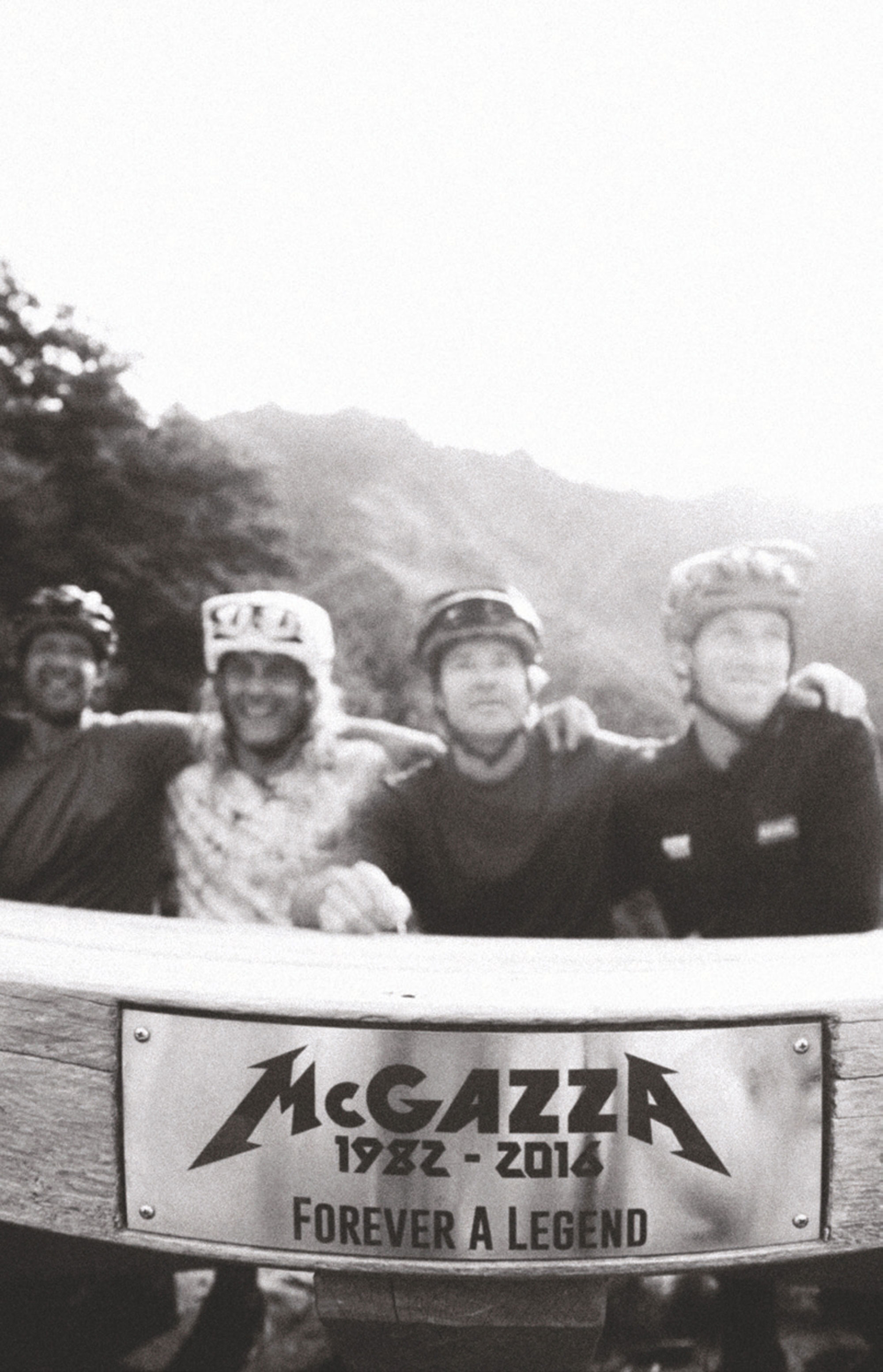
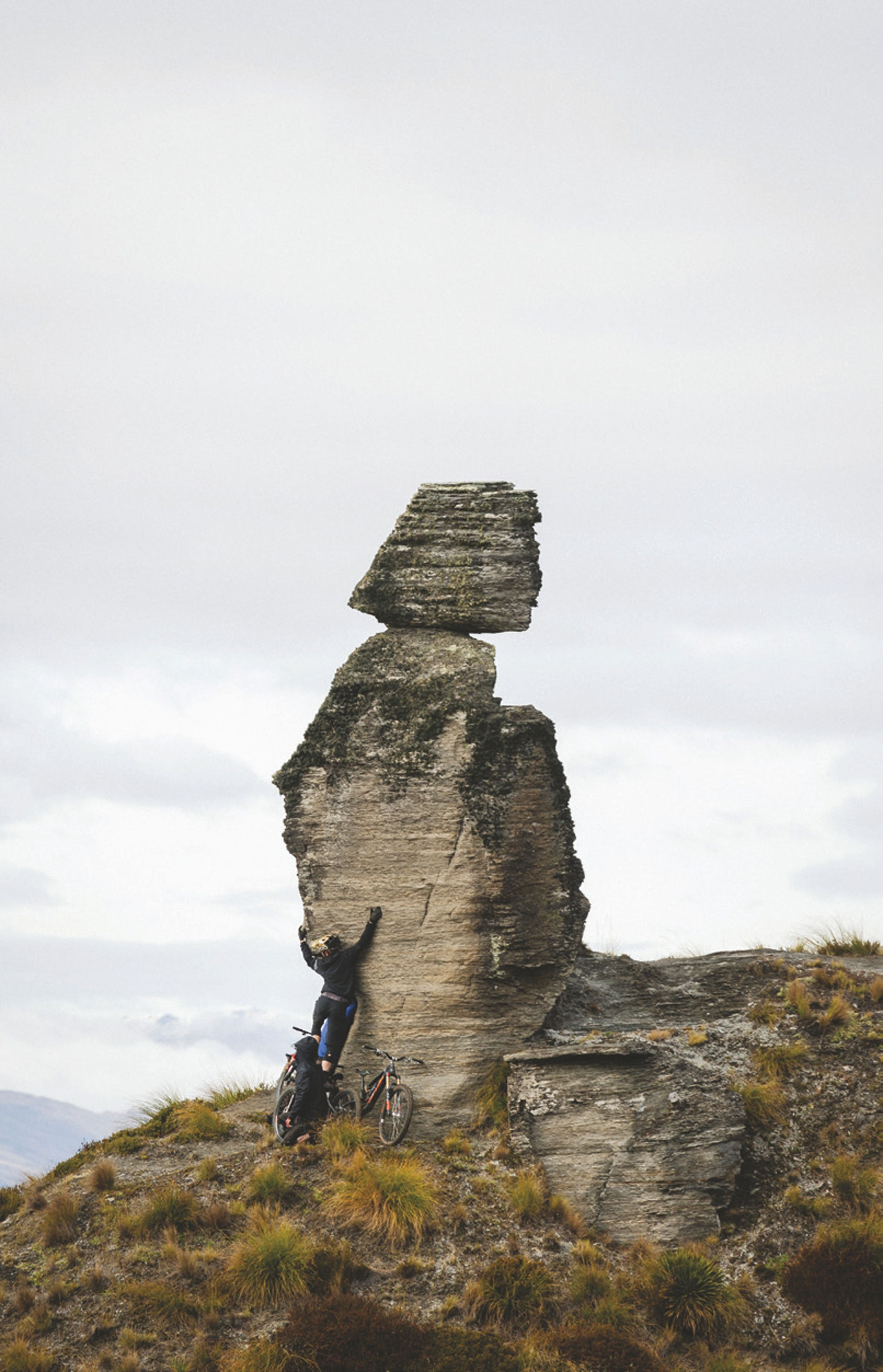
I was tasked with the effortless mission of persuading 40 friends to enrol for a day of fun and riding bikes with a loosely formed plan. In a town of keen beans it was pretty simple, and with the promise of a beer and food provided by SRAM, at Atlas after their pedal, it was on.
I spent the day on my toes, printing and pinning the snap shots of my friends’ ‘trails’ and tribulations. Recovering from a big ride the weekend before, I didn’t think I was in the mood to pedal, although seeing the laughs, predicaments, comradeship and pursuits everyone was on made me remarkably jealous, although stoked everyone was having a blast. The photos tell the stories. The teams were varied: a team of troopers headed by local force on a bike, Erin Greene, went hard on the adventure aspect, taking the most offbeat route over the mountains. Meanwhile, team Scotland, steered by Craig ‘Crug’ Munro shipped his motley crew around, surviving on their favourite fermented fizz – the one consistent every time my phone beamed updates were their smiles. The locations chosen meant teams had to visit Coronet Peak’s famous Rude Rock, grind up to the Ben Lomond saddle, dive down into Skippers Canyon, visit Wynyard’s famous jumps and sit atop McGazzas big table – all elements of an epic Queenstown adventure. Once all checkpoints were checked, teams started to return in the late afternoon, with stories to accompany the timeline of photos that awaited them, pinned up for all to see. Teams had averaged 2000 – 2600 vertical meters over 50 – 65km, mostly off-road. The question that concluded the day: when can we do that all again?! Logan Weber; “I had the best day pedalling I’ve ever had! For sure hope this happens next year!” The All Day ride was Logan’s biggest day on the pedals to date. After severely contracting the type two bug, he went on to complete an Everest a few weeks later! A huge thanks to SRAM for suggesting the event be held in Queenstown, and for funding the day; and to Atlas for hosting us all – the best bar around! What a time.
Checkpoints: McGazza Table; Ben Lomond Saddle; Beached as;Wynyard; Rude Rock; THE Rude Rock; Pack Track and Sack river crossing; Conestown.
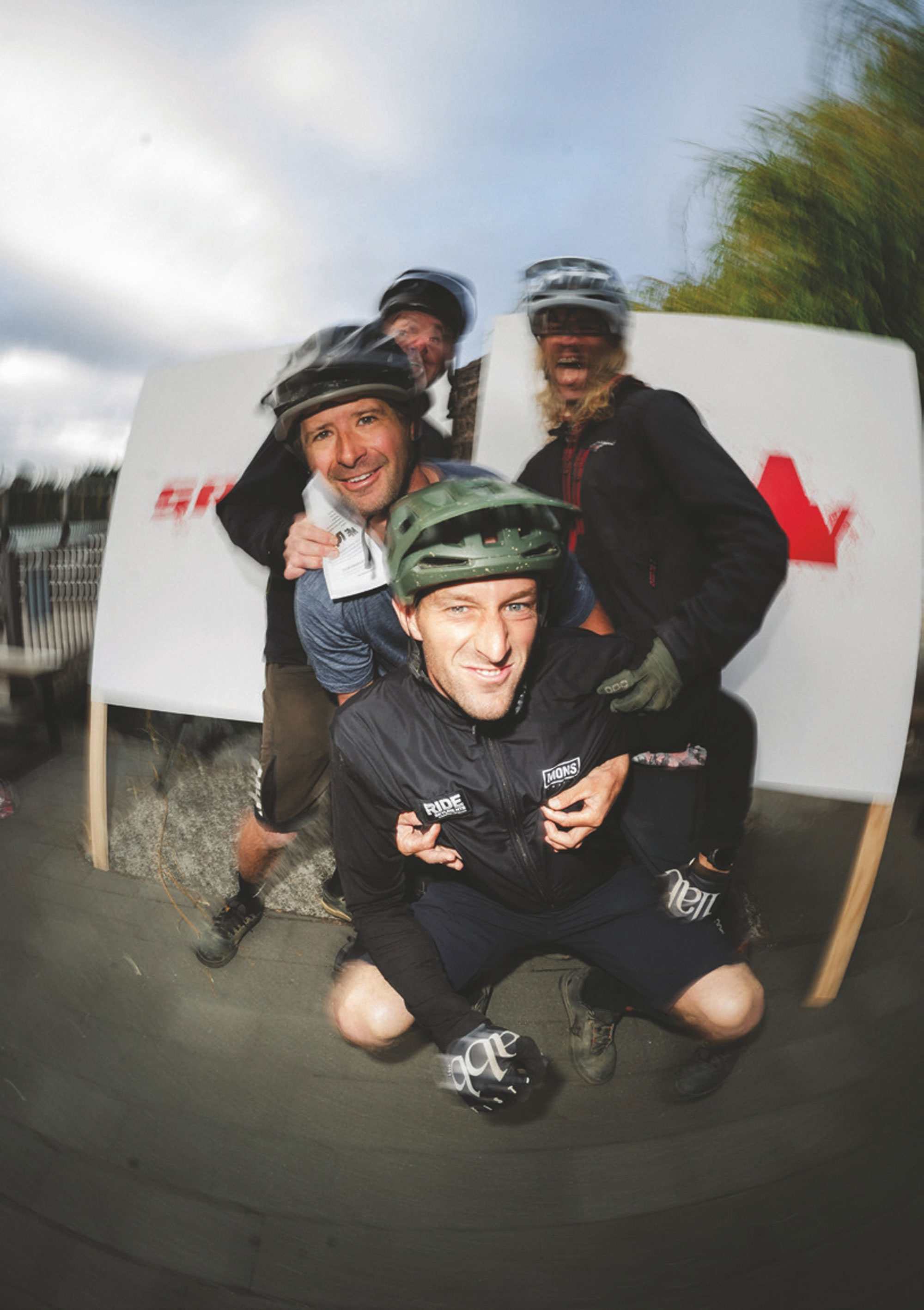
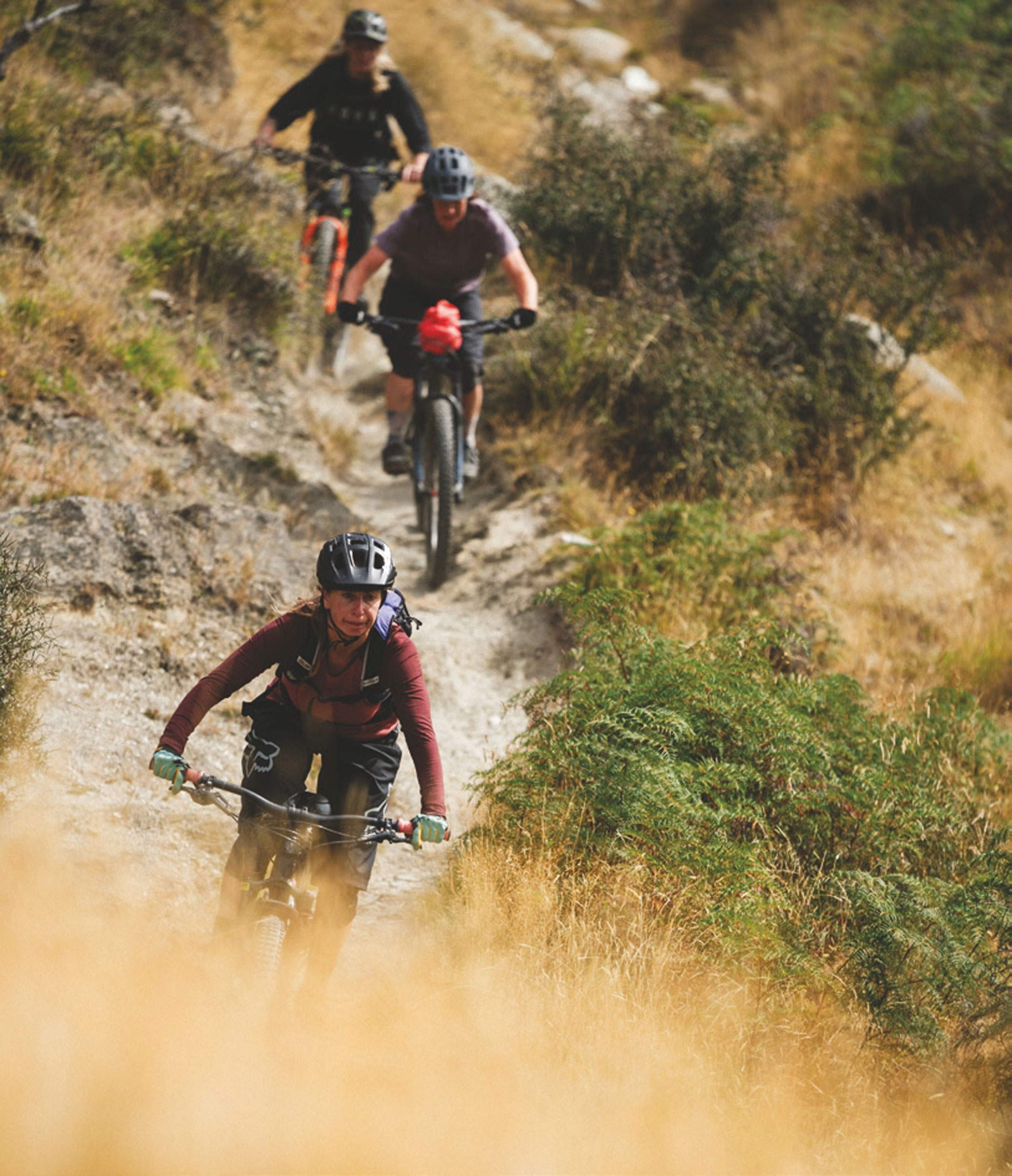
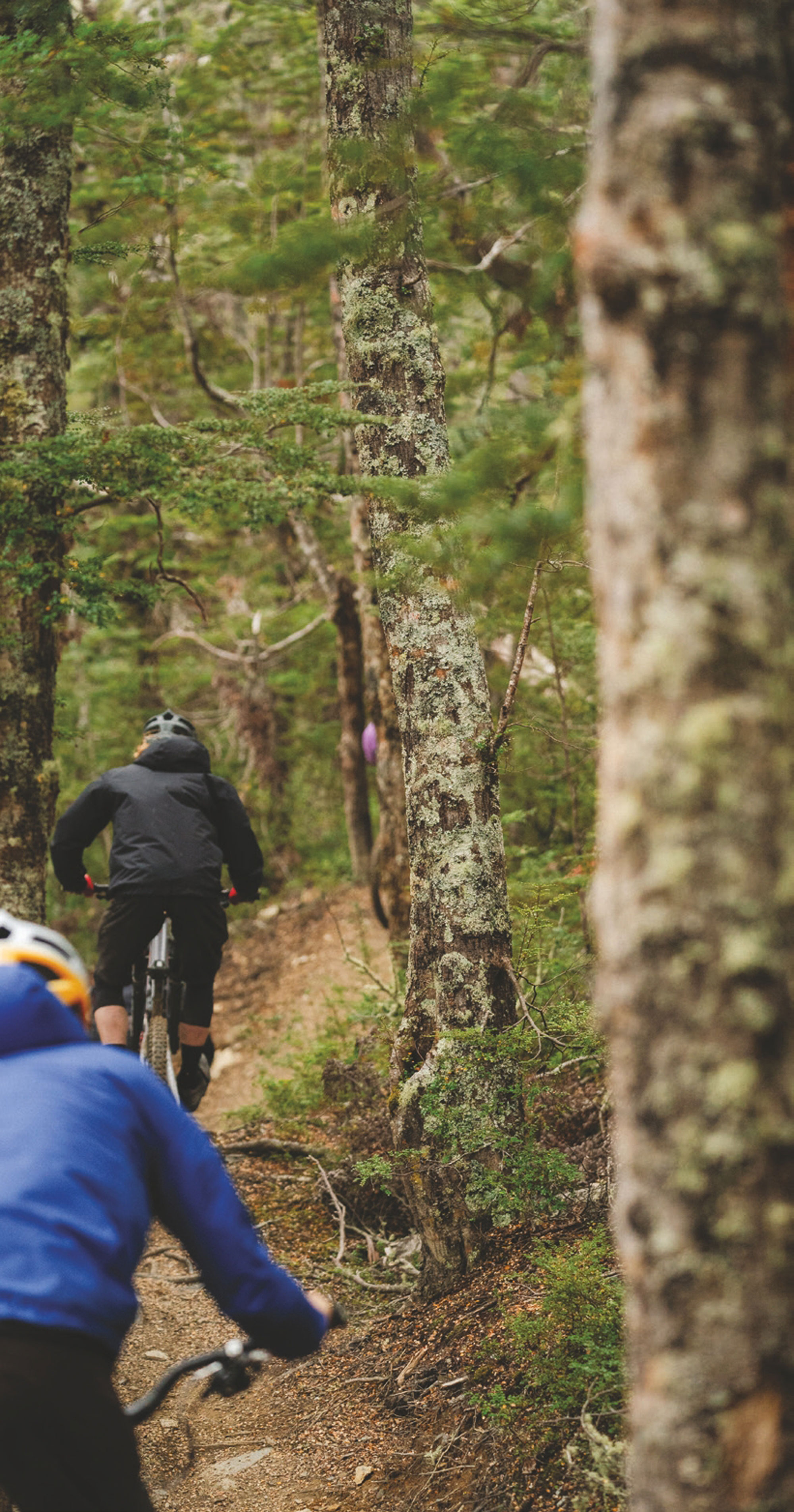
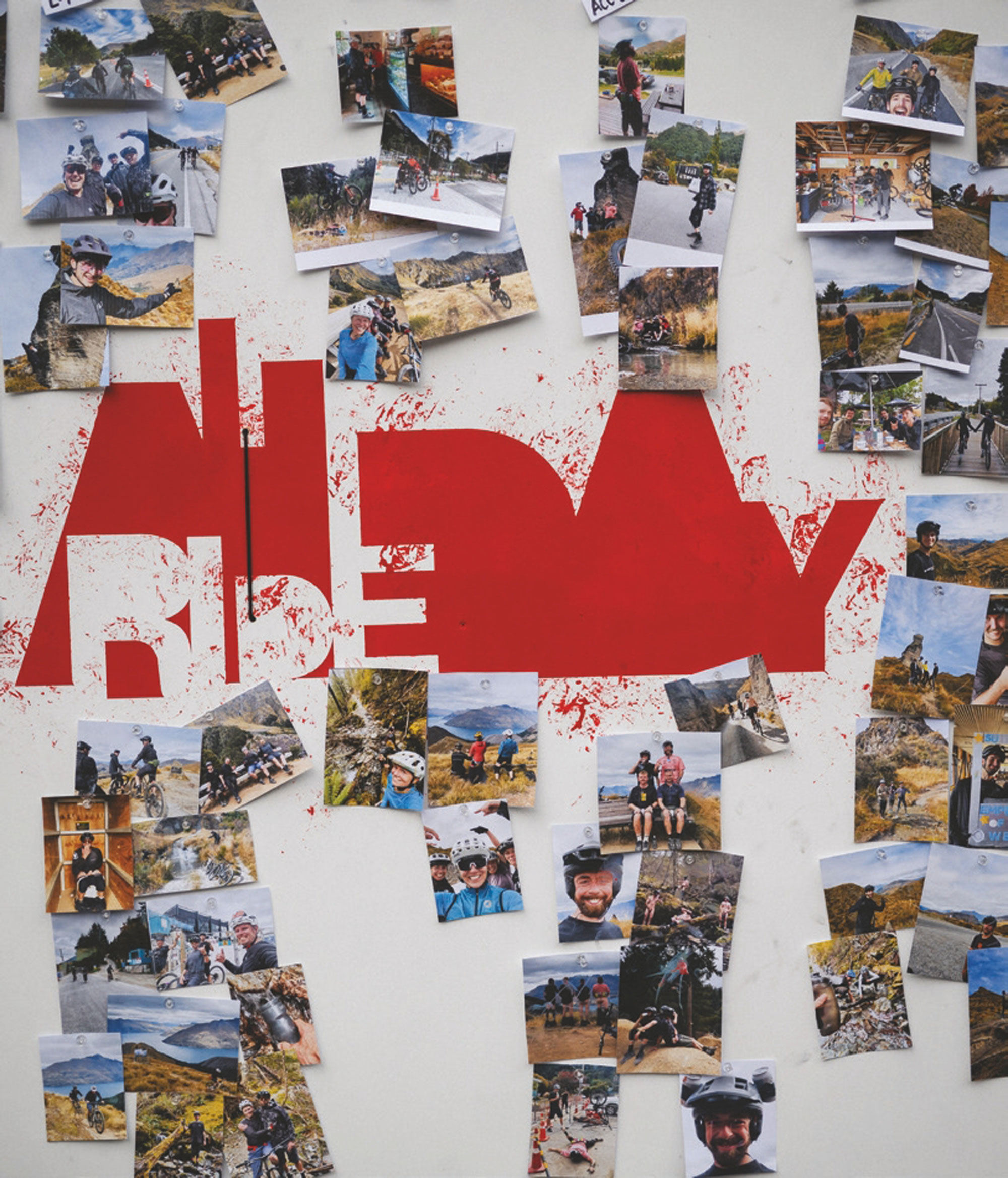
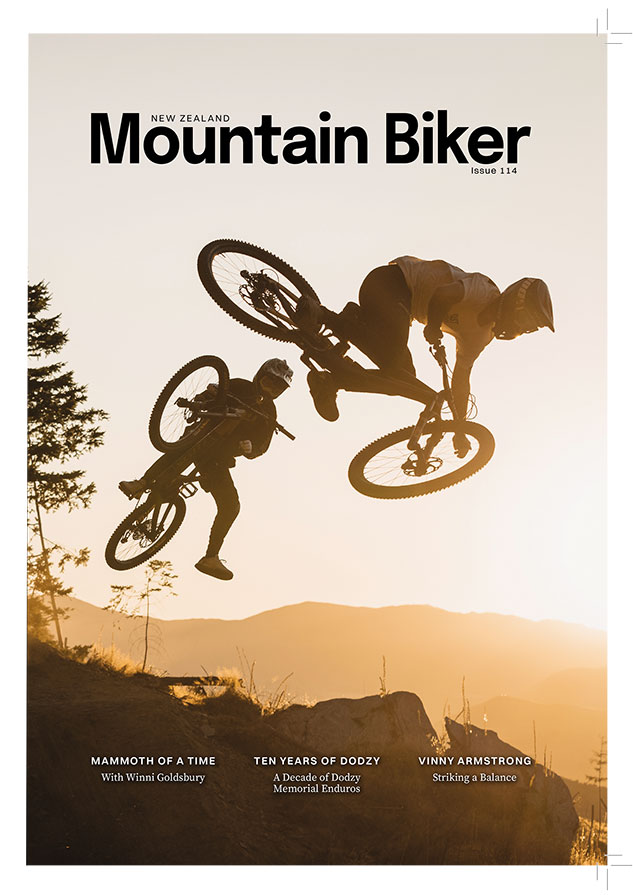
Your time is now
A poem by Noell Coutts
Images by Callum Wood
Seek the rugged wilderness, the mountains and the sky
Feel it, breath it, watch a
Falcon Fly.

Hear the creek beds in the rivers, where miners searched for gold
Abandoned huts and buts of stuff, hear the
stories told.
The lust for gold,
the search, the thrill, the ghosts of days gone by The adrenaline, the buzz of it all, try and you’ll know why

Sometimes you go up, we all go down, sometimes the whole world’s
just spinning around

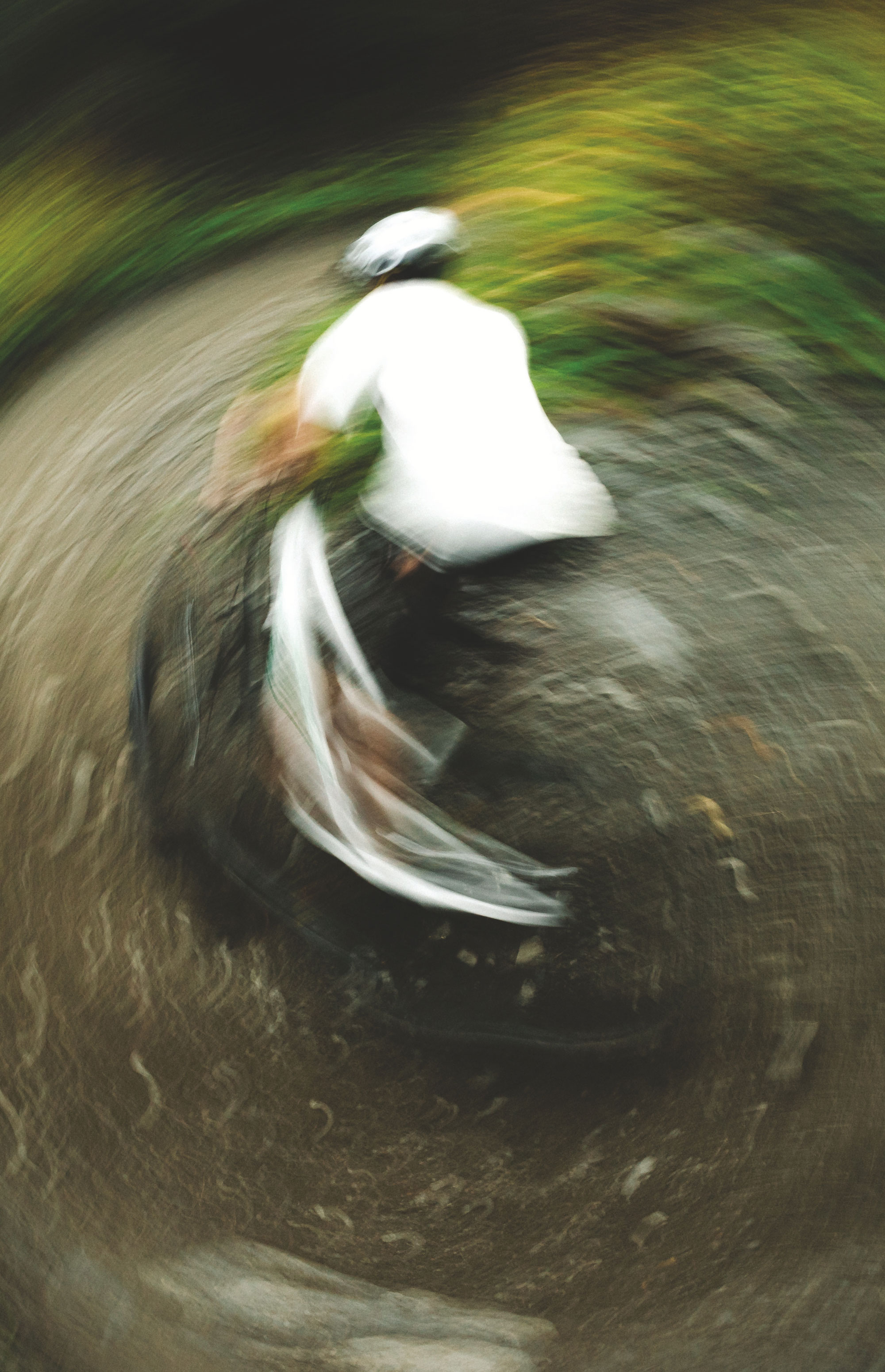
The
excitement
The
rush
The
thrill of it all
The
bumps and the bruises, the jumps and the falls

Time is the treasure, each hour of the day, but remember the clock only can go one way. Your time. Is now.

Coronet Loop Trail – Backcountry Escapism
Words Liam Friary
Images Jake Hood
“Queenstown already has enough trails!” – said no one, ever.
Enter the Coronet Loop Trail – a very welcome addition to the plethora of fantastic trails in and around Queenstown. The iconic southern town provides a home for many forms of riding culture; from gravity and jump to XC, tracks and cycleways, there is something available for everyone to enjoy, from the local shredder to the repeat visitor who heads there every chance they get. And, if you still haven’t experienced the riding in Queenstown, what are you waiting for?! Just be warned: this is the sort of place that will have you returning again and again, as you find more and more trails to ride with every visit.
As for the new Coronet Loop Trail – the Queenstown Trails Trust, in collaboration with Soho Properties, the QEII National Trust and Mahu Whenua – opened it in March 2022, after five years of hard graft and planning. The remoteness of this particular trail only emphasises just what a remarkable feat this collaboration – and the trail building itself – really is. The Queenstown Trails Trust is a charitable trust responsible not only for the planning and development of the Coronet Loop Trail, but more than 200km of trails in the Whakatipu Basin as well.
As far as backcountry mountain biking trails go – the Coronet Loop Trail has it all. The singletrack winds its way into the wild, through lush bush and across river gorges, deep in Queenstown’s remote backcountry. All of this, plus the rich history of mining in the area, ensures a non-stop sense of wonder as you make your way around the loop. The 50km trail has been well-crafted by technical trail builders and teams of volunteers, navigating its way around the mountains with gorgeous vistas that are forever changing. In terms of fitness, a moderate level is recommended due to the 1700m elevation gain across the entire loop.
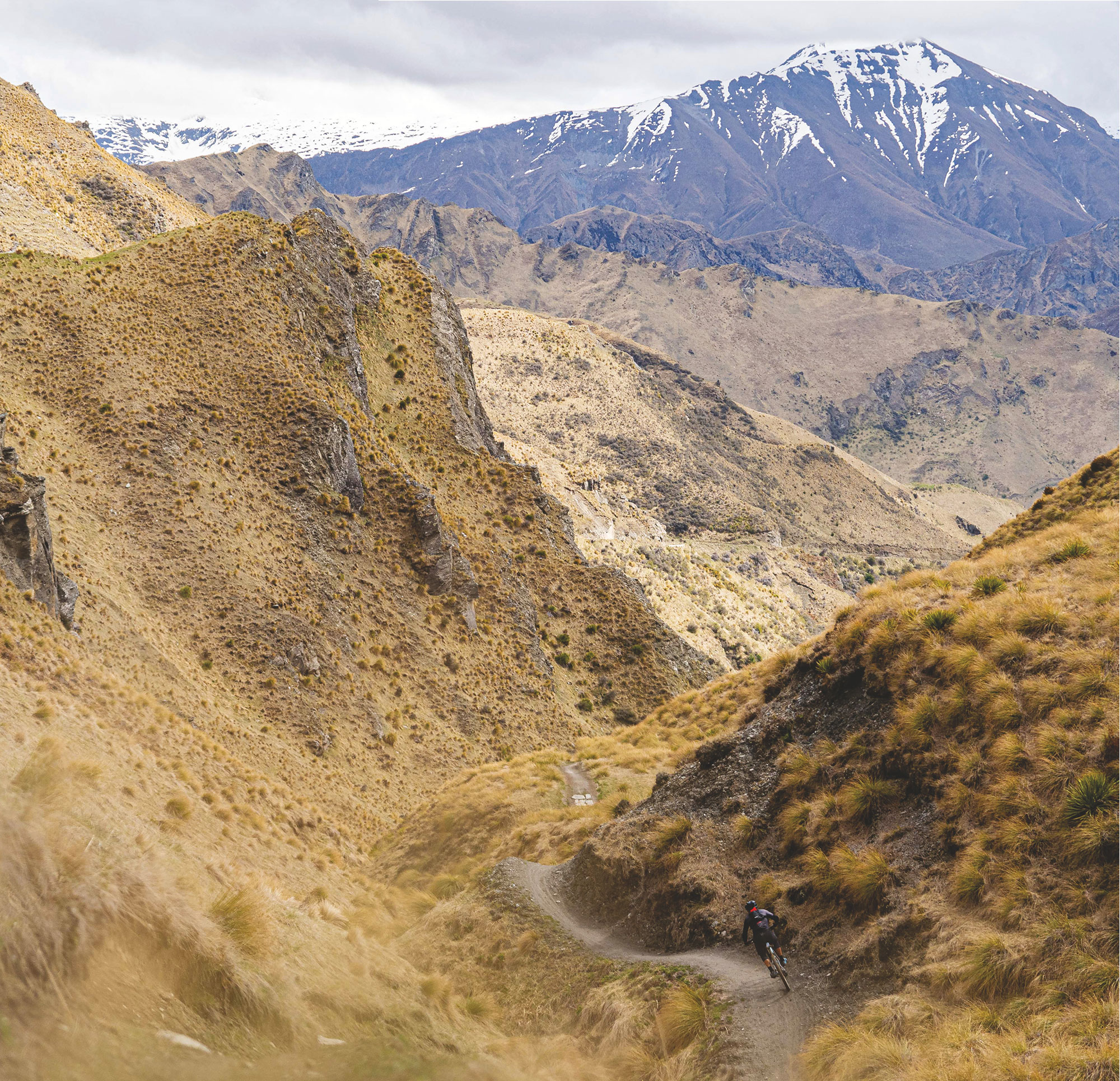
The remoteness of this particular trail only emphasises just what a remarkable feat this collaboration – and the trail building itself – really is.
The History
The area was once a hot spot for gold miners, who arrived in the 1860s, seeking their fortune in the Shotover and Arrow Rivers. It was a bleak existence for those who had travelled from far and wide in an attempt to strike it rich, and although 340kg of gold was mined from the Arrow River in 1863, many were unsuccessful in their attempts to find their fortune. The remoteness of the area required some hairy travel techniques just to get to it, making it hard to believe it’s now possible to complete this loop in a single day of enjoyment aboard a modern bicycle.
The Ride
As mentioned, the Coronet Loop Trail is a 50km track, which is graded as an intermediate Grade 3, and takes roughly 4 – 8 hours to complete. It’s considered a more challenging experience than the rest of the Queenstown Trail Great Ride, so it’s worth bearing that in mind before setting out for the day. All that is to say, if it’s a backcountry adventure you’re after, this is the trail for you.
The trail can be ridden in either direction and is a two-way track that is shared with downhill riders and walkers alike. It’s worth noting that there is a more technically challenging section of trail as it climbs up and over into Skippers Canyon, on the Tradesman’s and Pack Track and Sack trails – to bypass this, you’ll need to take the Skippers Pack Track or follow Skippers Road before joining the climb up to Greengate Saddle. Remember this is remote backcountry, so we recommend pre-trail fuelling in Arrowtown before you head out, like we did, carrying plenty of food and hydration, and celebrating your achievement when you return later in the day.
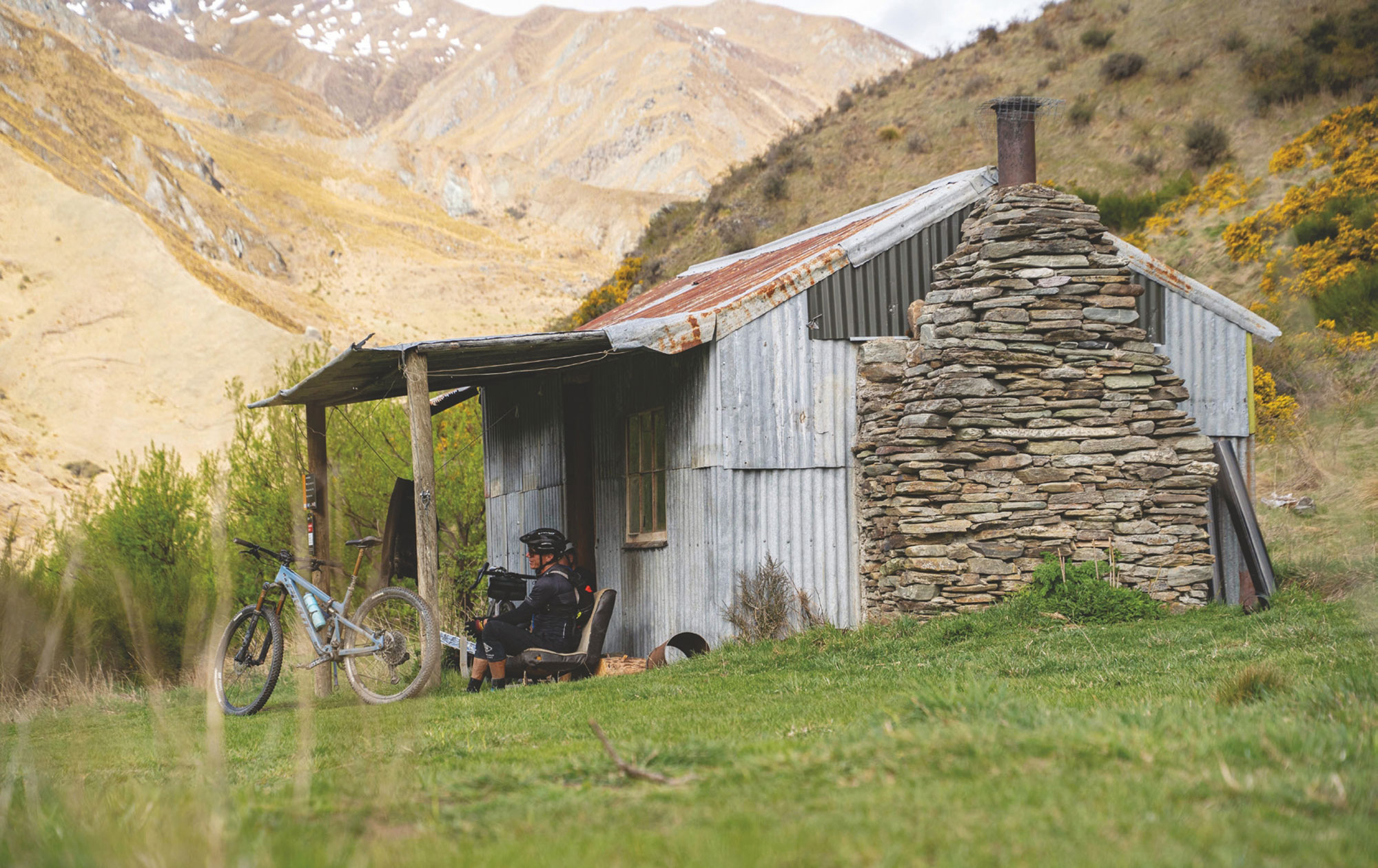
Golden mountains, fresh creek crossings and a couple of spectacular waterfalls.
The Experience
We took our own advice and grabbed a caffeinated brew and a scone before we tackled the loop from the trailhead in Arrowtown. Mark (Willy) Williams, CEO of Queenstown Trails Trust, legendary local rider and mountain bike racer, would be guiding us for this ride and, after our second round of brews, we were ready. I pedalled for a few minutes and, before I knew it, we were buried in the beautiful Bush Creek. The trail follows the creek through native beech forest and, thanks to another recent upgrade, now has several sturdy bridges fording the numerous river crossings. The trail climbs up a series of switchbacks onto the southern face of Coronet Peak. We stopped for a short break to eat a snack, drink water, and take in the splendid scenery before continuing to follow the Coronet Face Water Race. This precarious trail, hugging the side of the mountain, was previously used in the gold rush era to transport water to the Arthur’s Point sluicings, some remnants of the past remain as a reminder of the area’s rich history.
We got around the southern side of Coronet Peak, with Lake Whakatipu glimmering in the distance. I was in awe of the view but didn’t have the breath to say much as we summitted the highest point of Skippers Saddle (949m). I have ventured into Skippers Canyon by bike numerous times and was excited to be back again on the recently renovated Pack Sack and Track trail. The long view down the aptly named Long Gully sees the trail twist and turn out of sight. It’s here that you transition into more backcountry riding and leave the confines of society behind. The trail helps you easily navigate this transition as it twists tightly down the expansive, dusty valley. I descended into the trail, where the rowdiness of riding a gravel bike quickly became evident. I was nearly bucked from my bike at the beginning but managed to stay upright somehow. We transitioned back onto flowy singletrack, which took us down the mountainside, offering endless picturesque views.
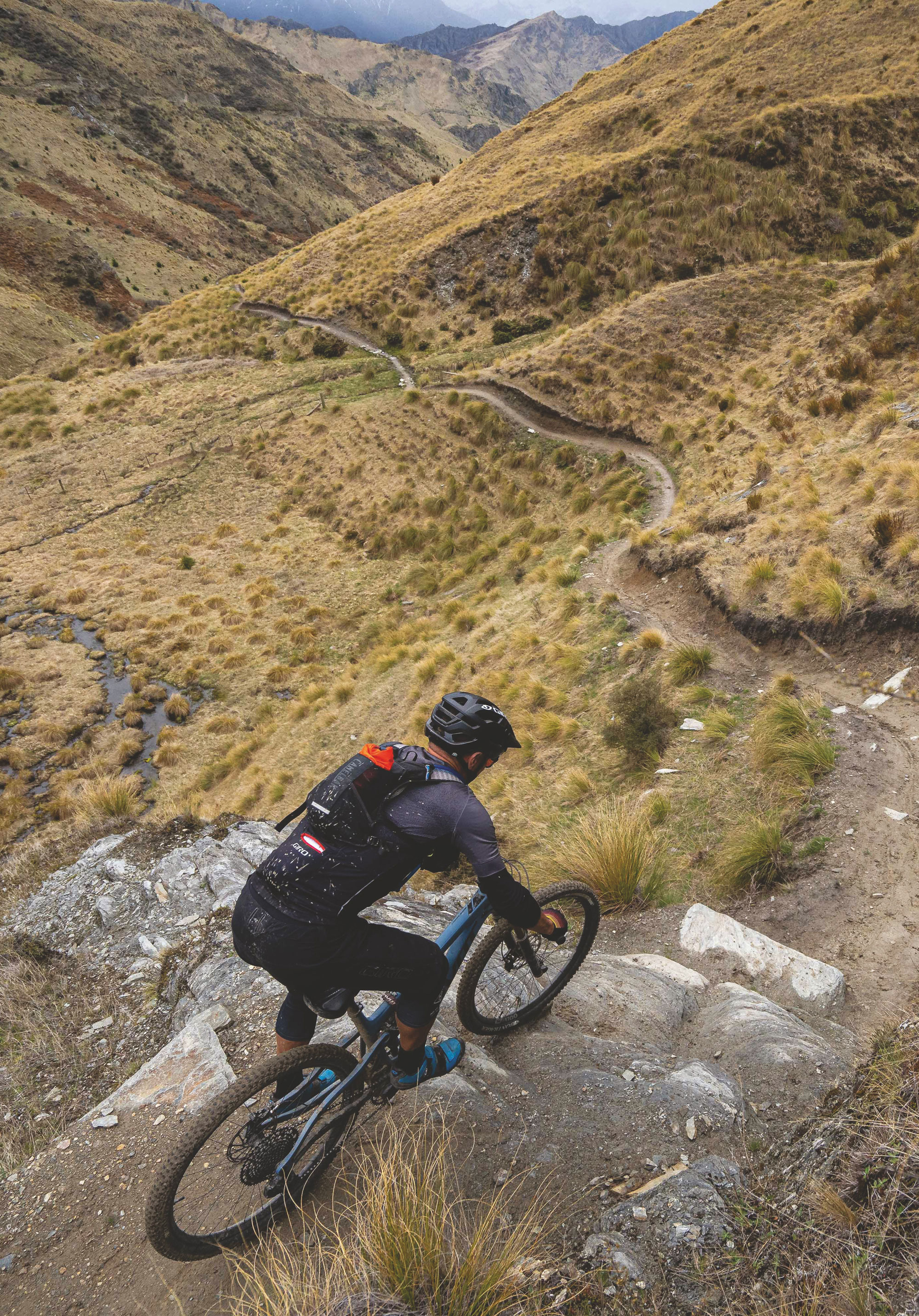
As far as backcountry mountain biking trails go – the Coronet Loop Trail has it all.
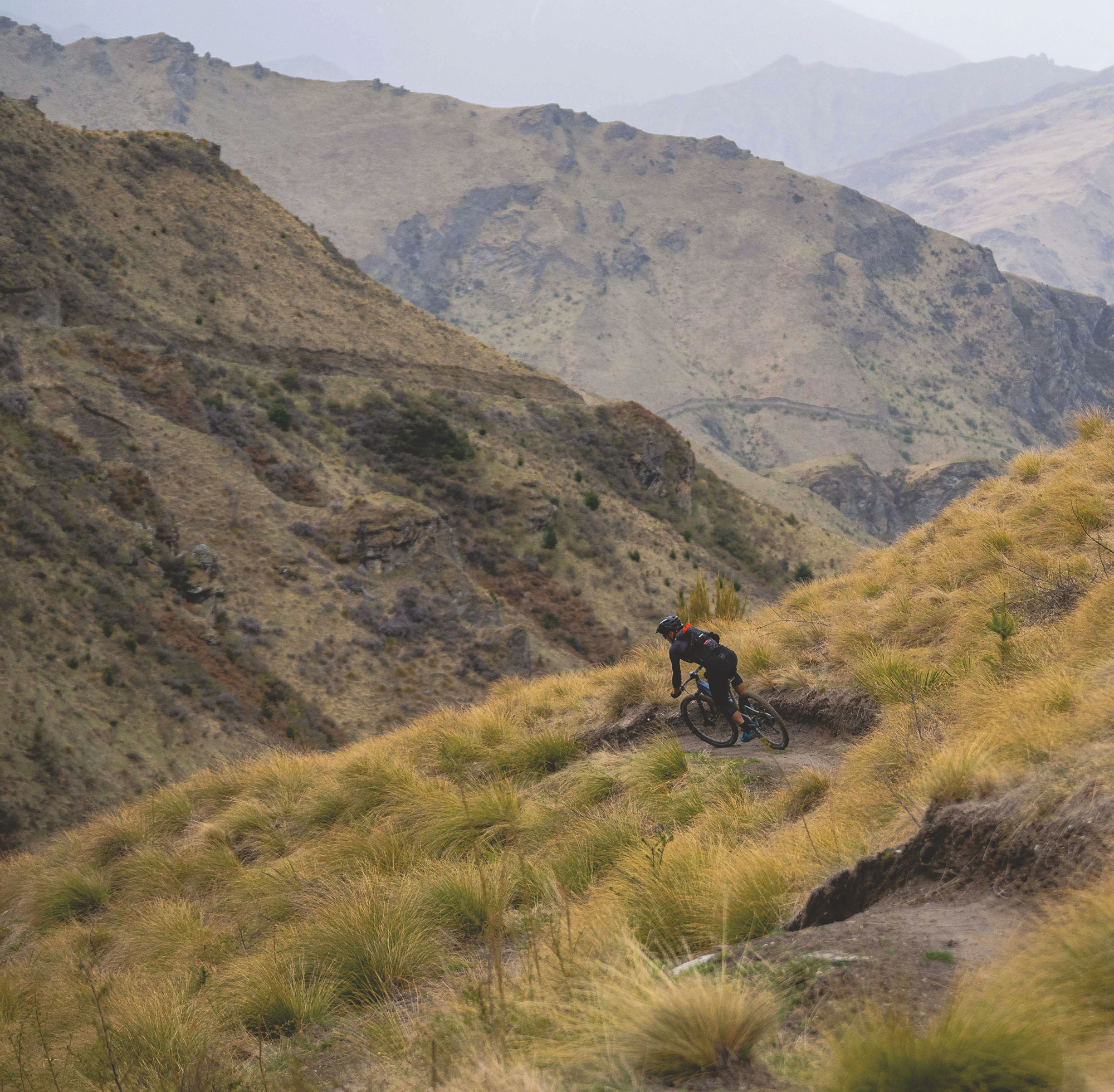
Mentally, I transcended into a flow-state where the worries of the world evaporated as I focused on the physical task at hand: riding the bike. Being out in the wilderness really makes you switch off and helps you to restore; there’s something about being in a remote location that really allows you to shift gears from the blur of everyday life into something more purposeful and intentional. The jaw-dropping scenery helps with that, too. Soon, the situation had returned to climbing and a series of switchbacks up Greengates Saddle. The nuggety climb was worth it, however, as Greengates Hut was down a fun and flowing descent. This was our next snack stop – at the 25km mark, roughly halfway through the trip. Although the day had started out sunny and warm, as we reached the saddle, thick storm clouds gathered momentum and suddenly the lights turned out. Beautiful blonde mountain grasses turned to dark beige. The mountain tops were now completely buried in thick clouds and visibility was heavily reduced. Our rain jackets were quickly pulled around our shoulders as the heavens opened. An intense, but short, rainstorm bucketed down. The historic Greengates Hut provided us with shelter, just as it would have done for many years gone by. Legend has it that the nearby Greengates Hotel, at the confluence with Deep Creek, spent its final years being run as a piggery, serving bacon sandwiches to weary miners heading out to make their fortune. All that remains now, though, is an ageing schist hut with four bunk beds, a few worn pots and an old fireplace. The rain started to clear, so we ventured into the next part of the trail.
We headed upstream and over the precariously perched Picnic Rock before a bloody fun, long descent towards the valley floor. The remoteness was evident on this part of the trail; it’s an area that until now has been inaccessible – thankfully it’s been opened up for people to enjoy, as the scenes are unreal. Golden mountains, fresh creek crossings and a couple of spectacular waterfalls. The final climb for the day’s excursion awaited us. A dirt track was neatly etched into the landscape, eventually leading us to Eight Mile Hut. The storm clouds passed, and the sun’s afternoon rays defined the mountain’s shadows. It’s here that I felt fatigued but stoked to be out on such an incredible trail. More snack consumption made the last push easier. Before tackling the final section of trail, Willy and I shared tales about our lives to date. I was fascinated to learn how his endurance racing career saw him on podiums at epics such as Pioneer, Cape Epic, Trans Rockies and BC Bike Race – to name a few. Throughout his time at Queenstown Trails Trust, he’s helped develop an incredible network of trails in the Southern Lakes District, with more routes planned to open in the near future.
We continued on and, before long, we merged with the Macetown Road. This is a sandy, double- track, 4×4 road that’s got a ton of creek crossings through the Arrow River and plenty of potholes. You need to be diligent and, as the day takes its toll, that’s not always easy. The road is quite remarkable and it’s astounding that it was built back in 1884. I battled the sandy base – and my gritty drivetrain – down the road. For a more challenging finish to the day, an alternative miner’s track is available, marked with orange DOC triangles. It’s exposed, overgrown and not for the faint-hearted, but it’s there for anyone brave enough to seek it out – not us on this occasion! On reaching the Norman Spencer bridge and a few more signs of civilisation, the trail narrowed, with a few stairs to climb. We again rode through dense bush and past plenty of waterfalls leading us back to Arrowtown. The experience of the day mixed with tiredness and joyfulness, and my gratitude to those who have opened up this part of our country for us all to enjoy.

Deathgrip Down Under
Words & Images Cameron MacKenzie
A look behind the curtain at one of this year’s biggest feature films, filmed in our very own backyard.
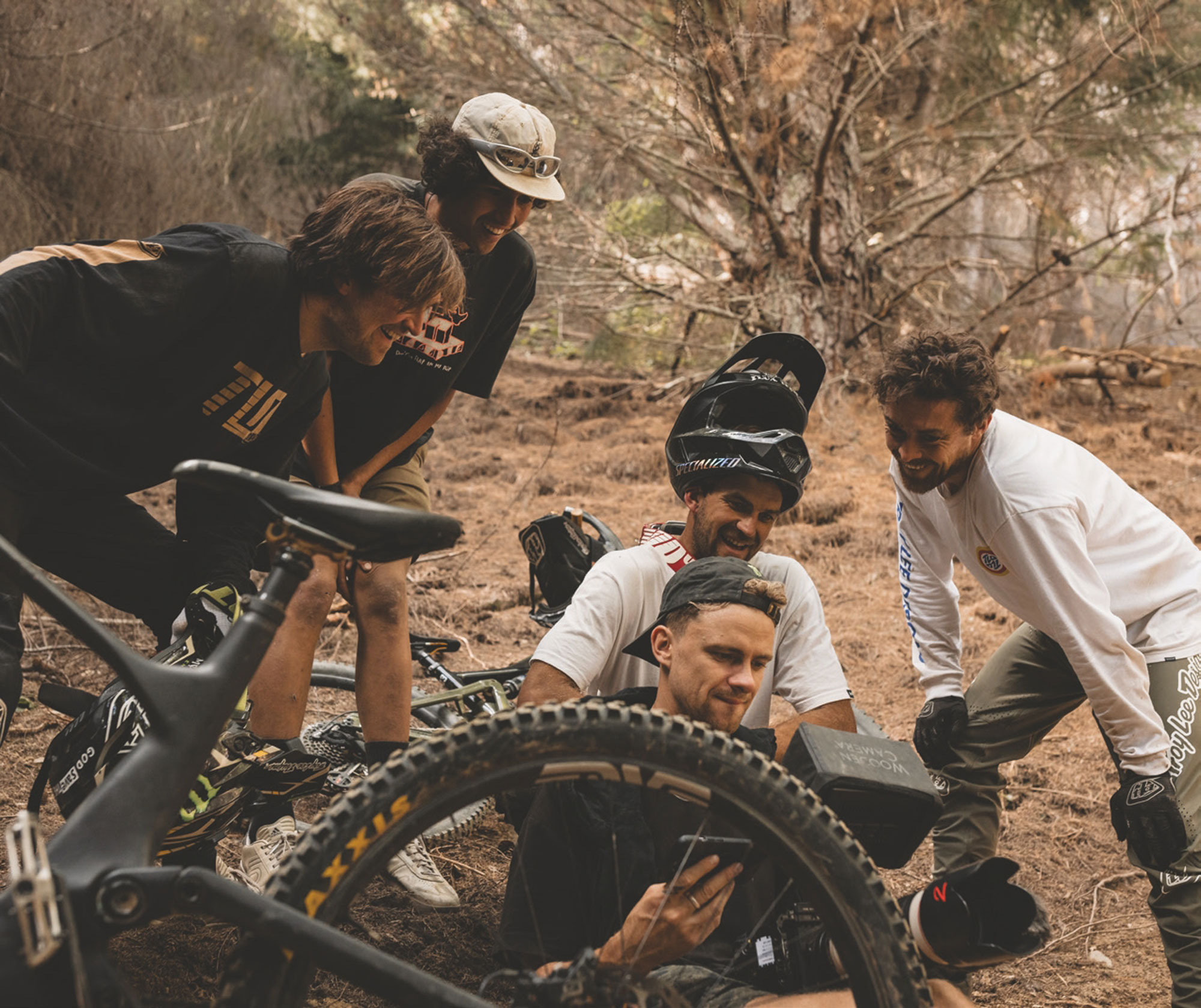
Clay Porter and Brendan Fairclough are two names synonymous with mountain biking – both having been influencing the way the sport is seen for close to 20 years each. Whether it Clay’s signature film making, or Brendan’s ability to blown up turns, with the internet it was inevitable they’d one day collaborate on something big and stamp their mark in the history books. Well, they did, all the way back in 2017, with the release of Deathgrip.


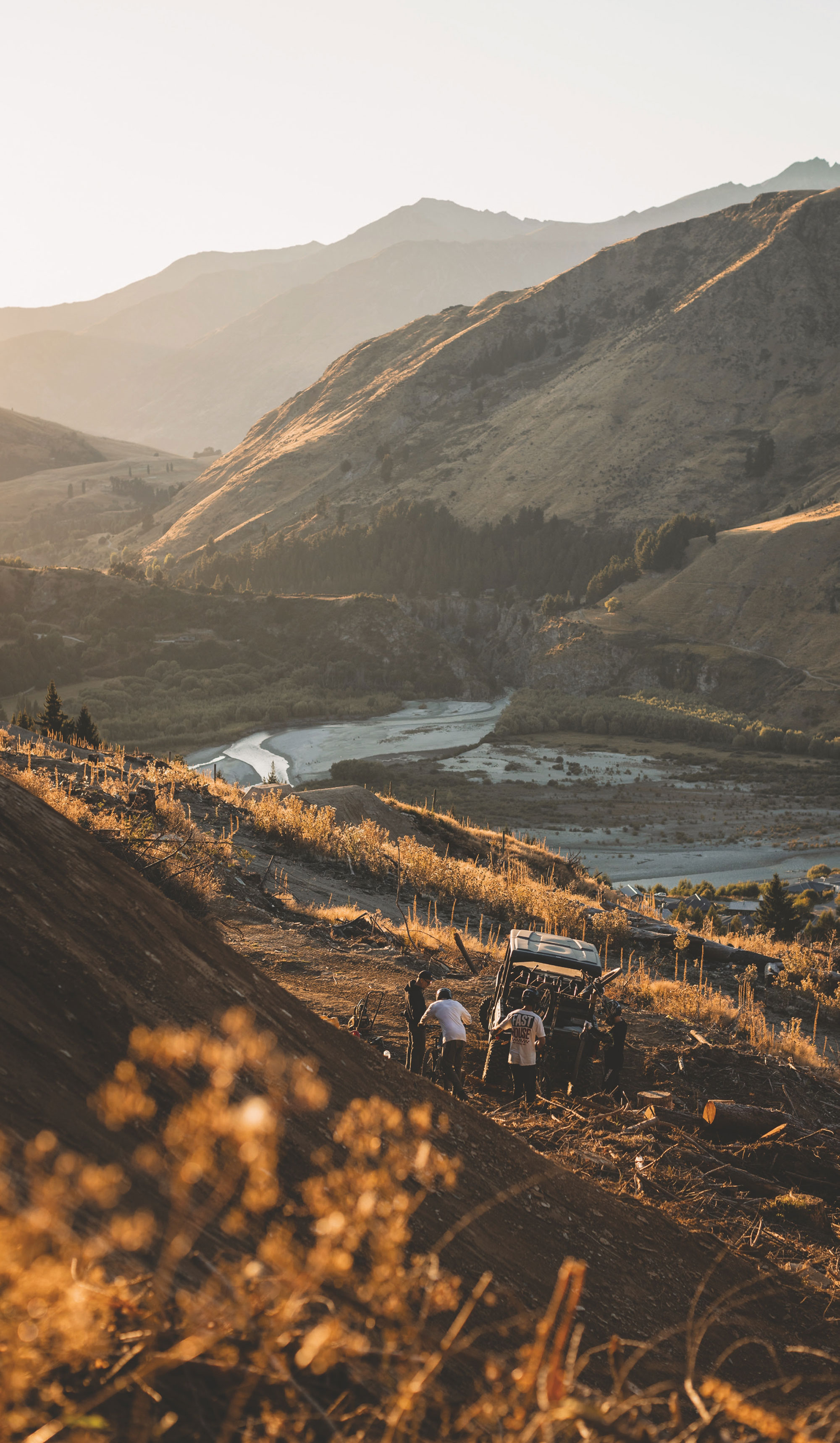
Since then, though, everyone’s been asking if there would be a second film – and finally, here we are. Deathgrip 2 is in the bag, and beginning to premiere all round the world, so it’s time to pull the curtain back on their first New Zealand segment.

The whole basis of Deathgrip is Brendan riding with like-minded riders, some of the best in the world in their respective areas, ripping the side- knobs off of some of the best trails and features you’ve seen. It was a no brainer that Bren would look to his long-time friend, Dave McMillan, and his hometown of Queenstown, to shoot a segment for DG2.

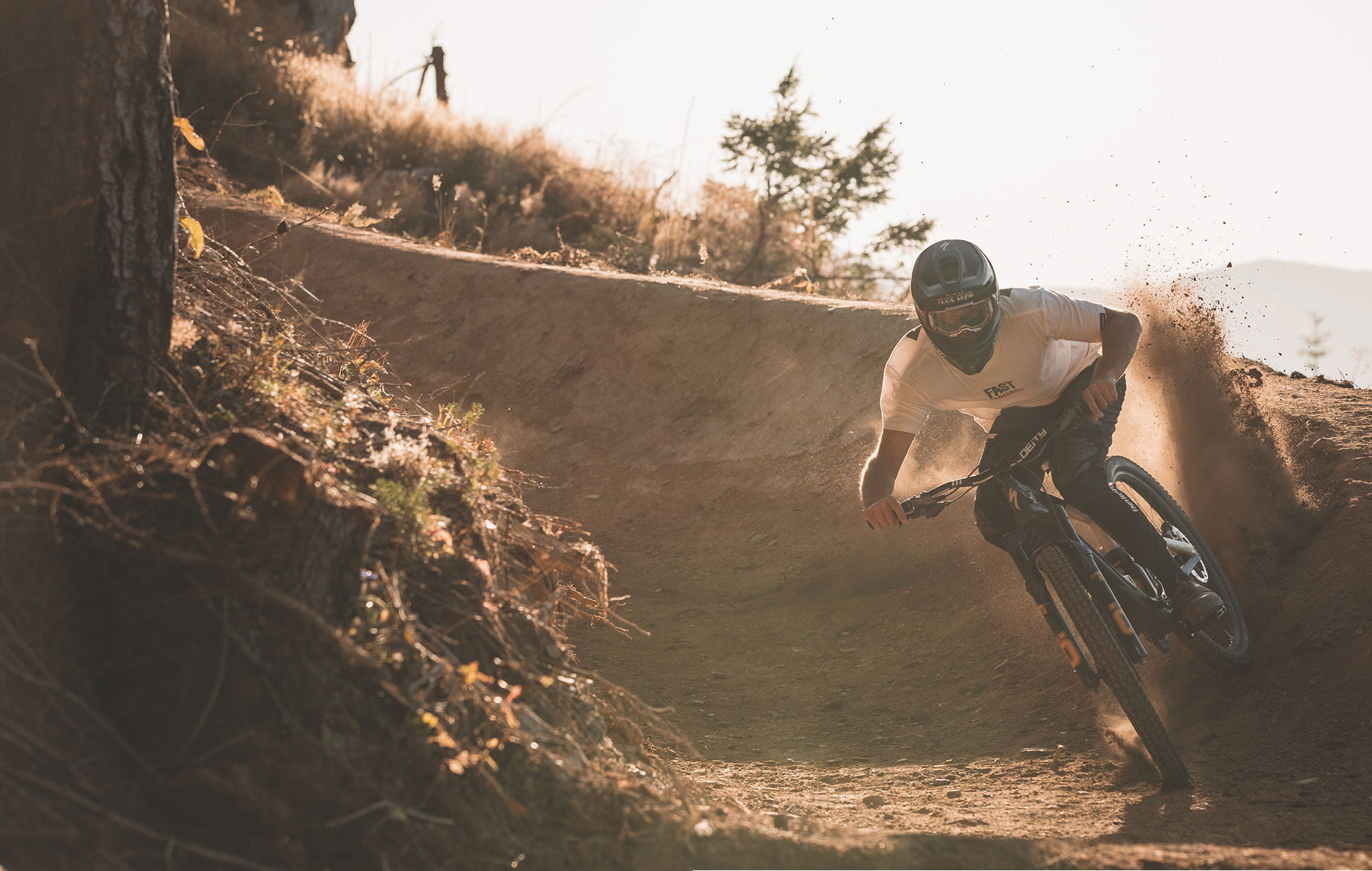
Dave, an owner of Flux Trail, was poised particularly well to pull off something epic for the film, with Flux Trail having their own private compound tucked away in an undisclosed location, and the resources to build anything they please.
What Dave managed to create was only fit for an all time crew – Olly Wilkins, Brendan Fairclough (also riding), with Clay Porter, Rupert Walker and Chris Seager on the dad-cams.
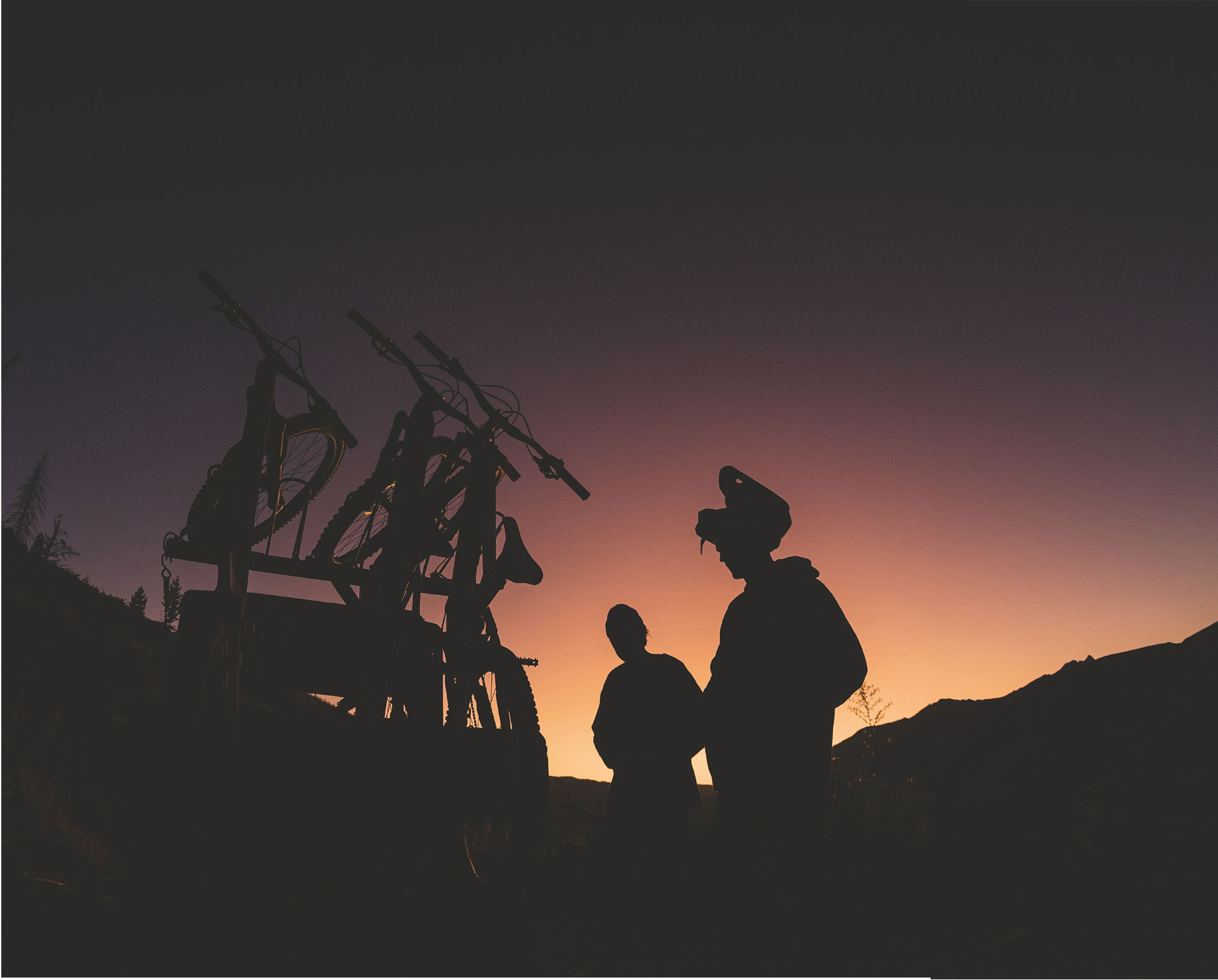
Over the course of four days, the team set to work “stacking clips”, filming every feature from every which angle – blending a lot of modern day techniques and angles together to create an experience for the viewer that will truly wow and inspire. Sun up to sundown is often the order for projects like this, and Queenstown really turned it on.
Stay tuned for more information on a New Zealand premiere, and where to buy a copy of the film.


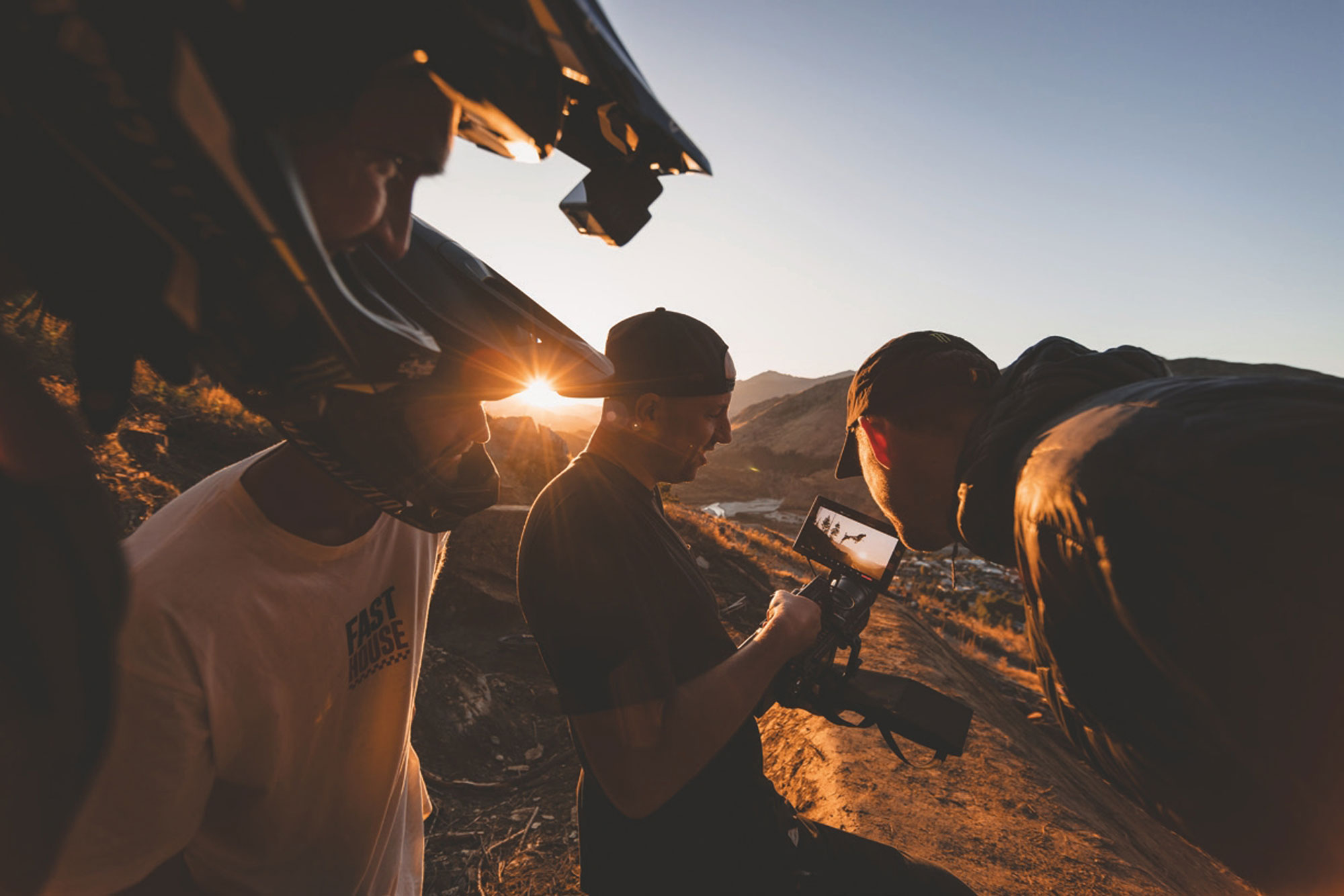

The Alternative Volunteer Collective
Words Lester Perry
Images Dominic Blissett
The underground trail builders shaping Christchurch trails.
The winter of 2022 was excessively wet, and the Christchurch Adventure Park (CAP) was frequently closed on weekends to preserve the trails. The closures gave CAP riders two options: get grumpy about the park being closed, or take advantage of closed (and consequently, empty) trails to improve them; making lemonade from lemons. Aaron Hogg had a crew of volunteers regularly digging on a Sunday morning, but only some of the people keen to be involved could make that timing work, leaving the door open for a second volunteer crew to get together.
Mark Stewart, Jeremy Burke, and Hamish Petty identified a part on the 3rd Base trail that they thought needed fixing, so they took it upon themselves to get it sorted. Despite not initially informing Aaron, Mark flicked some photos of the completed work through to him, and he was understandably stoked with their efforts and encouraged them to continue their mahi. This tight three-man crew formed the foundation for the Alternative Volly Collective (AVC), and they began to attract more volunteers to their dig sessions.
CAP remained unaware of their work throughout the rest of 2022. Mark, Jeremy and Hamish’s riding mates, as well as members from Aaron’s digging crew, began joining their efforts and spreading the word outside their immediate circle by using Instagram to showcase their maintenance work, attracting more members and expanding the crew to a current total of over 50!
By 2023, the group’s relationship with CAP became more formal, and they requested to be kept up-to-date with planned work so their patrol team could ensure adequate signage was in place – safety first and all that.
Securing funding from GC Super D (via Gravity Canterbury) and with assistance from the Ground Effect slush fund, the AVC has been able to fund additional tools for their projects. Their impactful work has extended beyond CAP, with several members contributing to dig days across the hills in Victoria Park, further north at Middle Hill, and on the hallowed grounds of the Craigieburn Forest Park trails.
If there’s a trail to build or maintenance to be done, the AVC is now big enough that it’s highly likely a mighty group can assemble and lend a hand. Many hands make light work, and enjoying the fruits of their labour is all the pat on the back they need.
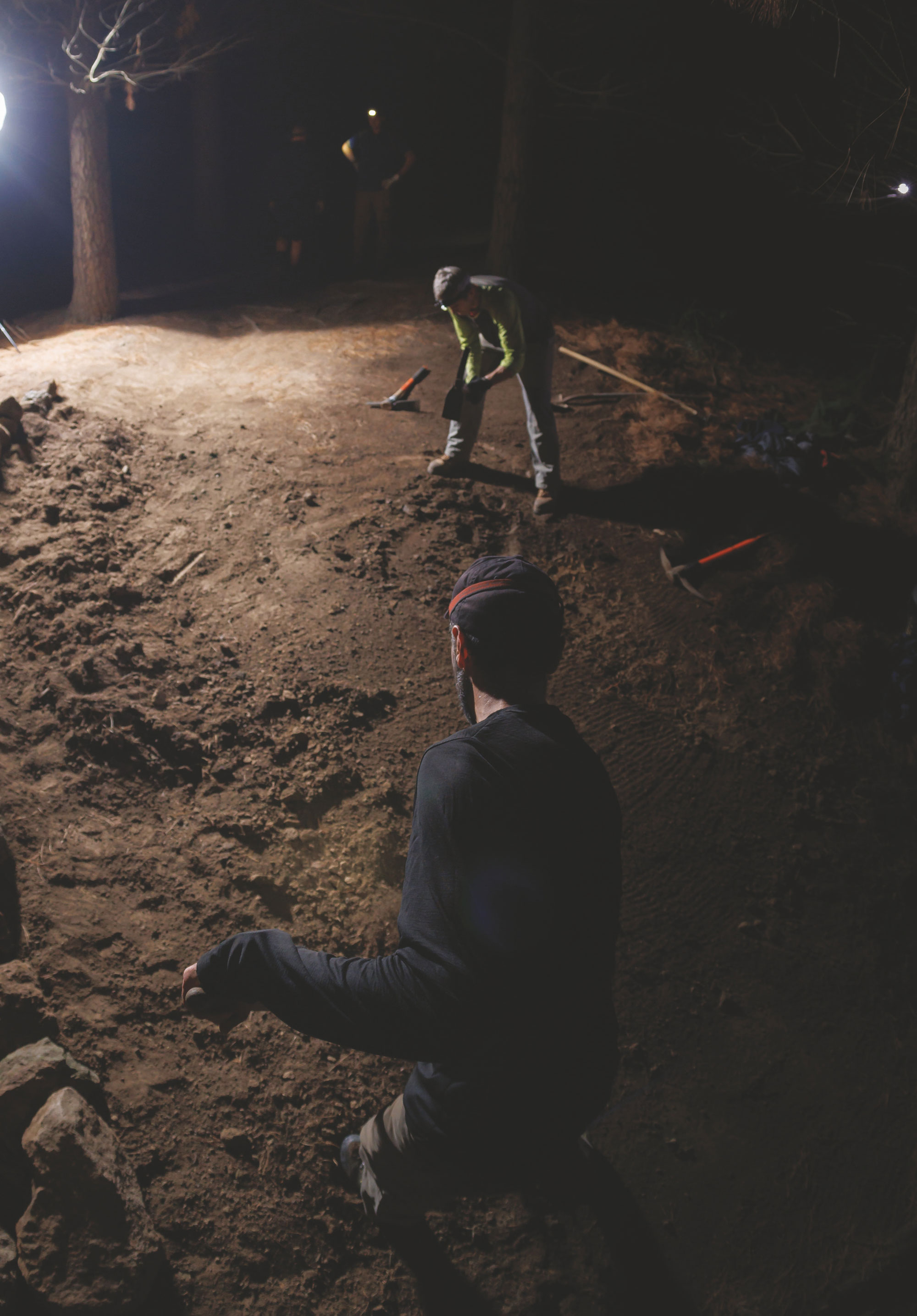
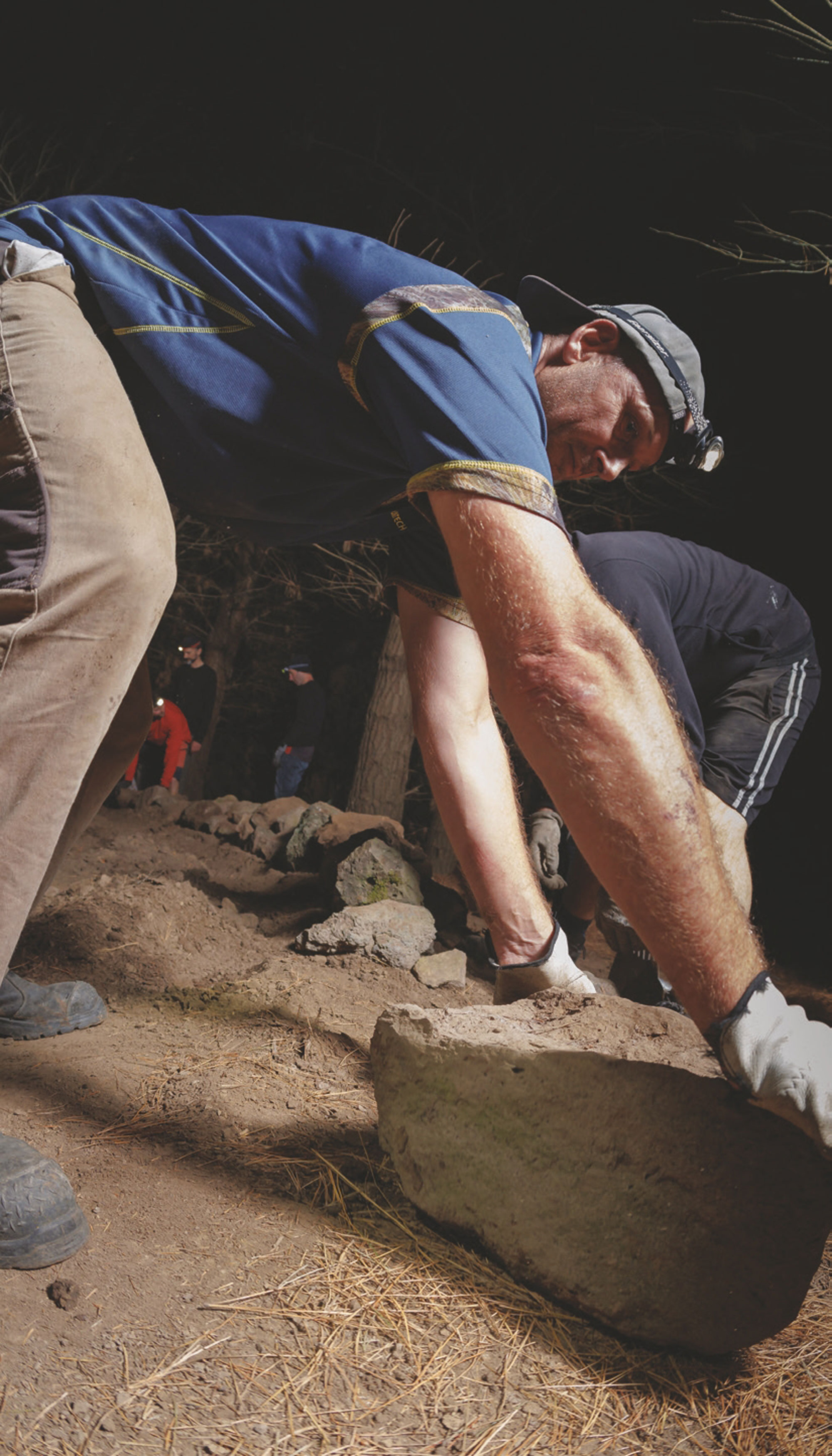
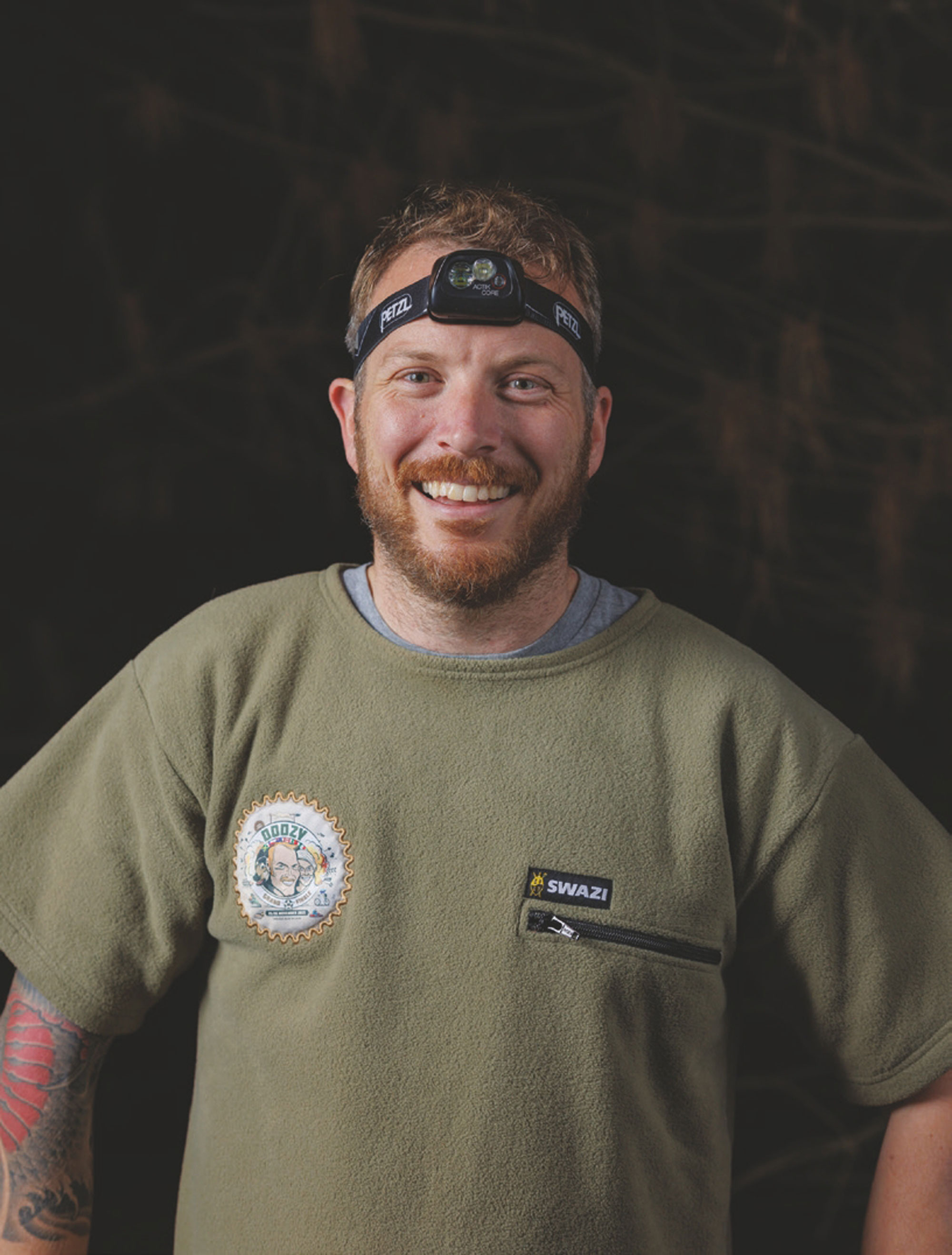

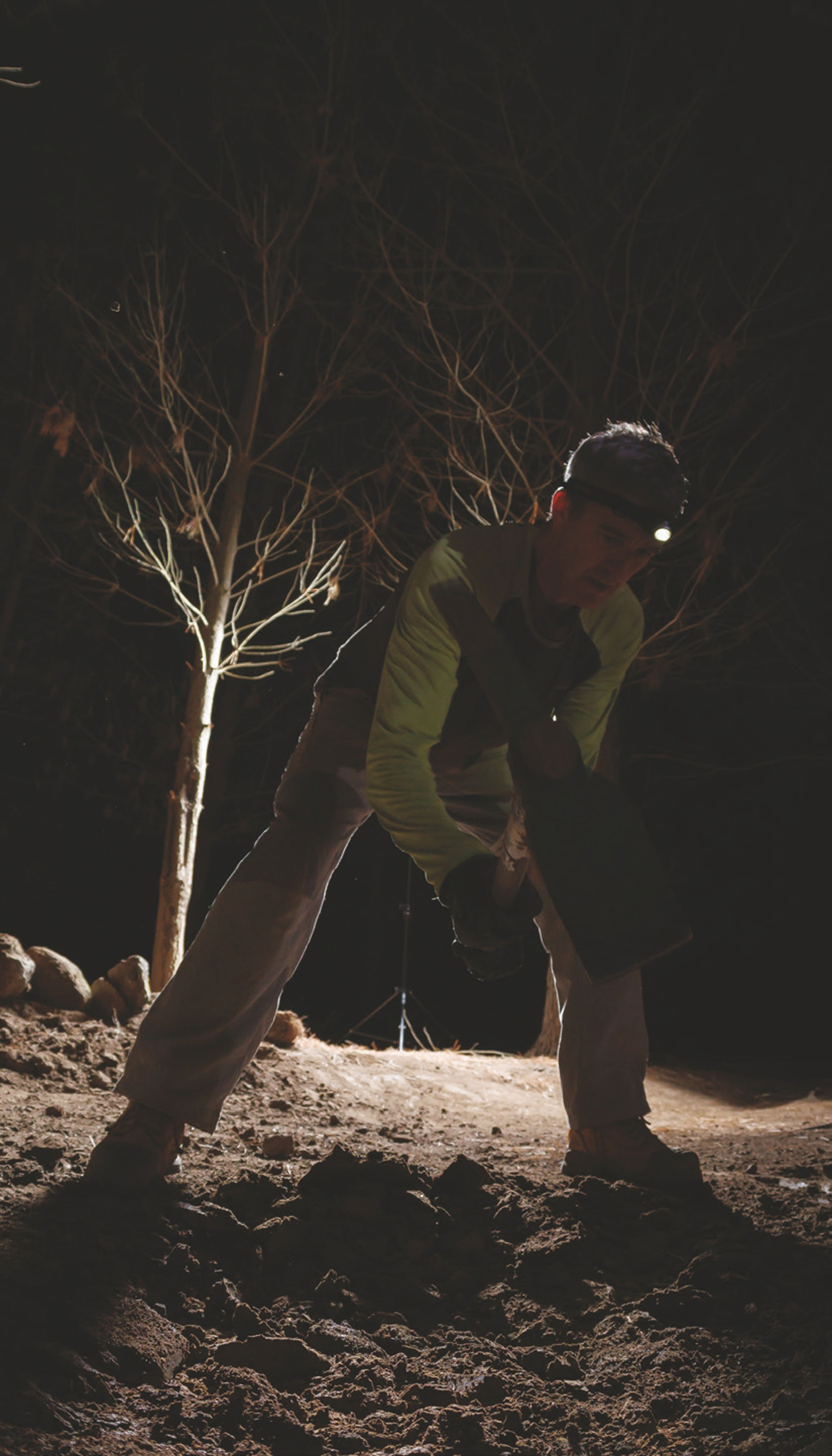
If there’s a trail to build or maintenance to be done, the AVC is now big enough that it’s highly likely a mighty group can assemble and lend a hand. Many hands make light work, and enjoying the fruits of their labour is all the pat on the back they need.
Key AVC Member profiles:
Name Steve Adams
Age 36
Rough number of dig days with the AVC? 25 digs
How did you end up as part of this trail-building crew?
I met Mark while out digging with Aaron Hogg on ‘Pork and Puha’, and asked to join his regular digging crew (AVC)
What’s your favourite trail that you’ve worked on? Addiction
What motivates you to keep going to dig days/sessions?
I work in an office all day so it’s good to be outside in the evenings and great to be improving trails that I like to ride.
What is the most rewarding part of being part of a crew like the AVC?
When you overhear people on the lift talking about how much better a repaired section of trail is, knowing you helped with it.
What do you think you’d most like the AVC to be known for?
Having a good time while improving the local trail network.
What’s a hot tip or technique you’ve learned that helps with trail building?
A reciprocating saw is great for removing root balls.
What would you say to people in other areas who are keen to get a trail-building crew going?
Talk to your local club or trail network owner and ask how you can help out. Start small and build up from there.
Anything you’d like to add?
Come and join the AVC, do a bit of digging and drink a few beers!
Name Sarah Mabin
Age 23
Rough number of dig days with the AVC?
Maybe 25?
How did you end up as part of this trail-building crew?
I saw some work that was done on a few corners on ‘Pork and Puha’ last winter and found out it was done by the AVC through a friend that helped with the digging. I was keen to be a part of it, since it made those corners so much nicer!
What’s your favourite trail that you’ve worked on?
Probably Wasabi 2.0 What’s your favourite trail in Christchurch? My all-time favourites are Gung Ho at CAP (specifically the top half) and Pedos into Wazzas at Vic Park
What motivates you to keep going to dig days/sessions?
You know that each dig helps to get rid of NREs (Negative Rider Experiences) and make CAP better for everyone!
What is the most rewarding part of being part of a crew like the AVC?
I’ve met so many people I wouldn’t have otherwise! Everyone is out here to help, and it creates a feel good vibe! And another perk is sampling unfinished trails!
What do you think you’d most like the AVC to be known for?
The people in the AVC are absolute legends and volunteer an incredible amount of time and effort into the CAP trails! Their work shouldn’t go unnoticed!
What’s a hot tip or technique you’ve learned that helps with trail building?
I’m not as physically strong as some of the guys but it’s all good because the weight of the tool does most of the work for you. And of course; to stay hydrated, it is the AVC way after all! Digging isn’t just for the guys! Would love to see more girls out in the Chch digging scene! I had no idea about trail building when I started but there’s always a friendly face willing to guide you if you’re unsure what to do.
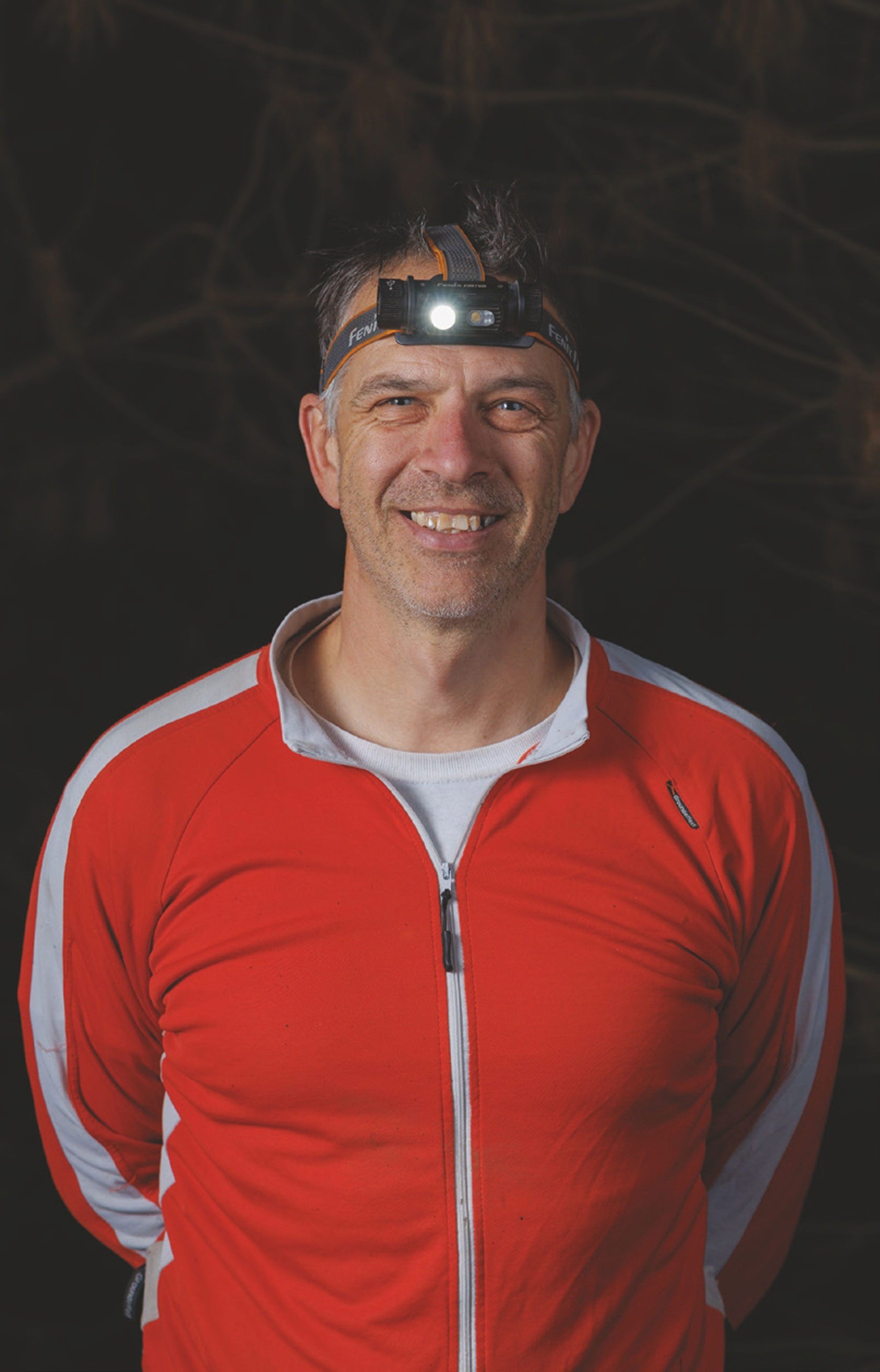
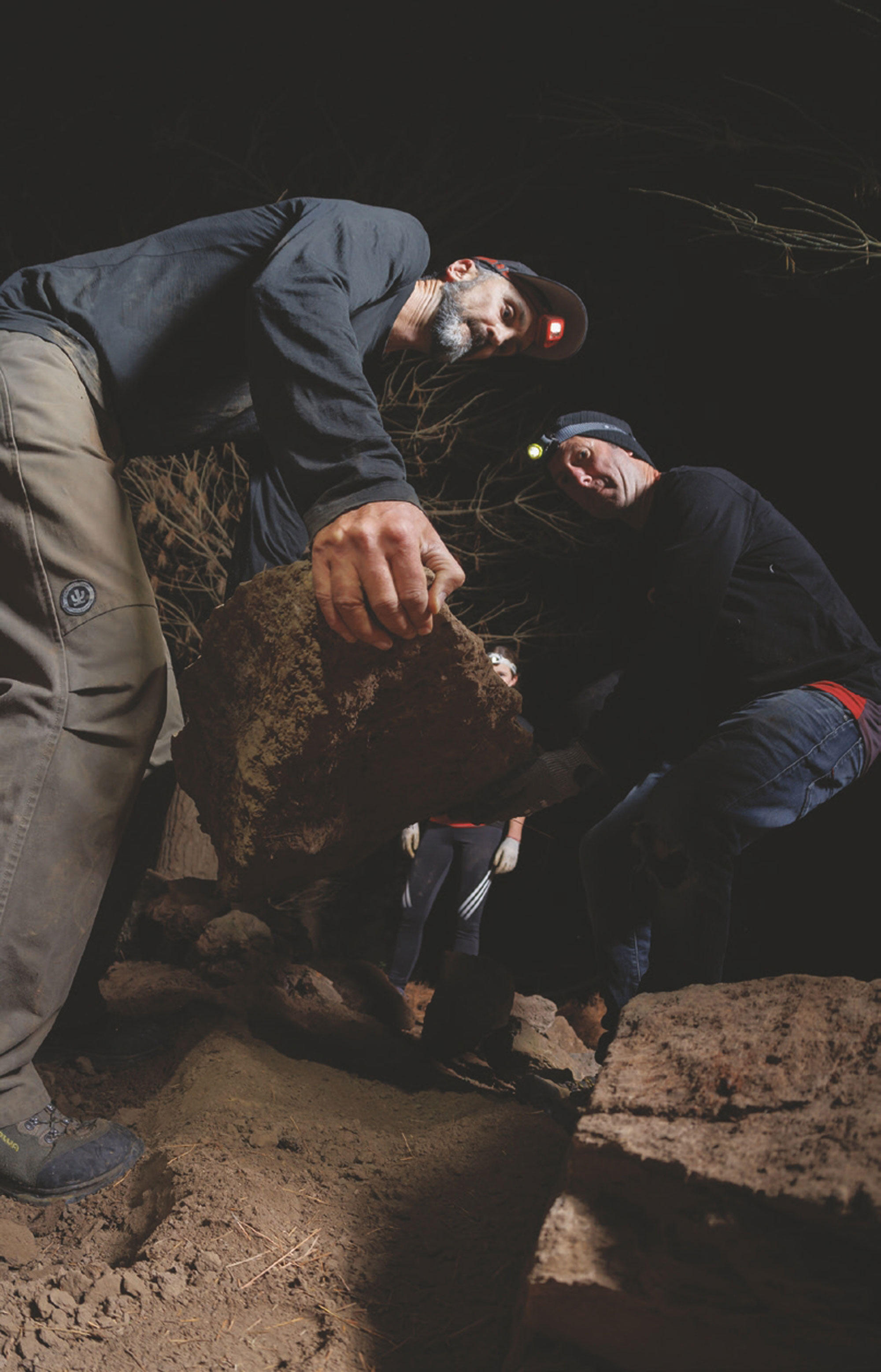
We move a bit of dirt, listen to some tunes, bounce a bit of banter, smash a few tins and we get to ride our own work when we’re done.
Name Mark Stewart
Age 50!!!
Rough number of dig days with the AVC? >100
What’s your favourite trail that you’ve worked on?
The full rebuild of Kama Sutra. We had some challenges with rain events and having to rebuild sections twice, but it runs so good now. And the start of the Crankworx DH line that was never used due to the latest fire.
What motivates you to keep going to dig days/ sessions?
Removing NREs. Everyone complains about them, but few do anything about it. We have just been maintaining trails over the last couple of years but are about to start on a brand- new trail which will be an exciting challenge.
What is the most rewarding part of being part of a crew like the AVC?
Getting out and making a difference to the local trails and hearing the positive feedback from riders after we have fixed\improved part of a trail.
What do you think you’d most like the AVC to be known for?
Being a focal point for people to get involved in digging their local trails. I guess it could be hard to get involved if you don’t know who to contact or you don’t have any experience. Anyone can message us if they are keen; all are welcome.
What’s a hot tip or technique you’ve learned that helps with trail building?
Get lots of tools!! You can never have enough of them
What would you say to people in other areas who are keen to get a trail-building crew going?
Get in touch with whoever manages the land where you want to dig. Get on the socials, it is the best way to reach a wider audience than your normal riding circle. Over the winter months, if you can’t ride due to the weather you might as well dig! You never know, you might really enjoy it.
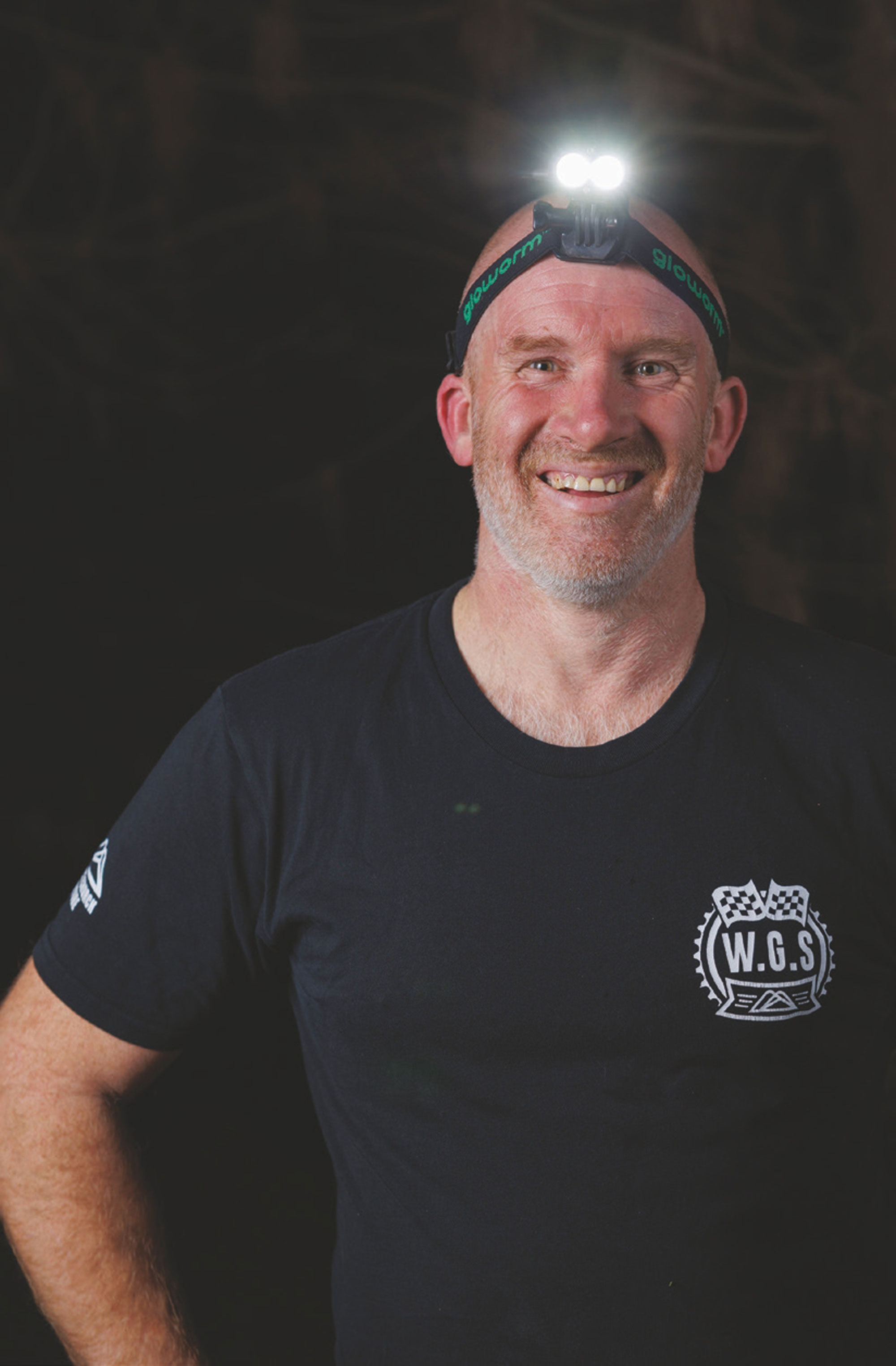
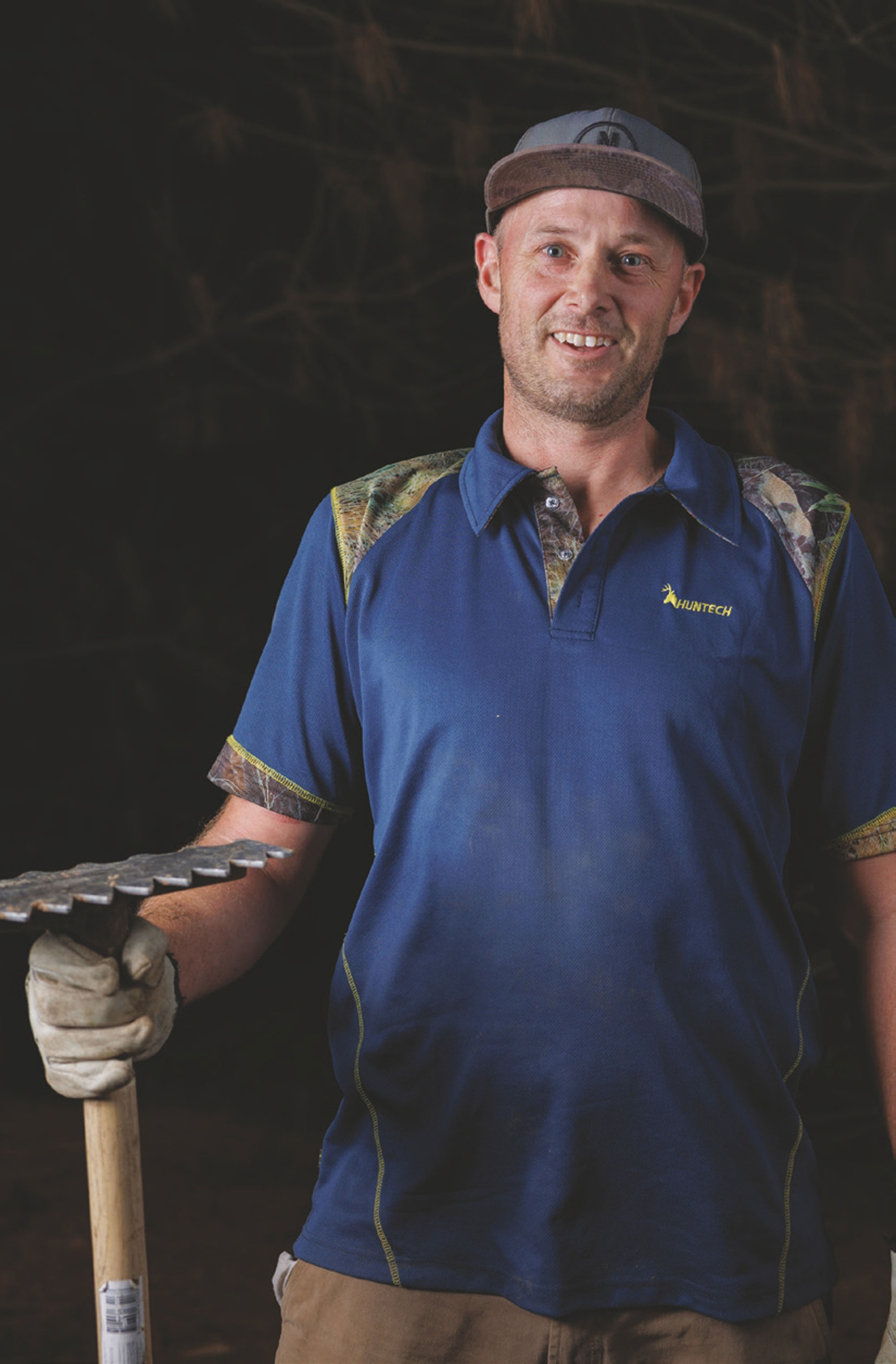
By 2023, the group’s relationship with CAP became more formal, and they requested to be kept up-to-date with planned work so their patrol team could ensure adequate signage was in place - safety first and all that.
Name Hamish Pretty
Age 45
Rough number of dig days with the AVC? 40+
How did you end up as part of this trail-building crew?
I’ve been with the AVC since the beginning, before it even had a name. My first dig was with Mark Stewart and Jeremy Burke for a repair session on Rake n Bake one Sunday after the chairlift closed early due to poor weather.
What’s your favourite trail that you’ve worked on?
Pork and Puha. It was always a favourite track, and a track the AVC really took ownership of in our first season. It started with some repair and grooming then, as we gained the respect for sensible building, we started adding new lines and extra features into the trail.
What’s your favourite trail in Christchurch?
Choccy Milk. It’s got a bit of tech, lots of doubles and it’s non-stop busy. You’re working for it, always lining up the next feature, never just riding along.
What motivates you to keep going to dig days/ sessions?
Digging has always been a part of the culture that goes with riding bikes. If you want mint trails, pick up a shovel and help out. We move a bit of dirt, listen to some tunes, bounce a bit of banter, smash a few tins and we get to ride our own work when we’re done. The experience is always fun and rewarding which is why the group is constantly growing, it keeps myself and others coming back for more.
What is the most rewarding part of being part of a crew like the AVC?
As part of the AVC, I’m rewarded with the satisfaction of riding the trails we have worked as a team, but the best part of being in the AVC would have to be all the great people I’ve met who I now know as friends. Come riding day, I dare say, the AVC is the biggest riding group on the hill and I’m proud to be a part of it.
What do you think you’d most like the AVC to be known for?
I’d like the AVC to be known as the dig crew that makes trails great again.
What’s a hot tip or technique you’ve learned that helps with trail building?
Hot tip: strap your hand tools together for easier transportation onto the hill. Wear leather gloves and keep your eyes covered if you’re smashing rocks.
What would you say to people in other areas who are keen to get a trail-building crew going?
Talk to whoever’s in charge of the land so your work is accepted and appreciated; invite people onboard, as you’ll need the help; keep it fun so people return for more; post on social media to spread the word.
More recently, the AVC established a new lower half of one of the favourites, ‘Wasabi’, which had been abandoned after a huge storm blew over many trees, making it impassable. With some direction and help from our mentor trail builders, Aaron Hogg and Richard Goldsbury, the AVC got stuck in and the new trail was forged. Since we made it to the valley floor and had an exit, three more abandoned trails – Captain Torpedo, Drainpipe and SMC – were reworked and have been brought back to a rideable state. All four trails are awaiting park sign off to be returned to service. The Dual Slalom has recently been cleared by the AVC after being overgrown with gorse for years, and we held an unofficial race on it early in May. Our focus has now moved to the creation of a new blue line on the open side of the hill. From a couple of riding buddies fixing blown out berms, to a 50+ strong crew building race tracks and new lines, the AVC has come a long way in a short time. The AVC wouldn’t exist if it wasn’t for Mark Stewart – he was there from the beginning, liaises with the park, attends most of the digs, records all the attendees, logs the dig tally for the reward scheme, posts the work onto social media tagging all the attendees, and he rides the tracks when they’re done. He is the boss!
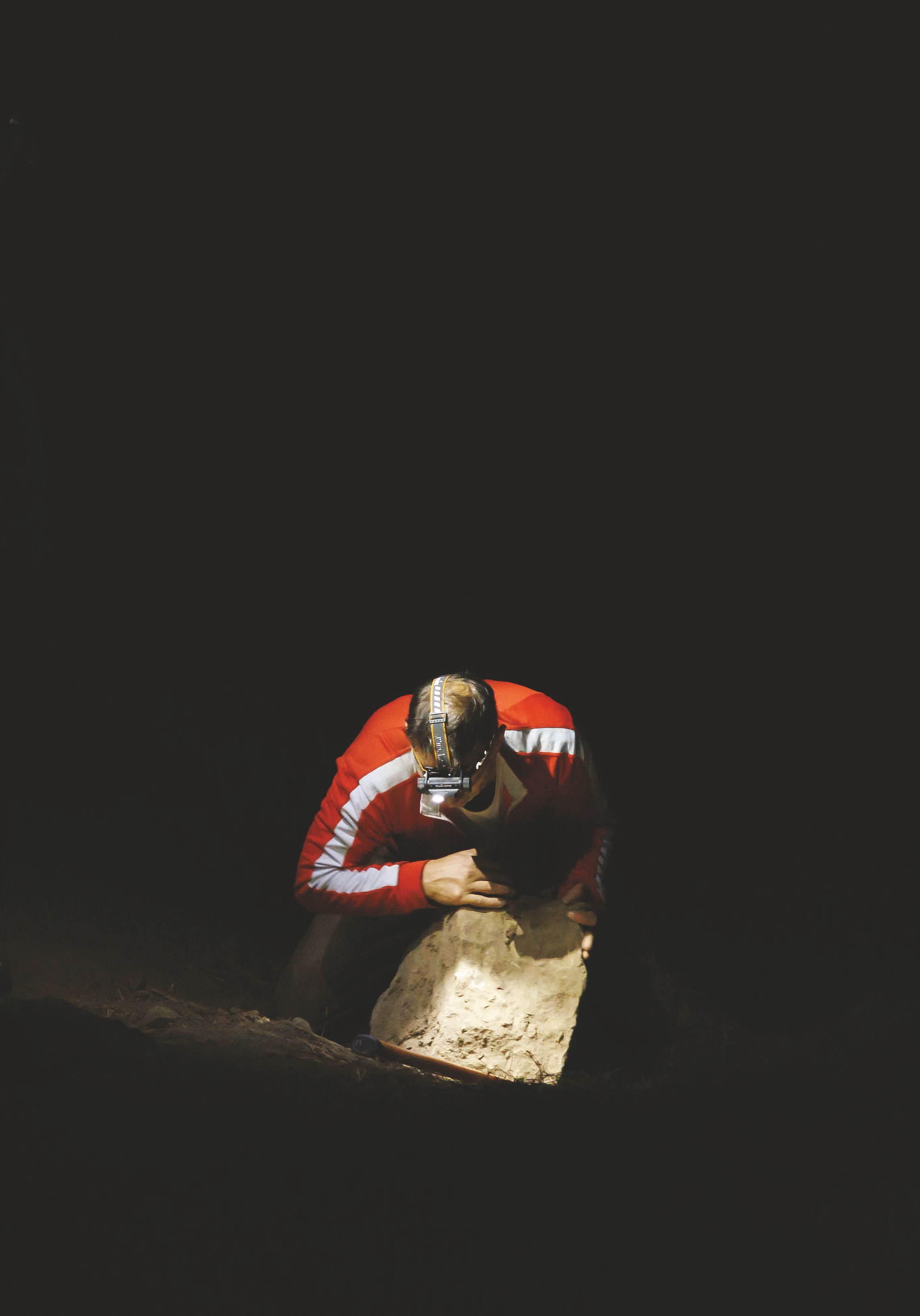
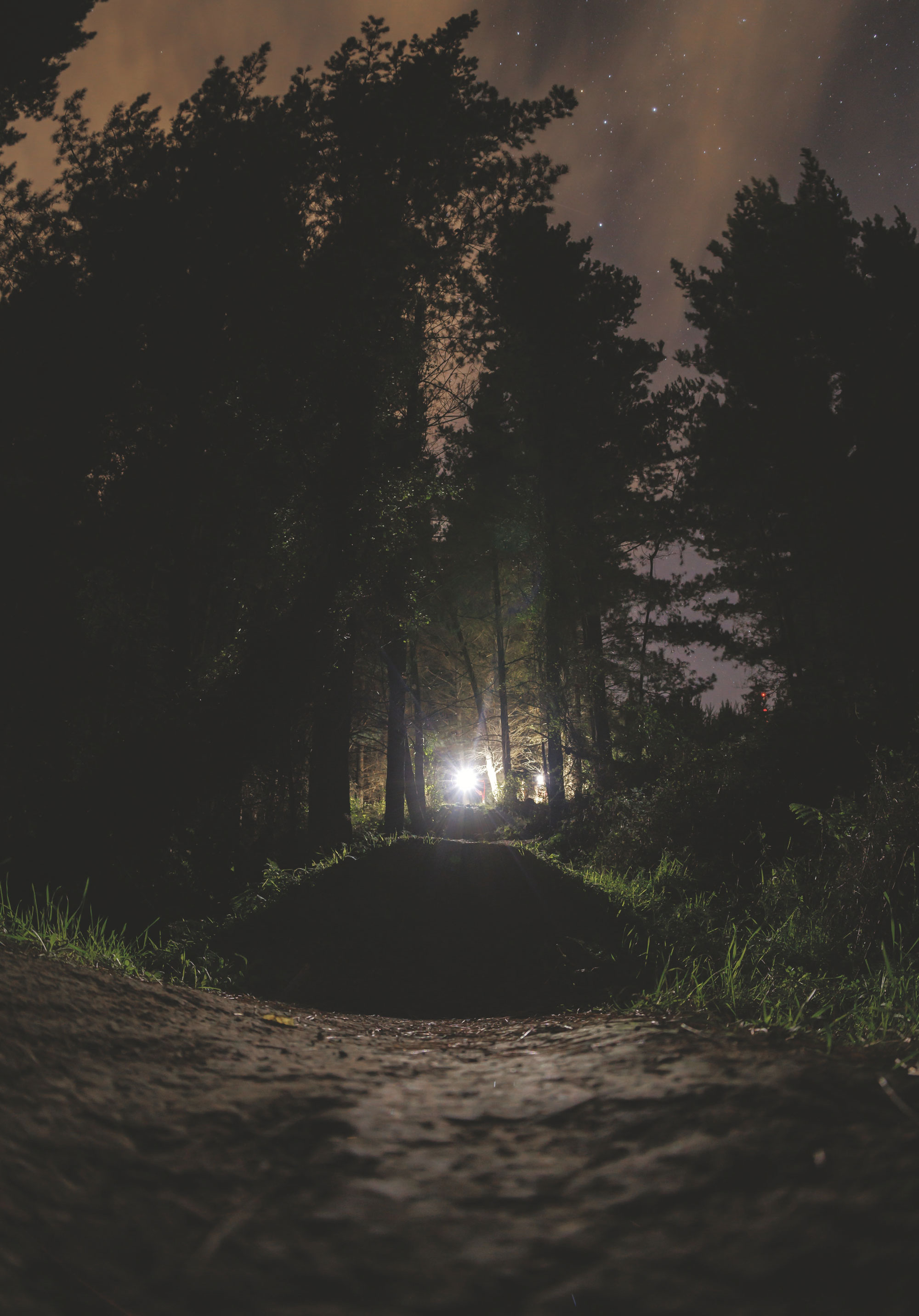
As part of the AVC I’m rewarded with the satisfaction of riding the trails we have worked as a team, but the best part of being in the AVC would have to be all the great people I’ve met who I know now as friends.
Name Lucy Moore
Age 14
I have recently started helping at dig days and am really enjoying it. I ride lots and wanted to help out. I saw some posts on Instagram and heard about it and reached out. I have really enjoyed working on the dual slalom track and it was super cool to see people racing it on recently.
My favourite trails in Christchurch are Pork ‘n Puha and Addiction at CAP, and RAD and Pedal Fine in Vic Park. Trail building is super rewarding and I like to know I am helping contribute to having cool trails to ride.
For me, the most rewarding part of being in a trail crew like AVC is being able to develop a track and step back at the end of a dig and see how much you have done. I am still learning the ropes but am super keen to head out for a night’s building.
Name Nick Sutcliffe
Age closing in on 49
How did you end up as part of this trail-building crew?
I’ve been running a winter dig session in CAP for several years. People come and go but we have a pretty small, solid crew who always turn up. Working with the AVC crew means we have more people digging and can basically get more done. We wouldn’t have finished our trail last winter without AVC.
What’s your favourite trail that you’ve worked on?
We worked on Rere Pia with AVC last year – worked out pretty well.
What’s your favourite trail in Christchurch?
Quite enjoying a mix of Karma/Shred/ O-zone at the moment. Otherwise, one of the old school DH tracks.
What motivates you to keep going to dig days/sessions?
Just enjoying creating trails.
What is the most rewarding part of being part of a crew like the AVC?
Everyone’s so passionate!
What do you think you’d most like the AVC to be known for?
Supporting CAP as it continues to grow.
Check out the @Alternative_Vollie Collective on Instagram for details of what they’re up to and dig session details.

Ten years of Dodzy; A decade of Dodzy Memorial Enduros
Words Lester Perry
Images Caleb Smith & Jason Beacham
The fitting memorial for a legend comes to a close after 10 epic editions.
On 7th September 2012, at the youthful age of 30, James Dodds – affectionately known as Dodzy – passed away after a hunting accident. Not only did the mountain bike world lose a key figure that day, but many of us lost a great friend and inspiration. For ten years, the Dodzy Memorial Enduro has brought together a section of NZ’s MTB community, firstly to celebrate Dodzy’s life and legacy, but equally to celebrate the things he was into, as we are; riding and racing bikes, hanging with mates, and just generally having a good time outside.
In the event’s early days, before Facebook was a common thing, communication was largely word of mouth.
In the months preceding Dodzy’s passing, he and Jeff Carter (business partner in NZ Trial Solutions trail building company) had pursued the idea of running a race in the Wairoa Gorge MTB park they’d been developing. At the time, the zone was off-limits to all, aside from over 50 trail builders working in there, or those who were lucky enough to know the right people or were part of the inner circle of the land owners RHL. The idea had been to open the park up for an event to give people a taste for the gnarlier side of what it had to offer. Dodzy had a taste for tech, and he wanted to expand the circle of who could enjoy some of the gorge’s finest.
We had a lengthy sit-down with Nick Crocker, who was managing the Wairoa Gorge property at the time of Dodzy’s passing. “I had to ask Jamie Nichol what Enduro was. Well, to get an exact definition. I mean, I knew what it was, having seen a little bit of stuff on Pinkbike, but it was kind of like, what actually defines it? What is it really? I don’t think there were any in New Zealand back then.”
“It’s pretty funny because I had two chats with Dodzy, who was just frothing about it. And I was sort of like, it’s pretty left field to be honest (to be running a race). We used to have Zoom chats every couple of weeks, and he’s just going on about this Enduro, and I’m like, man, I don’t even… I’ve got this big list of things that I wanted him to give me answers to and he’s just going on about this Enduro!”
Background work was progressing, and with signoff from the gorge’s owners, things were falling into place for an event to remember— until the fateful day in September.
Nick Crocker was heading off on holiday; south towards Kaikoura, having just ridden the Maungatapu trail. He and his now-wife stopped at the Kekerengu Store for some food. Jeff Carter’s name flashed on the screen as Nick’s phone rang—nothing out of the ordinary; Nick was site manager in the gorge, employed by NZTS, which was Jeff and Dodzy’s trail-building company.
Jeff delivered the devastating news that Dodzy had passed, and Nick’s world went into a spin – not only at the loss of a mate, but also thinking of the effect Dodzy’s passing was going to have on so many people. Once the initial shock subsided, he knew he needed to inform the wider NZTS crew. “I had to call Mortz at the gorge and tell him to let all the boys there know and pass it on, which was pretty heavy. He got all the guys together at the gorge and passed the news on to them. Everyone just went crazy.”
Following Dodzy’s funeral, talks of an Enduro continued between the owners of the Gorge, Jeff and Nick. “Jeff Carter was the one who was sort of like, well, if we’re still going to do it, it should become the Dodzy Memorial. So, I guess that’s where that idea stemmed from.”
“I remember being pretty overwhelmed and pretty conscious of how important it was, because it’s all Dodzy’s mates and it’s sort of quite strange for us to be the ones running the memorial. I was conscious that some people would probably think it should be in Rotorua, and people would be like, why? What’s the connection to the gorge?”
Jeff organised the back end, creating the online entry form and helping distribute the link. Gabby (Dodzy’s partner) also got stuck in, helping organise sponsors and a load of spot prizes. From there, it was over to Nick and his crew at the gorge to organise the race trails and ensure they were up to spec come race day.
In the event’s early days, before Facebook was a common thing, communication was largely word of mouth. A link to an email sign-up form had been flying around. First, it was emailed to Dodzy’s close friends, who then sent it on, and word of the event went viral from there. Weeks later, the link to the entry form was emailed to those who had signed up, and in about two minutes flat, the first Dodzy Memorial Enduro was a complete sell-out. These early years became known as “the keyboard warrior years”.
“I remember one guy at the shuttle pickup just came over and got pretty aggro with me and was like, ‘You can’t do this. It’s too hard. Everyone thinks it’s too hard. You’re going to have to change it’.
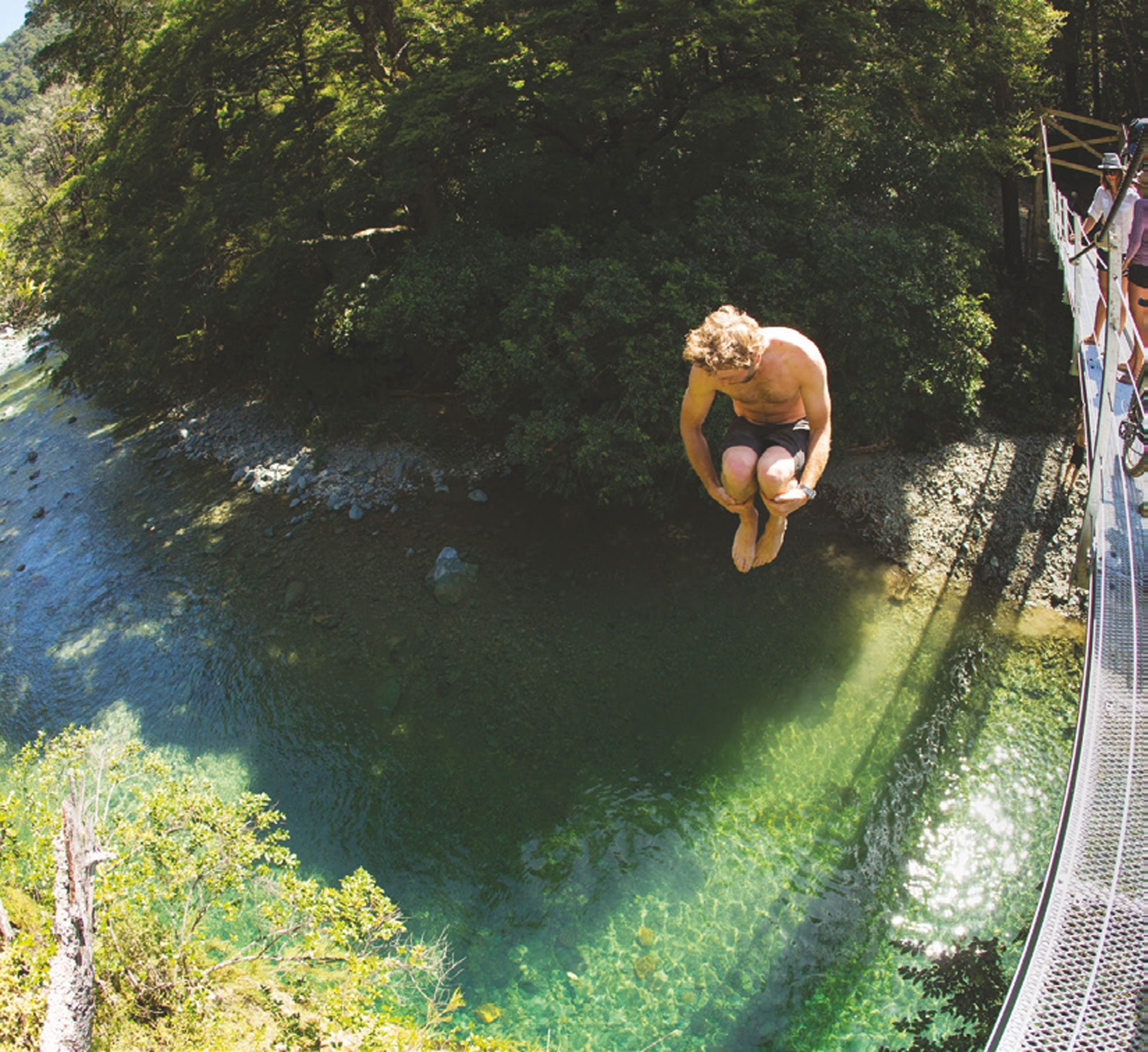
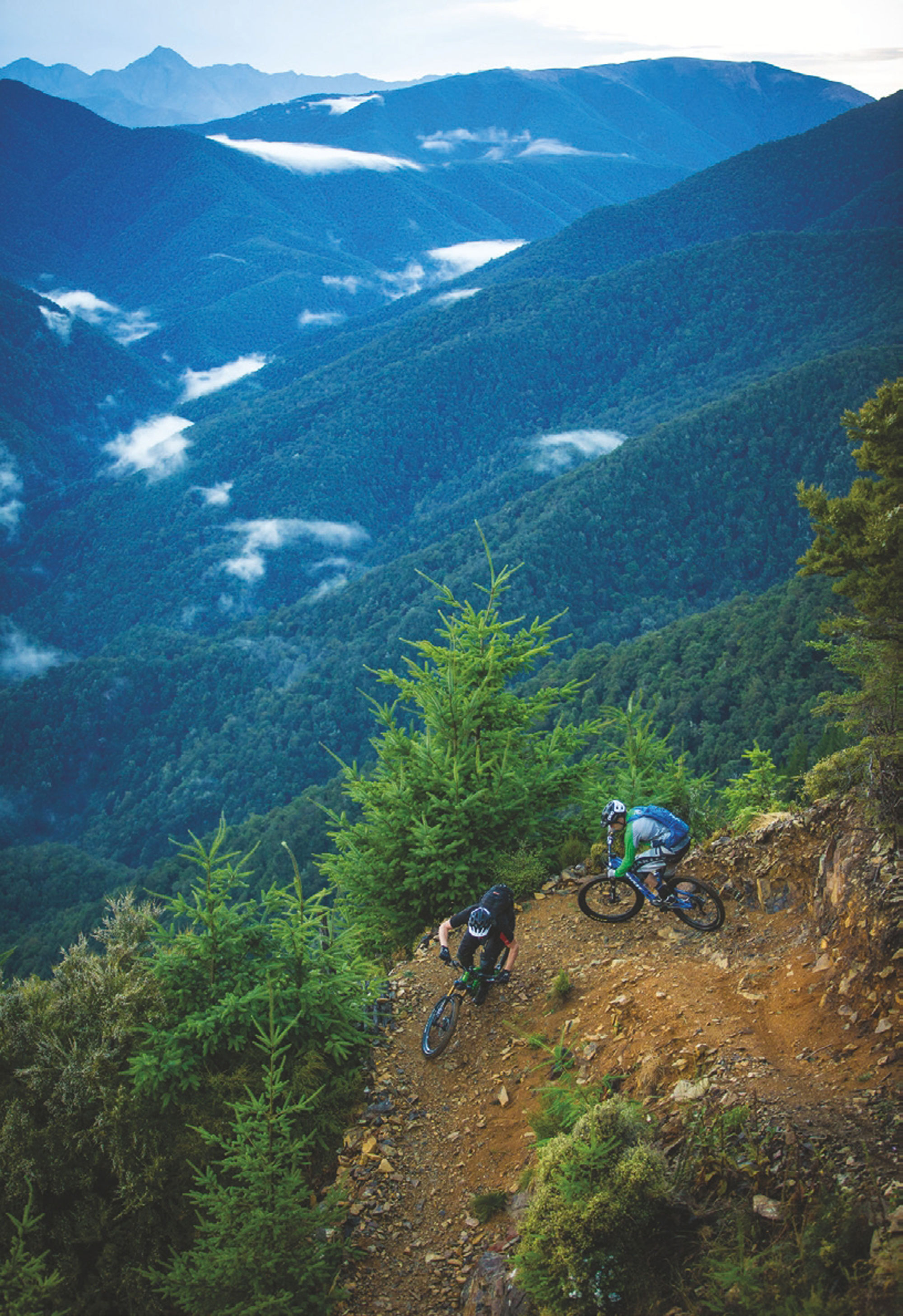
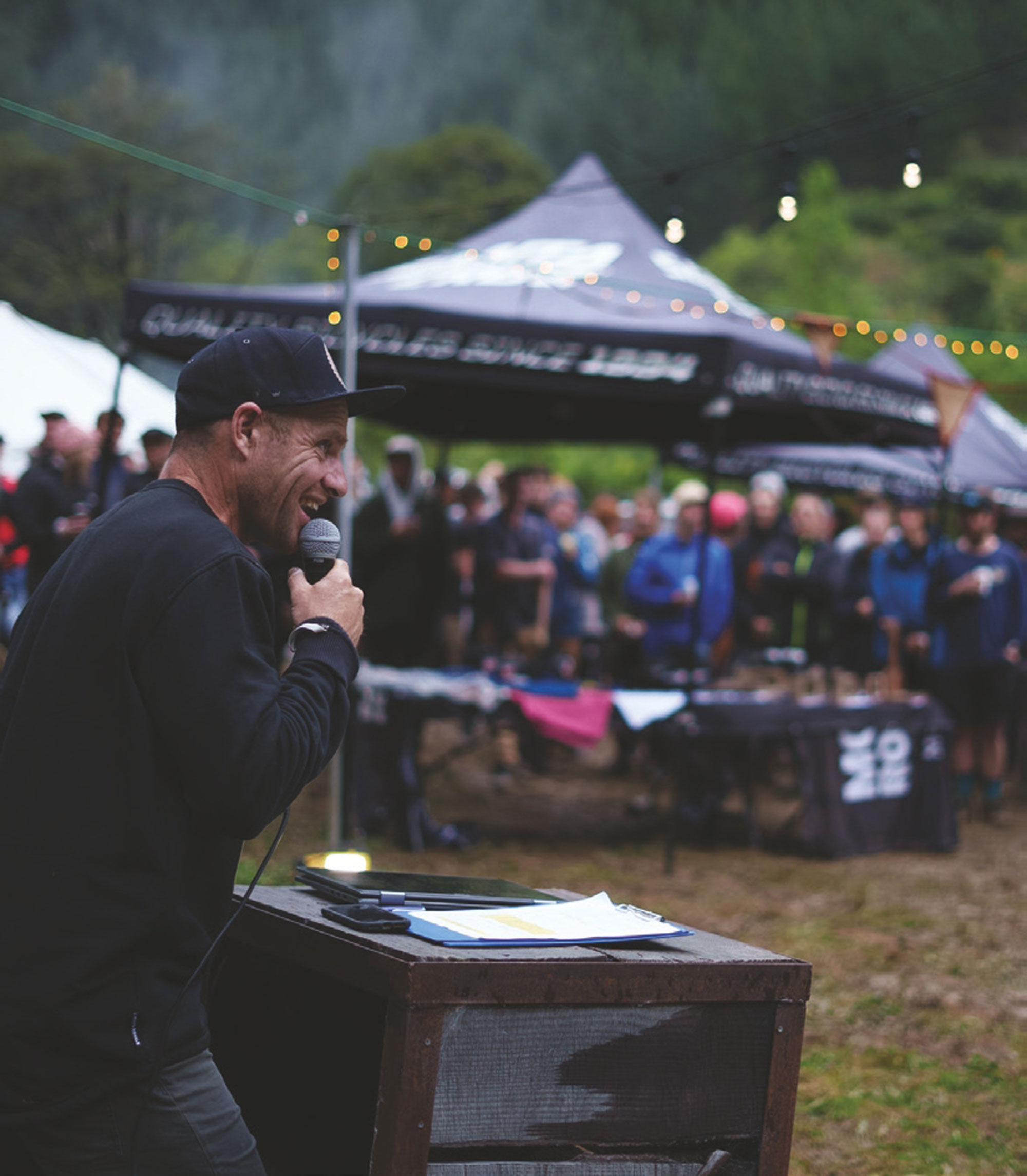
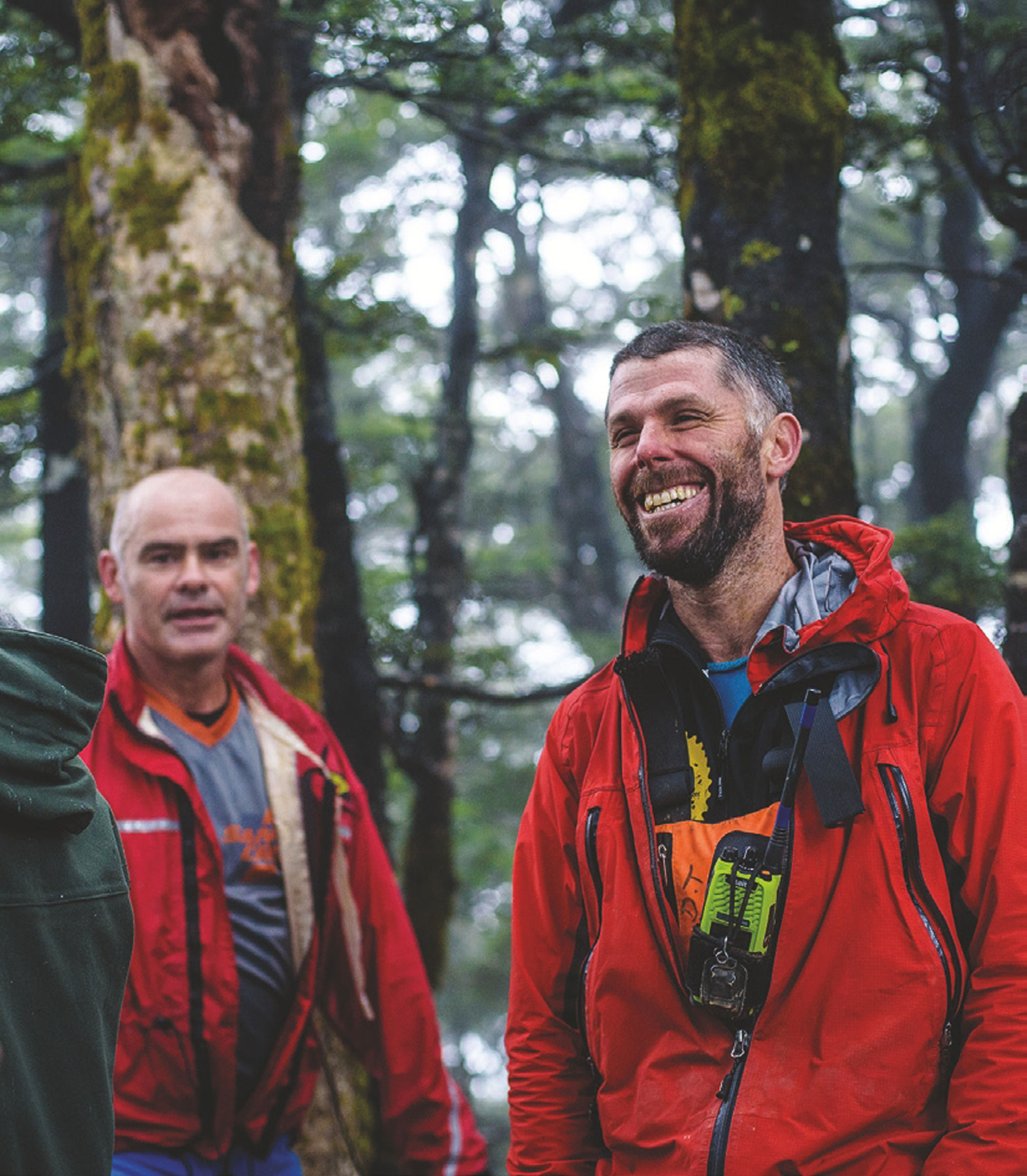
I said, I can’t, mate. It’s not going to change.”
After a couple of years, the DME’s reputation was cemented, and those who turned up to race knew not only what they were in for but were prepared for the level of the event.
For the first few editions, the balance of holding an event of this magnitude and reach, while keeping its core foundation as a memorial to Dodzy weighed heavy on Nick’s mind. The first couple of years attracted a broad range of riders to the gorge and, inevitably, there were a few people whose riding wasn’t up to the level needed to take on the gorge.
“I remember one guy at the shuttle pickup just came over and got pretty aggro with me and was like, ‘You can’t do this. It’s too hard. Everyone thinks it’s too hard. You’re going to have to change it’. I said, I can’t, mate. It’s not going to change.” After a chat with some of Dodzy’s closest friends, they agreed the race should stay as it was, just as he would have wanted it. “It was definitely a challenge making sure the event was an appropriate memorial for him and stayed true to Dodzy’s quest to have a high-level Enduro at the gorge, by not only having flawless logistics over the weekend but also by laying out one heck of a technically demanding array of trails to race too.”
After a couple of years, the DME’s reputation was cemented, and those who turned up to race knew not only what they were in for but were prepared for the level of the event. “The epic thing has been that so many people have been up for the challenge. We haven’t let up. It’s stayed hard, but people just got better, and the riding progression has been unreal to watch.”
Over the years, the numbers have changed as people have aged up through the categories. Those who were Elite or Open at the early running’s, have worked their way through the Masters divisions and, in some cases, into the Legends classes – a lot changes over ten years.
“It’s pretty unreal to look at, for example, Nico Schroeder, who won in the Open Men category in 2023. The first year, he would have been four or five [years old]. Mel and Nigel, his parents, would have got mum and dad to babysit him so they could come and volunteer at the race. Now he’s won it. The same with Xanthe Robb, who was 3rd in the Elite Women’s in 2023. She’s probably been watching this race from the get-go. It’s pretty cool to see those guys come through. They’ve got a connection with the race, through their parents, and then they’ve made it their own as well. It’s pretty awesome.”
A fully independent event like this runs on a shoestring budget and, with no external funding or assistance, should any cost blow, it would ultimately be on Nick to sort it out. Outside of finances, the amount of administration going on behind closed doors leading up to each event presented Nick with a mammoth task each year, particularly once he had relocated to Rotorua from Nelson for a few years.
“For a while there, every morning you get up, you do an hour’s work then, if I can, I’ll shoot home at lunchtime and keep up with emails and stuff. And then after work every night for an hour and a half or something. It’s pretty full on, but that’s it for the initial entry period. It’s tricky when you’re working full-time because you have to keep up with everything. If you let everything slide, then all of a sudden it just backs up. It’s a lot easier if you can keep up with the emails and just sort of keep the momentum going.”
The work isn’t done after the final rider had come across the finish line, with the following week spent tidying up, returning gear, tying up admin and paying bills. Fortunately, Nick’s memory of how much work he was putting in for each event quickly faded and, after a short couple of weeks down time, he’d begin the build toward the following year’s gathering.
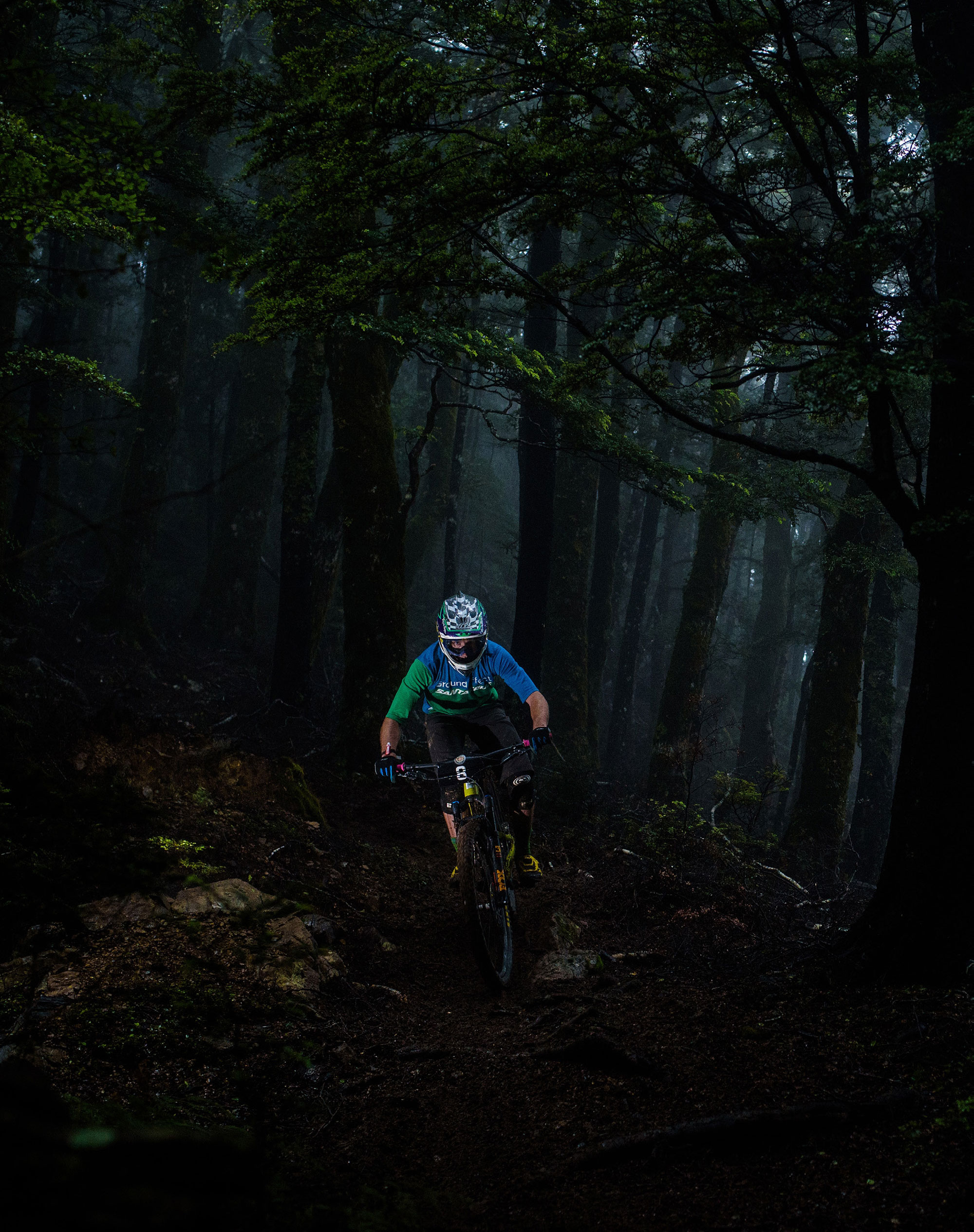
“It’s pretty unreal to look at, for example, Nico Schroeder, who won in the Open Men category in 2023. The first year, he would have been four or five [years old]. Mel and Nigel, his parents, would have got mum and dad to babysit him so they could come and volunteer at the race. Now he’s won it.
Most of the work leading into the event was dealt with by Nick, but the closer the event drew, the more people became involved. Once all the preparation was complete, a crew of around 55 assembled to support and run the event. During the first year the team was largely NZ Trail Solutions crew who were still working on the site. As the years have gone by, and NZTS work ceased, the mix for volunteers has changed to be less trail crew but more core locals who have had an attachment either to Dodzy or the Wairoa Gorge, in one way or another.
We’ve seen major ups and downs over the years, from threats of forest closures due to fires, to Covid – then there was the big wet of 2020. Keen to get a DME going in 2020, with the turmoil of lockdowns, travel restrictions and general uncertainty, Nick worked with Byron at the Fourforty Bike Park in Auckland, a longtime friend of Dodzy, to get one in the calendar and keep the dream alive. That was a weekend to remember, attracting many northerners who hadn’t yet made a pilgrimage to the Wairoa Gorge. A number of Dodzy’s close friends from his early years turned up to celebrate his memory; taking on a grass dual-slalom and a fast paced Enduro.
By November 2020, things were looking up with regards to Covid, and Nick managed to pull together a monumental running of the event. With one eye on the weather leading up to game day, and rain coming in, Nick grew increasingly concerned that shuttle and emergency vehicles may not be able to make it through the river at the foot of the hill, meaning the event wouldn’t be able to proceed. A steady stream of vehicles arrived at the Gorge on Friday afternoon, able to camp onsite over the weekend, for the first time. The rain continued through the night, bringing the river to critical levels. Fortunately, a small lull in the weather meant the river dropped enough to allow an eight hour window in which to run the event. With a pivot in proceedings, the regular two-day event became one; riders would now head up the hill straight into race runs rather than spend the day practising and racing the following day.
By sundown, after a soggy day sliding down the trails, riders returned to a campsite underwater and assessed the damage from the day. Bikes were broken, gear torn, everything was wet and muddied, but smiles remained. Come Saturday evening, after a hearty feed, revellers were treated to a bush doof of sorts as P-Digsss took to the decks. Everyone on- site embraced the night, enjoying a party Dodzy would have loved to be a part of!
Alas, all good things must come to an end, and all things in life have a season or chapter. November 2023 brought with it the final running of the DME. For the last time in this format, a core group of riders gathered to celebrate one last time. We saw some first-timers who’d finally managed to pull away from normal life to attend, as well as groups who’d attended all 10 events. What was evident was that, regardless of how many visits to the event they’d had, each person had a connection to Dodzy in some way, and everyone knew why we were there.
Harriet Harper – DME podium contender
Well… Gabby and Dodzy were like the King and Queen of mountain biking there for a while. It was a privilege to get to hang out with them. Dodzy was running on about 200% intensity for mountain biking, not just that he designed/ made his own bike and ran the skills clinic business, but every ride he went on was full tilt, with minimal stopping, and he seemed to have twice as much fun doing it than anyone else.
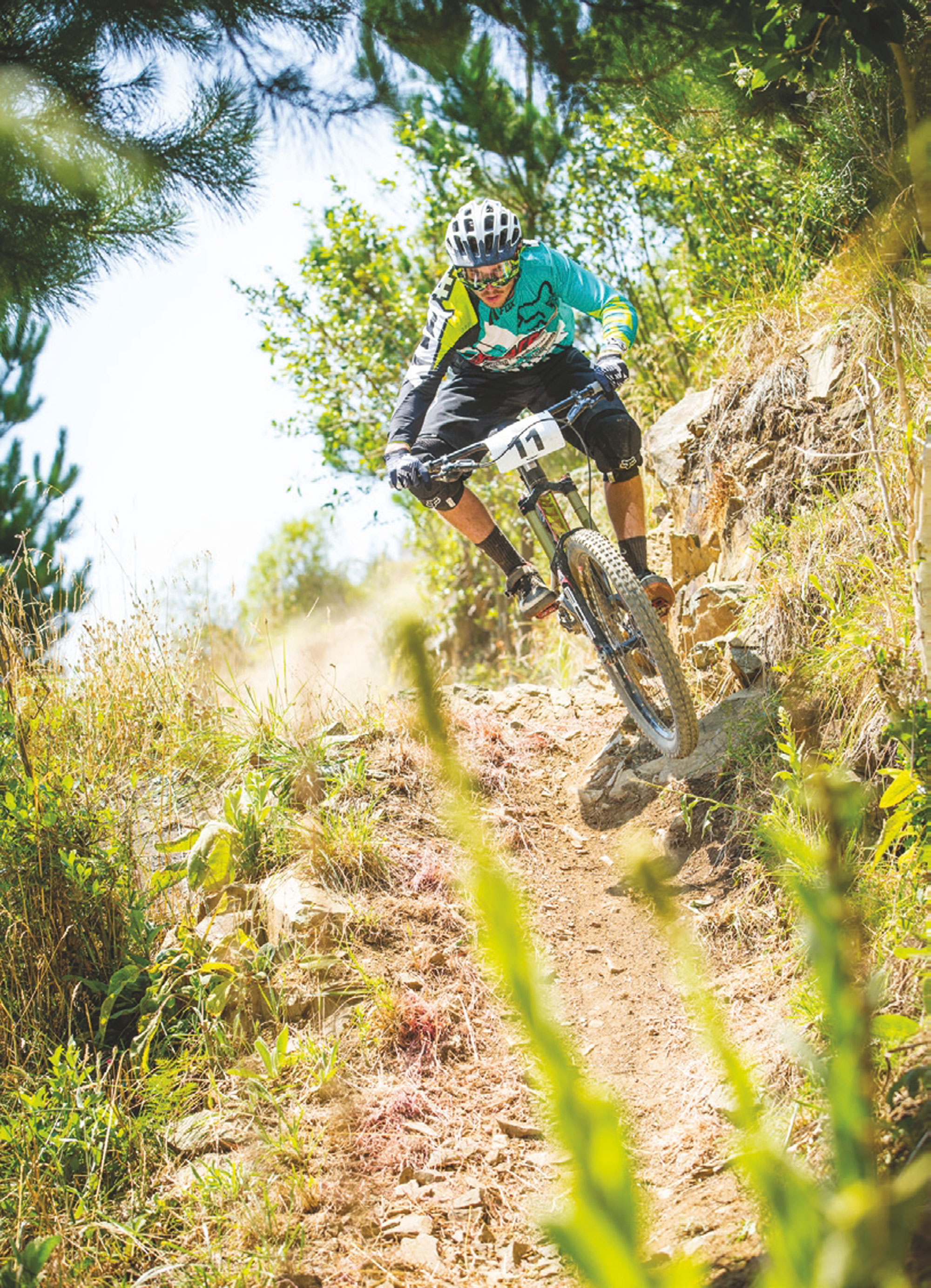
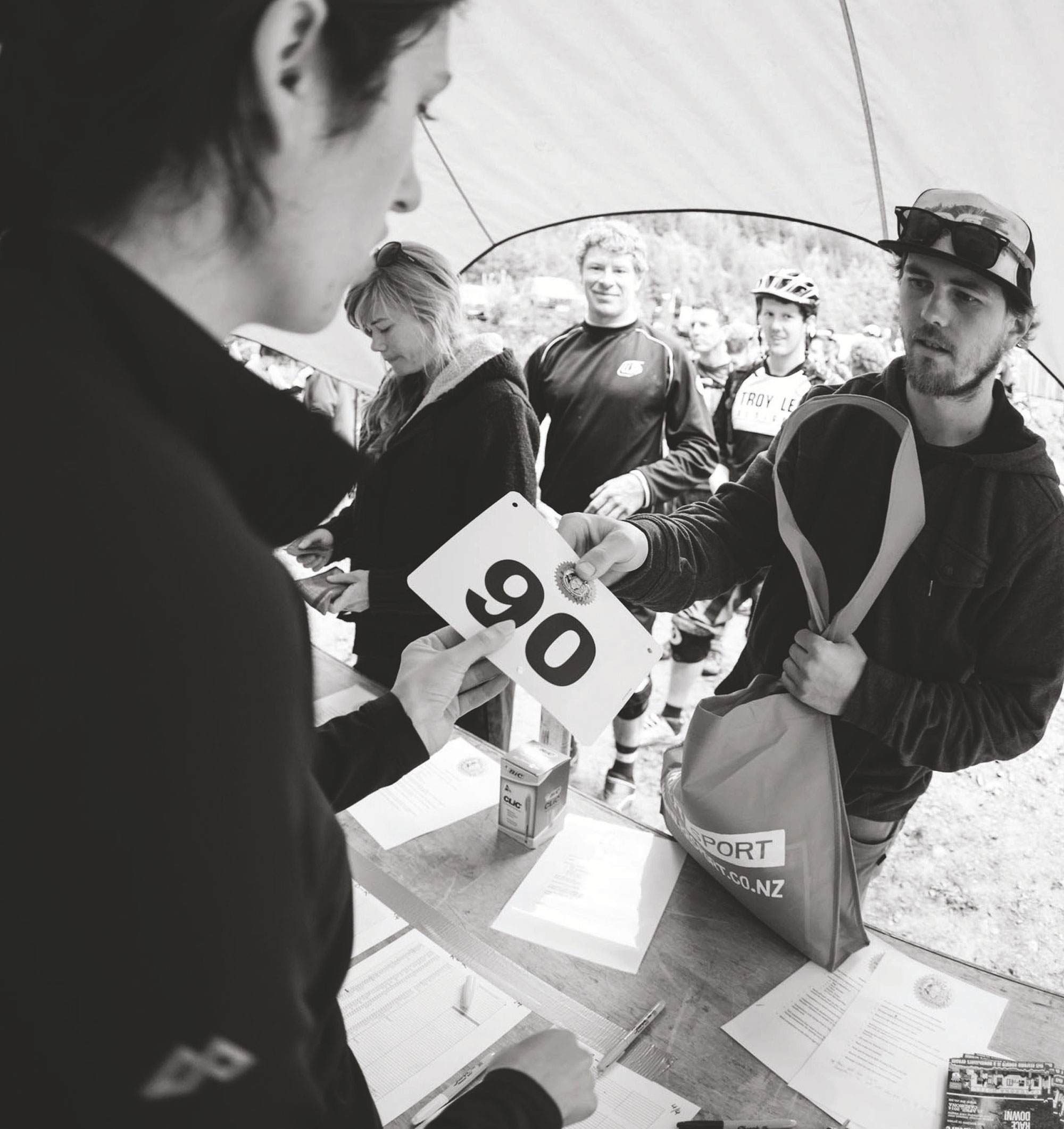
Long may it live on - and long may Kiwi mountain biking stay rugged and real!
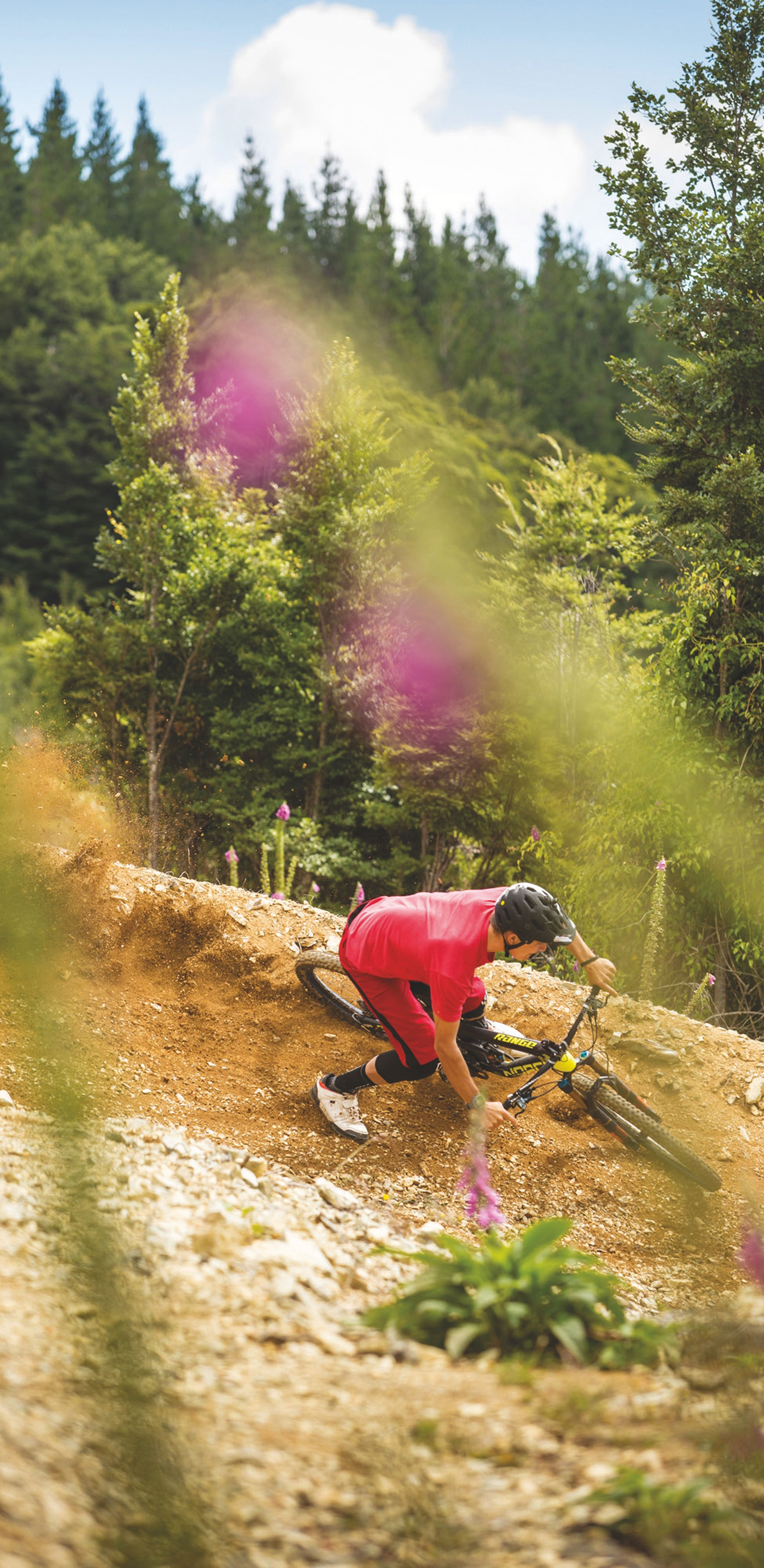
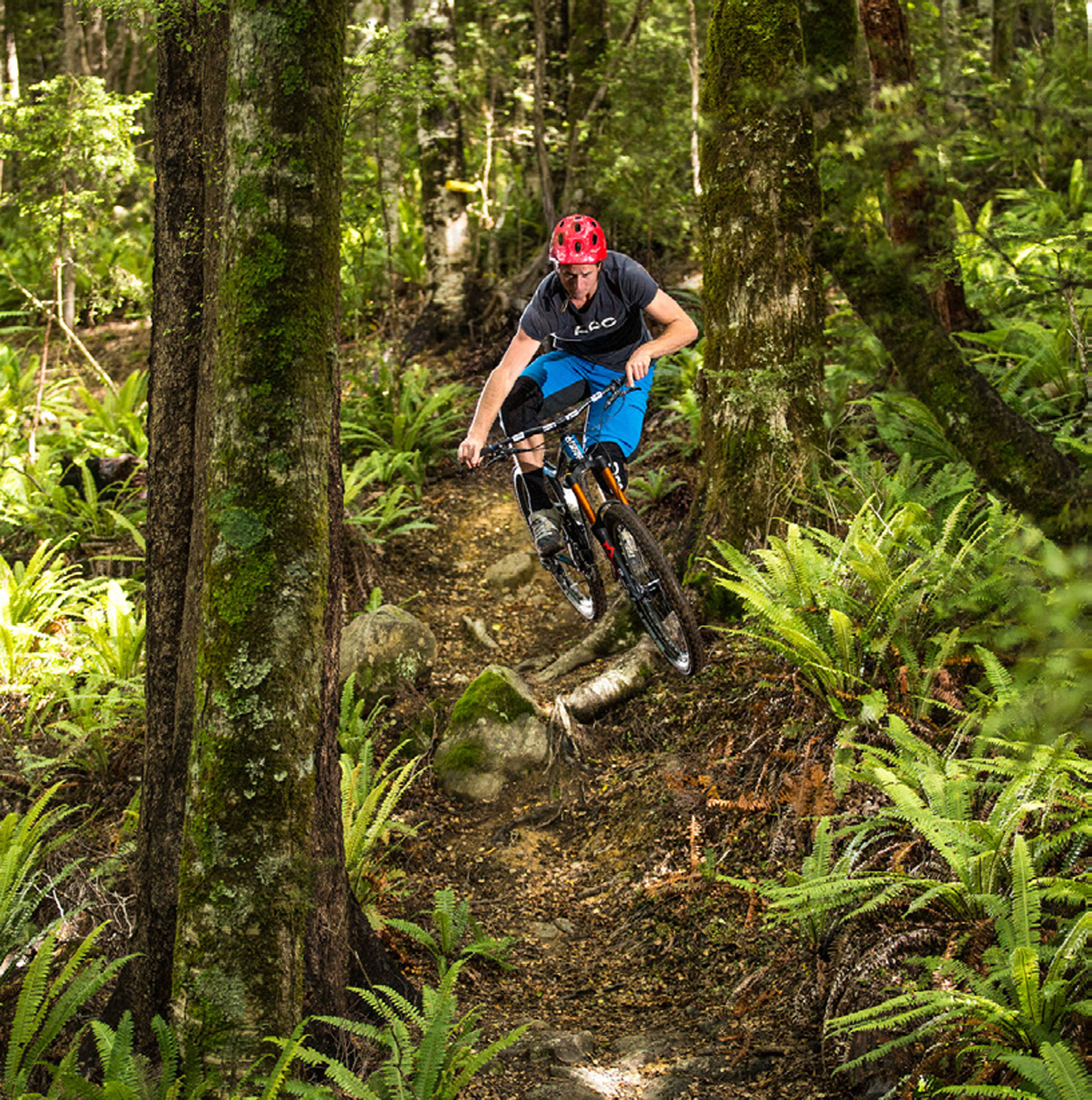
Everyone on-site embraced the night, enjoying a party Dodzy would have loved to be a part of!
The DME is the only race I’ve bothered doing in recent years, as it always attracts a super fun crowd. I remember the keyboard warrior phase (first in, first served entry), then the repeat invite list developed to keep the good vibes going, which was nice. I wouldn’t have been organised enough to get an entry otherwise! Obviously, people thought I won it more than I did, but I came second most times I went. It was the sort of event where not winning was totally OK; it was always a podium full of your best mates, even if you’d only met them that weekend (I’m thinking of you, Katy Winton).
My favourite edition was the super wet one with the Bloody Priest stage. I wish I’d made it to more of the after parties, but I always had a reason I couldn’t stay, which was a shame, especially when P Diggs got involved. I LOVE Shapeshifter!!!
Sam Blenkinsop – Multi-time Elite winner and current pro rider
I always loved racing the DME, I think because it’s always such an awesome event – and to remember a good friend. It’s cool to see all the old boys that used to race downhill when I was growing up. Everyone is just having fun on their bikes in a good location on awesome trails. Racing in Nelson is always an excuse to have a wee holiday with the family and go fishing and ride bikes. I will really miss doing the Dodzy Memorial Enduro, but we all have so many good memories of the riding and the parties. Winning was always cool, but I just loved being there and riding. I really hope we can go back one day and keep this event alive for Dodzy and us old boys who love racing bikes, purely to get together and have a laugh.
Justin Leov – Former pro rider
Dodzy was one of those guys who was way ahead of his time in the way he thought about and got things done. He was a mate who shared the same biking interests, but we really built a strong bond from hunting together on various missions around the North and South Island. Remembering Dodzy through the DME was something that brought people together to enjoy an epic place ( which he created ) and share the Dodzy Vibe and memories of the good times with mates doing gnarly stuff. That was Dodzy through and through.
What was evident was that, regardless of how many visits to the event they’d had, each person had a connection to Dodzy in some way, and everyone knew why we were there.
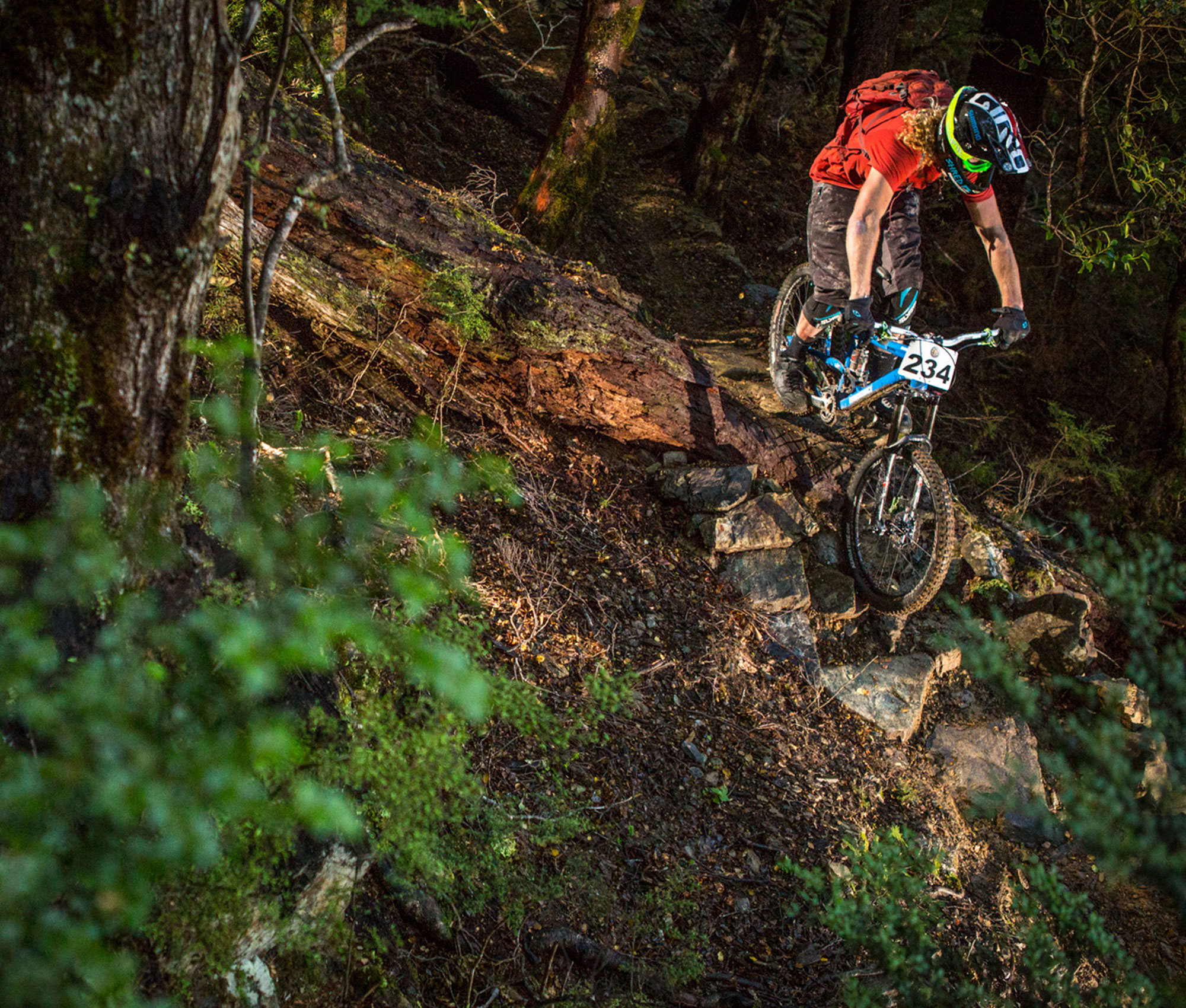
Wyn Masters – Former employee of NZ Trail Solutions and current Pro rider. Winner of DME #10
Dodzy was one of the guys that inspired me to chase this life I am living now, he always had an infectious energy and stoke that rubbed off on everyone around him. I was proud to call him a friend and have nothing but great memories of him, he paved the way with the trail building for many of the young Kiwi riders providing them with well-paid trail-building jobs, which in turn allowed them to chase their dreams. The Dodzy Memorial Enduro has been the perfect tribute event to him over the years, finally showcasing all the work that was done at Wairoa Gorge and bringing together everyone for a weekend of stoke. I don’t think we have a place like it in NZ, where the trails were hand-built with no real set budget. For me, it’s always special to make it back there, and it is one of my favourite events, and to stay on-site with a good group of Dodzy’s mates this year in the final edition of the DME, and wake up to that view every morning was just special! I know he would be looking down, smiling and saying, “Yeah bois”.
Gabby Molloy – Dodzy’s partner & winner of Elite Women DME #1
My memories of Dodzy are unforgettable, to say the least. Admittedly, we were living the dream, so it makes sense there would be good memories. There was something really different about Dodzy; he simply didn’t fit into boxes, none of them. It was almost like he chafed to New Zealand Mountain Biker56 follow others. If he could see an improvement that could be made, he couldn’t stand to leave it alone, he had to make it better and that went for everything; his riding, his bikes, our farm, the skills coaching, the trail building, on every front he simply couldn’t sit still until he’d solved the problem and found a better way.
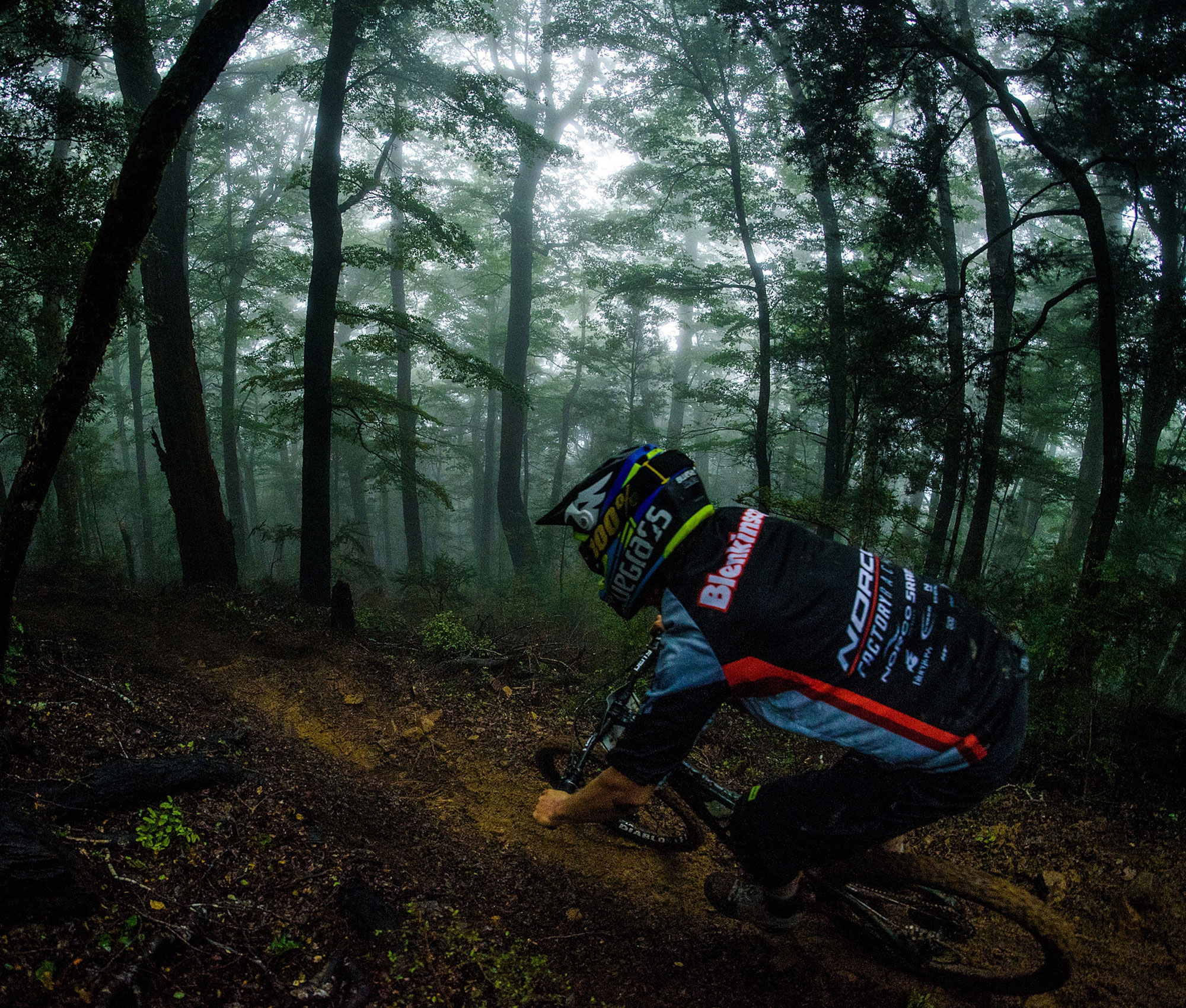
I think one of the lasting effects his personality left indelibly on people was that infectious need to improve things, to question the status quo, to not give a &*%$ what anyone else thinks of your idea, just back yourself and dive right in.
When it came to partying, that box also had to be adjusted. For Guy Fawkes, we couldn’t buy normal fireworks because they cost too much, so we had to buy butane camping gas cannisters and blow them up instead; you can’t just light a fire in the brazier, you have to build a massive bonfire beside your motocross track and light that. It kinda went like that on a daily basis.
I think one of the lasting effects his personality left indelibly on people was that infectious need to improve things, to question the status quo, to not give a &*%$ what anyone else thinks of your idea, just back yourself and dive right in. And, for someone who would openly agree that reading and writing weren’t his strong points, he certainly made up for it in negotiating!
What I have loved over the past ten years of DME’s, has been the pure celebration of that personality, cherishing that attitude; and no one more than Nick has exemplified that character more. In every conversation we’ve had about Dodzy or the DME, Nick has always kept the fire alive, the need to keep it real for the sake of keeping it real, for Dodzy but also for everyone who loved him and the people he left behind who were touched and affected by that bright spark. Long may it live on – and long may Kiwi mountain biking stay rugged and real!
As you can see, this event was a big task to pull together each year, but with Nick at the helm it survived 10 epic editions. His hard work and dedication should be commended. Everyone who attended is super appreciative of the time and effort he took to keep the good times rolling!
It’s truly heart-wrenching to remember the events that took place back in September 2012, and the flow on effects of Dodzy’s passing. Less than four years later, another hunter also lost his life after being mistaken for a deer in the Ruahines. Jeff Carter recently came across a plaque out in the backcountry, honouring this victim – the words: “Always identify your target” are written across the bottom.
There should be no “70% sure” when it comes to life and death, regardless of whether it’s driving a vehicle, riding a bike or pulling a trigger; 100% certainly of what you’re doing and the decisions you’re making is paramount. The impact of Dodzy’s death reached far and wide, circling the globe, and even a single avoidable death is one too many.
This article could go on and on, as I’ve only just scratched the surface of the event and all the stories, friendships, and memories that stem from it. One common thread is that we were all there to remember and honour our mate Dodzy, and everyone agrees what a stand-up legend he was.
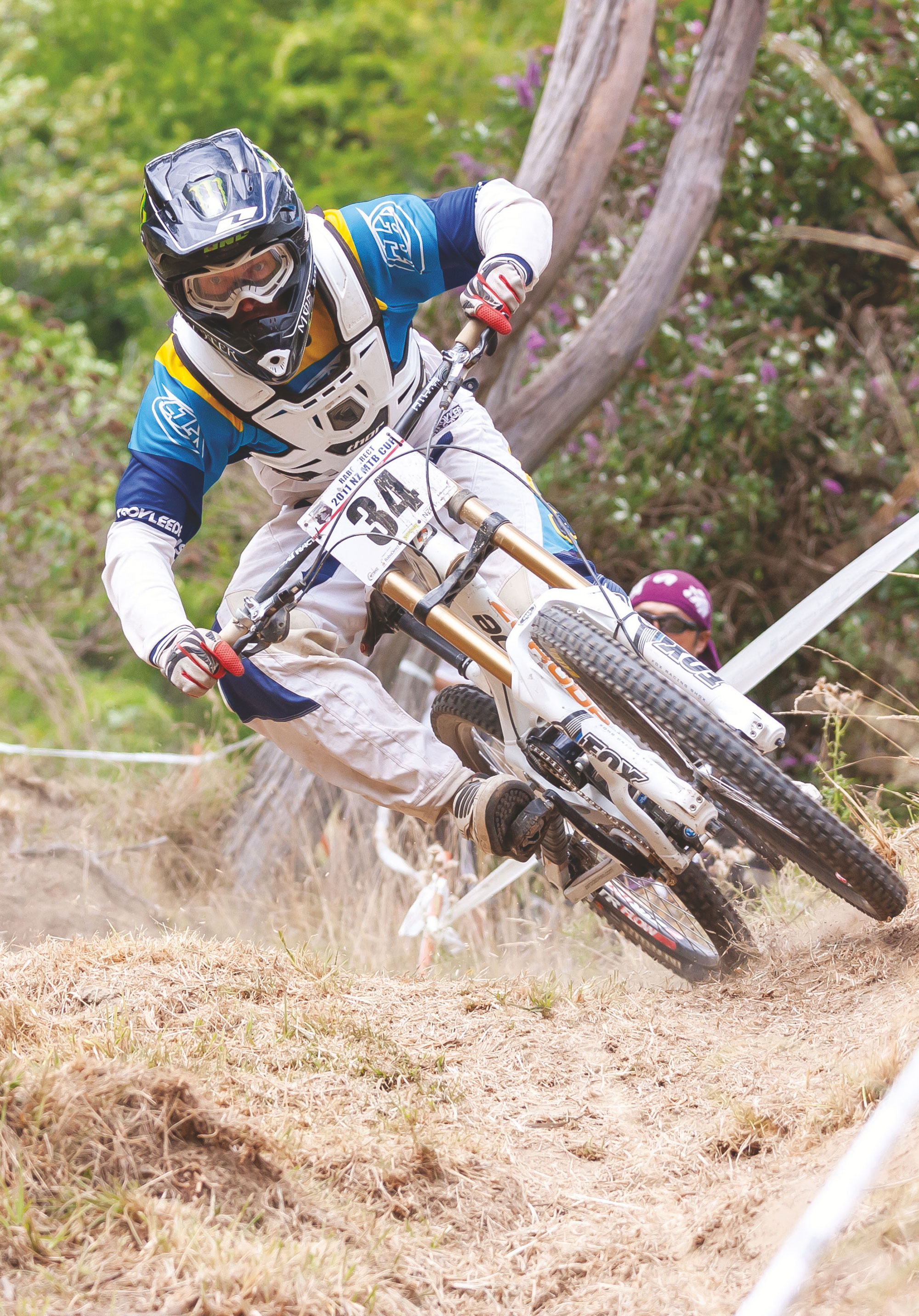

Vinny Armstrong: Striking a balance
Words & Images Riley McLay
Freeride mountain biking is experiencing an exciting renaissance. After enduring a period of identity crisis, the discipline has finally found its footing. More freeride-specific competitions are filling up the international calendar, and brands are once again investing in high-quality long and short-form creative content to promote their athletes and products.
The constant presence of other skilled female riders provides the perfect motivation and chance to feed off each other to progress personal skills during the long New Zealand summer.
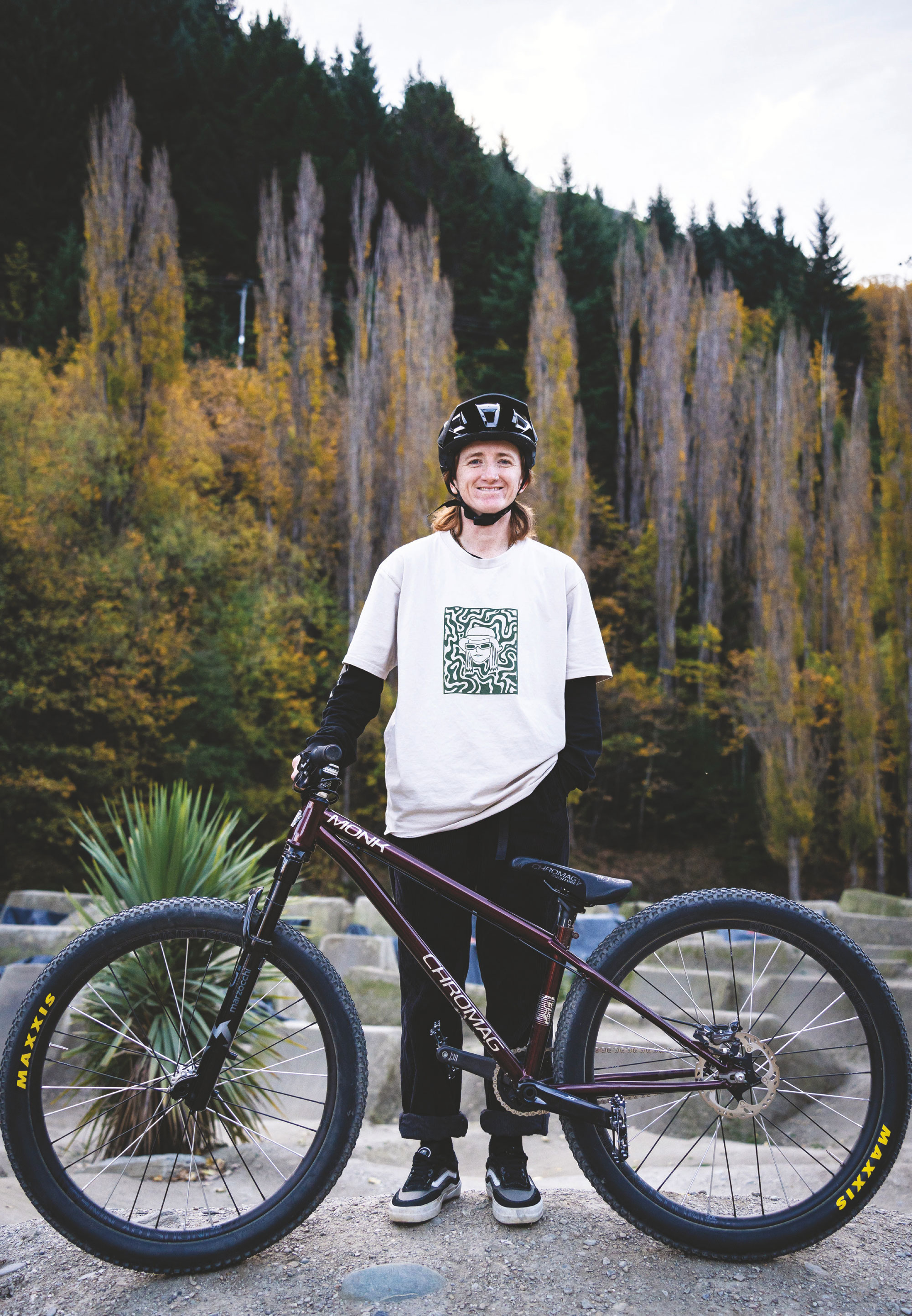
Not to mention, there’s currently a strong focus on inclusion and a move towards equal opportunity for female athletes that is pushing us even closer to equality within the sport. Vinny Armstrong exemplifies what it means to be a freeride athlete and, in this ever-evolving landscape, continues to define her own unique style on and off the bike. Utilising not only her distinct riding style but also her all-round creative perspective, to further inspire and propel an increasingly expanding female freeride community.
Vinny Armstrong stands out as one of the most recognisable female athletes in the scene. Her signature aerial maneuvers have earned her numerous victories in Crankworx Whip-Off competitions worldwide. She has also showcased her impressive technical skills with strong performances at events like Red Bull Formation. Vinny has had a fruitful start to 2024, managing to find an ideal balance between her personal and professional life.
“It was honestly the best New Zealand summer I’ve ever had. I feel like I’ve learned how to become an athlete over the past year” says Vinny, having taken a holistic approach to her training over the summer. She’s chosen to limit her time on the bike to avoid burnout, with her new-found love of hiking allowing her to discover new parts of the beautiful New Zealand backcountry, whilst giving her a chance to reset and keep her career aspirations in perspective. A weekend mission away with friends serves as the perfect way to detach from the pressure of upcoming events. From an outside perspective, the life of a pro mountain biker might seem like an endless holiday, however, mastering the ability to train and peak skills in time for events is an art in itself. Not to mention the substantial effort needed to secure the support and backing required to participate in these events in the first place. Managing her career on a day-to-day basis presents its own set of challenges, however, focusing on her personal health and well-being is integral to Vinny’s professional success.
Vinny has been able to thrive, while standing out in a predominantly male-dominated discipline, becoming one of the leading faces of the female freeride movement. This movement focuses on increasing inclusion, opportunity, and competition in the sport, demonstrating that female riders are not only capable of tackling the same features and terrain as male riders but can also carve out their own legacy through their riding. The movement has made significant progress, but more still needs to be done for female riding to reach its full potential. Female participation at premiere competitions is no longer a novelty, it is now the standard moving forward. In fact, the impressive and inspiring riding is not only captivating for spectators and fellow riders, but also for a new generation aspiring to emulate these female pioneers. Vinny exemplifies this perfectly, as her huge whips consistently electrify a crowd, rivaling even the top performers in the men’s category. However, some outlets have been slow to evolve their approach when covering female riding, often sticking to repetitive questioning styles when interviewing female athletes. Instead of focusing on the specific riding they are witnessing, they focus on the overall concept of female progression. While this approach is well-intentioned, there’s a concern that it might inadvertently diminish the achievements of female athletes and impede further strides toward gender equality in mountain biking. Nevertheless, women’s freeride has consistently achieved significant milestones in recent years. Evident by the success of the first-ever female FMB diamond event held at the recent Crankworx Rotorua. Not only was this an opportunity to showcase female riding to the crowds packing the banks of the Rotorua hillside, but it was also a chance to demonstrate to the world that contests like this are imperative to continue giving female riders a platform to learn and grow from – not just as riders, but as well-rounded athletes.
Vinny has been able to thrive, while standing out in a predominantly male-dominated discipline, becoming one of the leading faces of the female freeride movement.
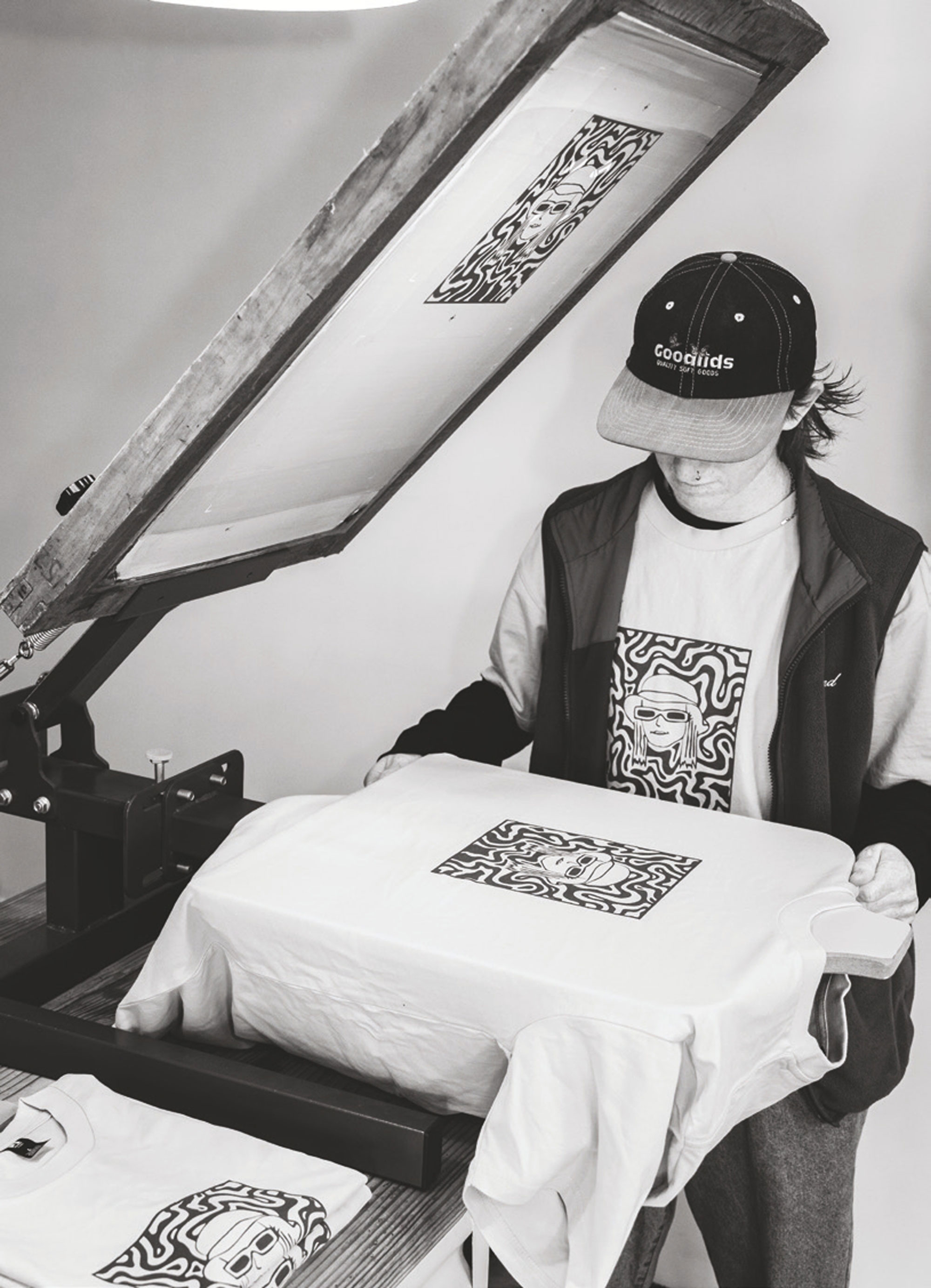
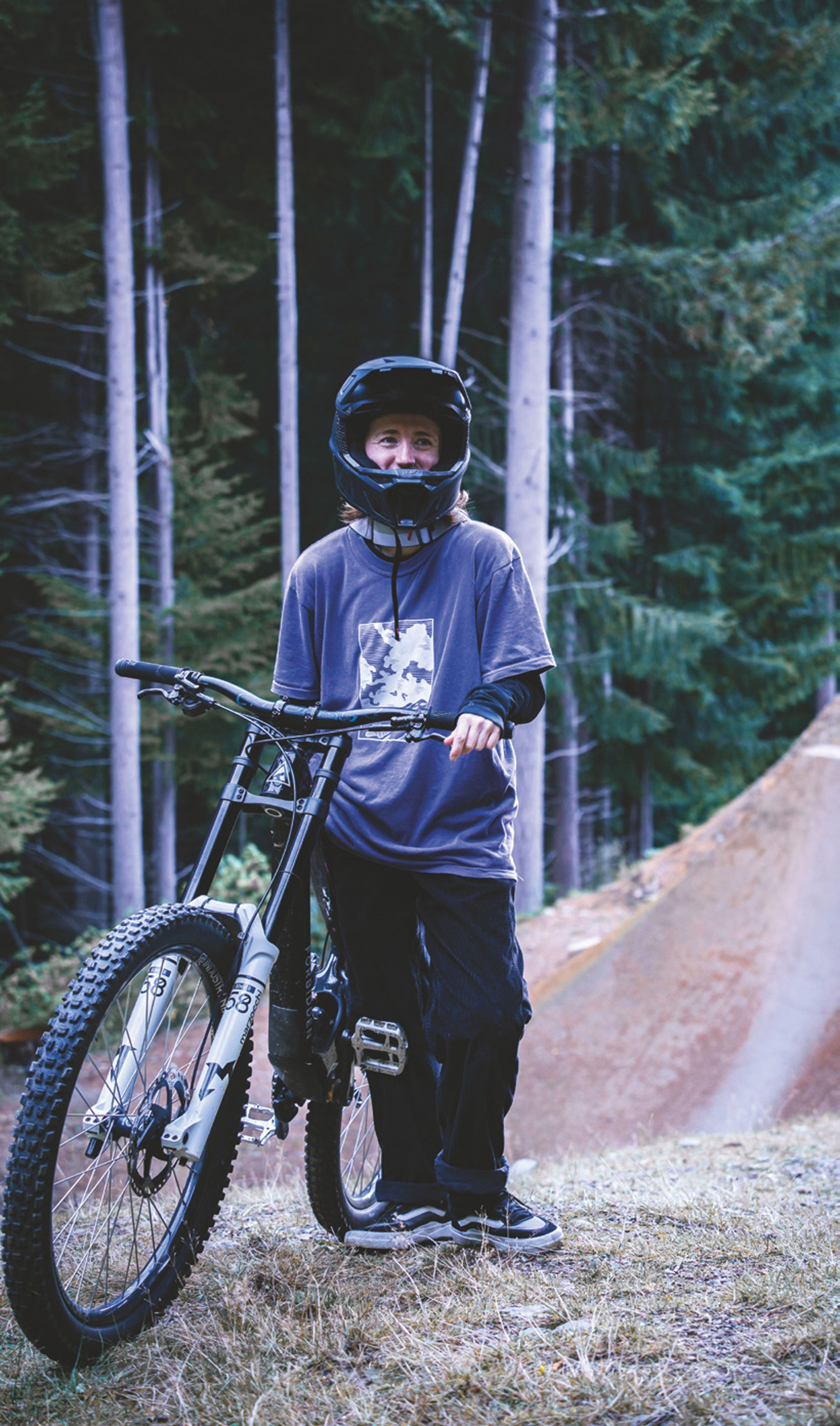
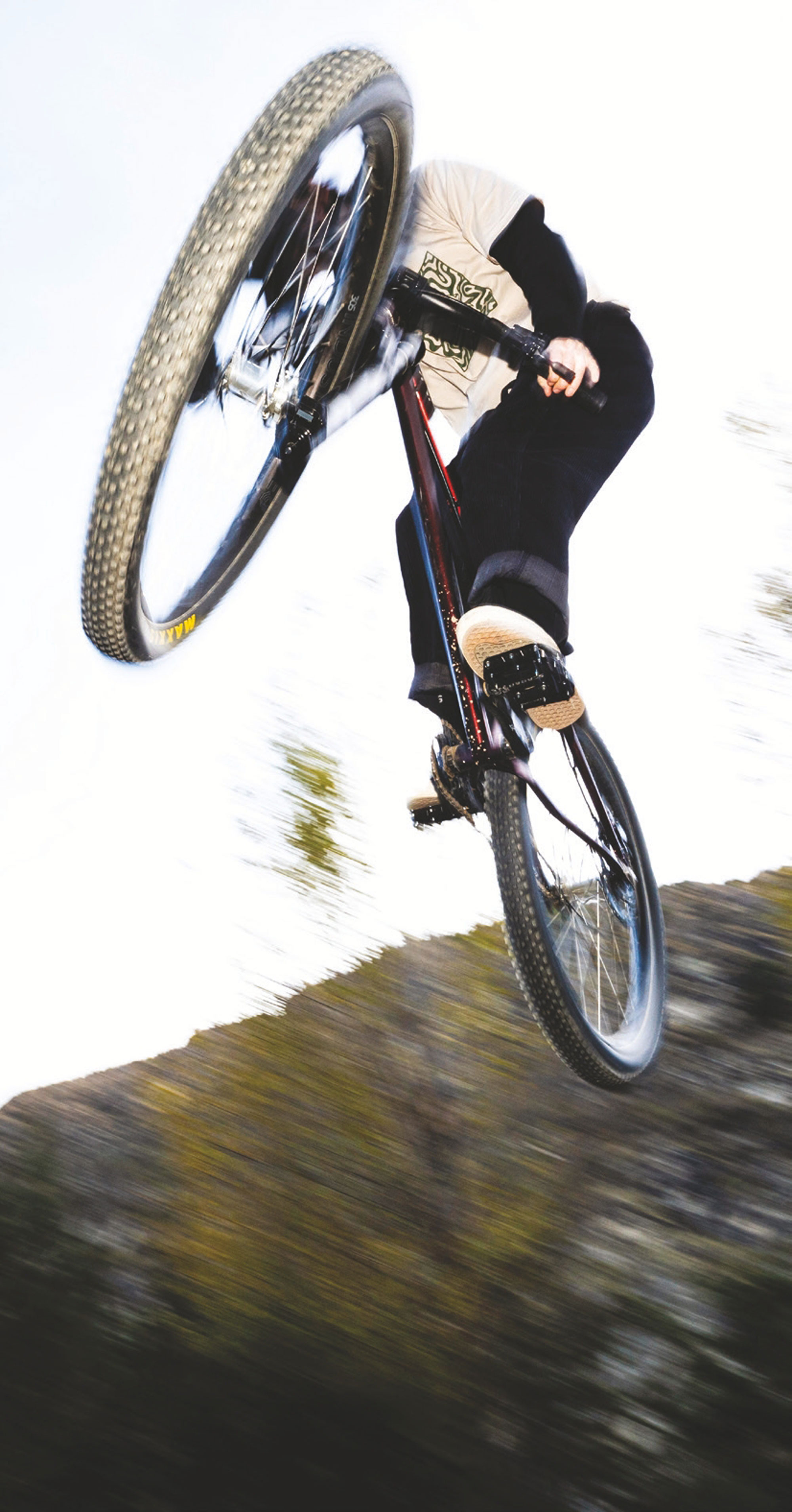
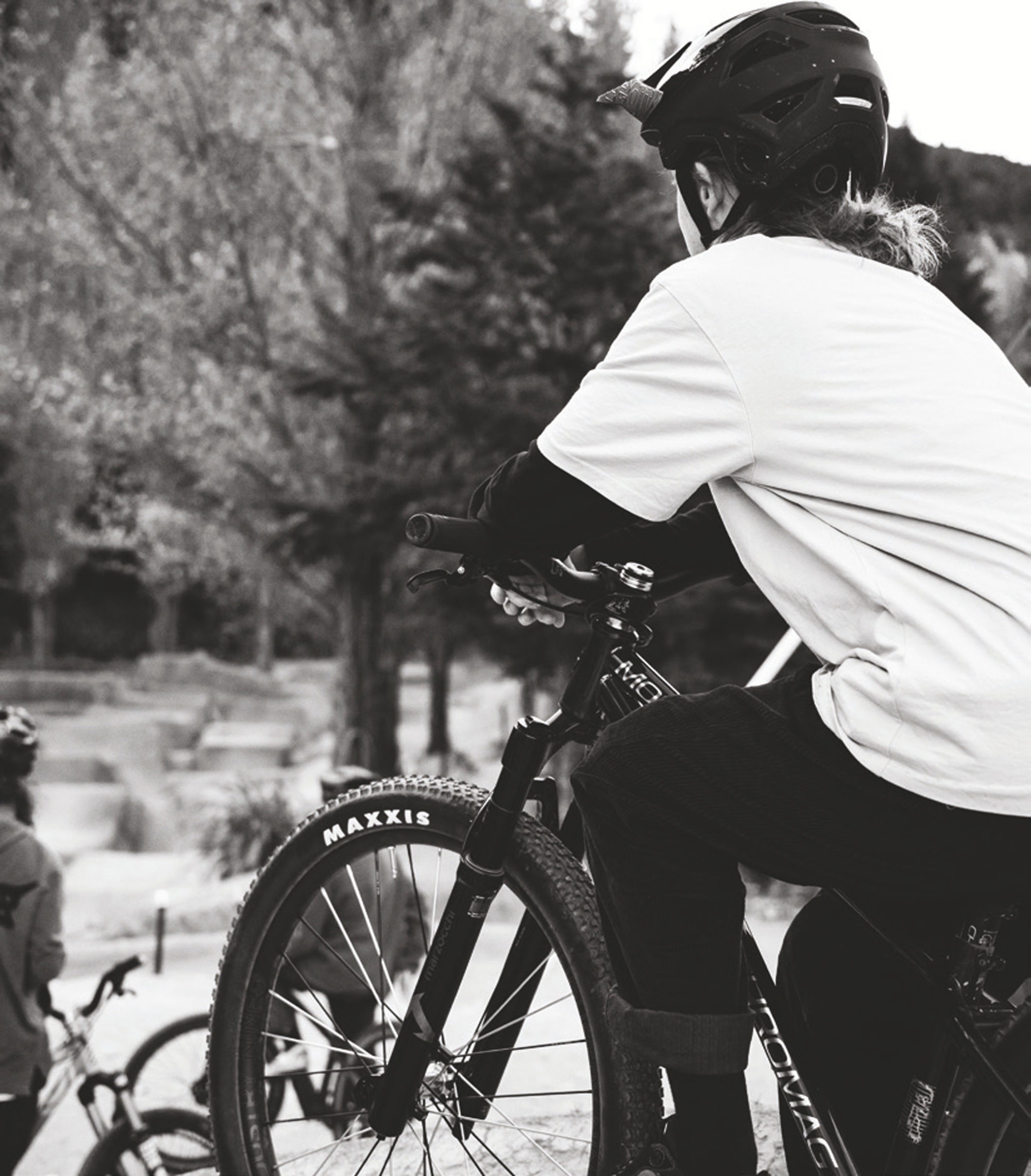
Originally from Auckland, Vinny has made the mountain biking mecca of Queenstown her home for the past six years. The opportunities presented by the Queenstown scene made this a no-brainer decision for Vinny, who credits a lot of her success to the move. The constantly improving world-class trails and facilities serve as the perfect training environment and came as a natural progression to her home riding spot at the Woodhill Bike Park. Whilst she bid farewell to her family in the north, Vinny has been able to build a new family amongst the Southern Alps. The local community’s emphasis on strong family values resonates deeply, especially within the frequent influx of seasonal nomads who come and go. This is a classic case of ‘come for the riding, stay for the people’. The inclusive culture of the town has also attracted high-profile female riders like Robin Goomes, Harriet Burbidge- Smith and Martha Gill, to make it their base during the northern hemisphere off-season. The constant presence of other skilled female riders provides the perfect motivation and chance to feed off each other to progress personal skills during the long New Zealand summer.
While time on the bike is crucial when preparing for an event, the quality of that time is even more important. When preparing for an event like DarkFest, Vinny strives to emulate the distinctive big air style of riding that the mountainous slopes of South Africa are renowned for. Basing herself in Queenstown has provided her with the perfect training facility for this style of riding, enabling her to fully utilise the Wynyard Jump Park and access some of the world’s largest public jumps, all right at her doorstep. Vinny also uses a specifically set-up Forbidden Dreadnought, tailored for this style of riding. This eliminates the faff of continuously adjusting settings for various riding scenarios, allowing Vinny to concentrate more on her riding.
This year’s DarkFest event presented its own share of unforeseen challenges. Vinny was among the riders affected by an illness circulating within the group. To compound matters, persistent high winds on most event days greatly reduced riding time. Despite these obstacles, Vinny managed to rally and clinch the best whip in the female category. While grateful for her achievement, she feels she has unfinished business and has set her sights on a goal of completing a full top-to-bottom lap of the course in the coming years.
Vinny is gearing up for another busy northern hemisphere season. Kicking off her European leg of the trip, she’s prioritising personal riding progression over what can be a hectic event schedule. This will let her focus on her own skills while staying flexible around a busy event calendar. Through her hard work, she’s now in a position where she doesn’t need to pursue every opportunity that comes her way and can focus on what is best for her career. She will base herself out of the UK, to make the most of the growing and improving freeride scene in the area. One of the events she’s looking forward to the most is Vero Sandler’s Backyard Battle in Wales, a new event to the calendar where riders like Vinny can showcase their skills in a more relaxed environment. Relaxed jam-styled formats are always a rider favorite, as you are normally flexible to work with the weather and it lets you enjoy the riding as a collective rather than as individuals. For Vinny, it’s an excellent chance to reconnect with many of her freeride friends who don’t typically make the trip down to NZ in the winter months.
From an outside perspective, the life of a pro mountain biker might seem like an endless holiday, however, mastering the ability to train and peak skills in time for events is an art in itself.
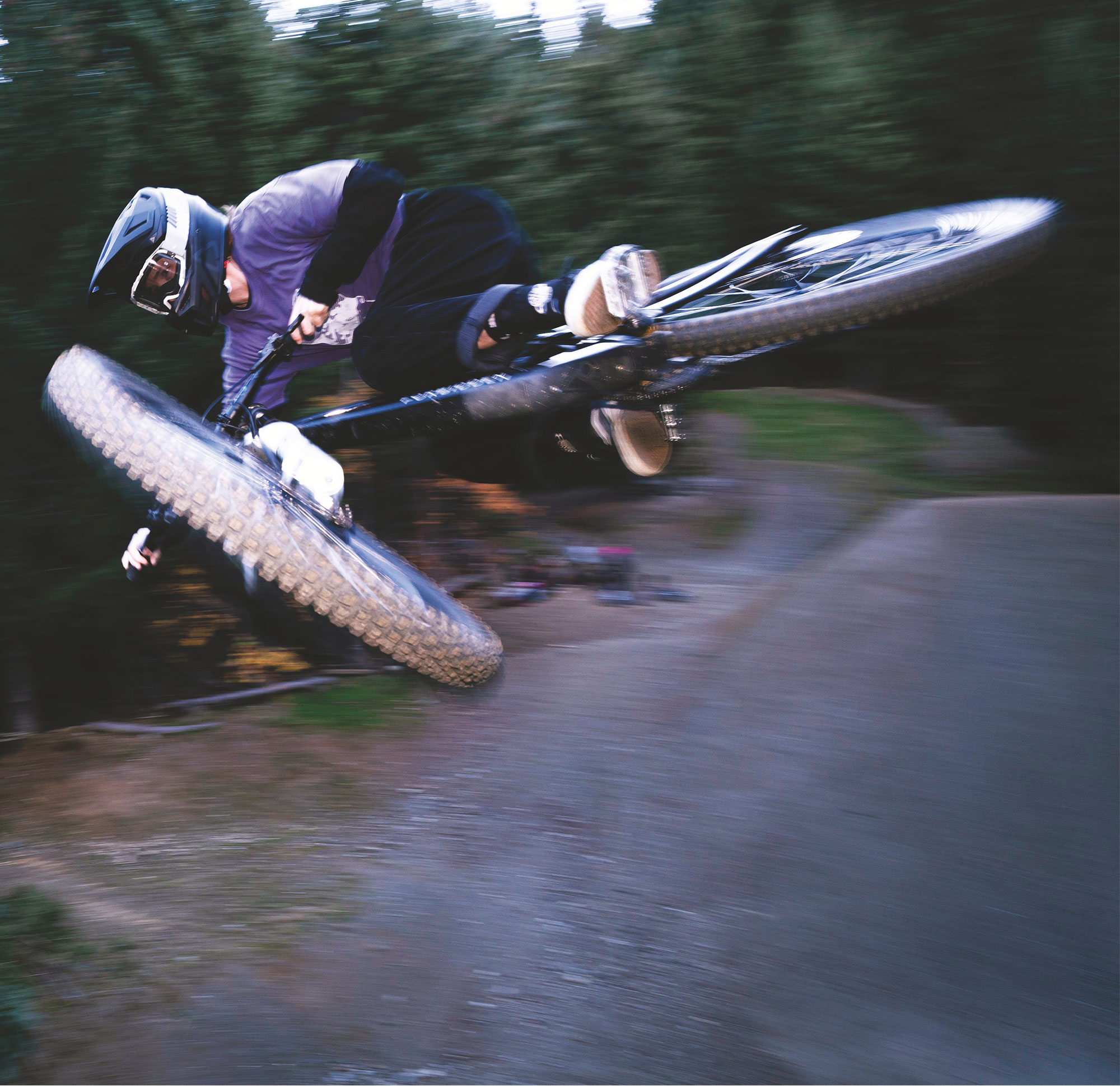
She will then have a stint in Canada where she will take a break from most events, allowing her to focus on her other passion of creating high- quality visual projects. Although participating in events provides exposure across various media platforms, fostering your creative expression through curated content, whether it is a long form video part or a photo project, allows you to put your own imprint on the scene.
“I feel like I can push myself much more while filming, than during events. It’s a positive kind of pressure that drives me to achieve the best possible results,” says Vinny. Working with a creative-focused brand like Forbidden has allowed Vinny to bring out her artistic style and showcase her ideas. Focusing on being intentional about both what she shares with the world and how she presents herself at events is crucial for creating her own identity as a rider. Her relaxed skate-influenced style blends effortlessly with her style on the bike, helping her carve out her own niche in the scene. Vinny’s passion for graphic design allows her to further tap into her creative side, incorporating her own graphic t-shirt designs into her riding outfits. Collaborating with friends along this journey makes the process even more enjoyable. This is more of an experimental artistic venture with no plans in the near future to make it a commercial one. This is because Vinny’s art greatly represents herself more than anything else. Being able to create and showcase her own ideas at different events is very empowering and is not only a way to help push her own career forward, but to progress and inspire the next generation of female riders who aspire to be just like her. Fingers crossed we’ll see Vinny, in her own designs, on the main stage of a female Red Bull Rampage event in the near future.

First Impressions: Trek Top Fuel
Words Liam Friary
Images Cameron MacKenzie
Have you ever been kept up late at night reliving distressing memories? Does your mind chatter and strong emotions interfere with your day-to-day? Are you looking to understand yourself more and make some changes? If your answer is “yes”, then we should talk.
My lived experience with mental health gives me a strong appreciation of the journey we take from being in crisis mode to thriving. I want to work with you to help you get to where you want to be. The focus will be on what I can do to support you in your life’s journey. I do this by utilising an integrative approach that best suits each individual.
When you’re ready to take that step to seek support, I’ll be there for you. Call or email me so we can schedule our first session and get you to where you want to be.
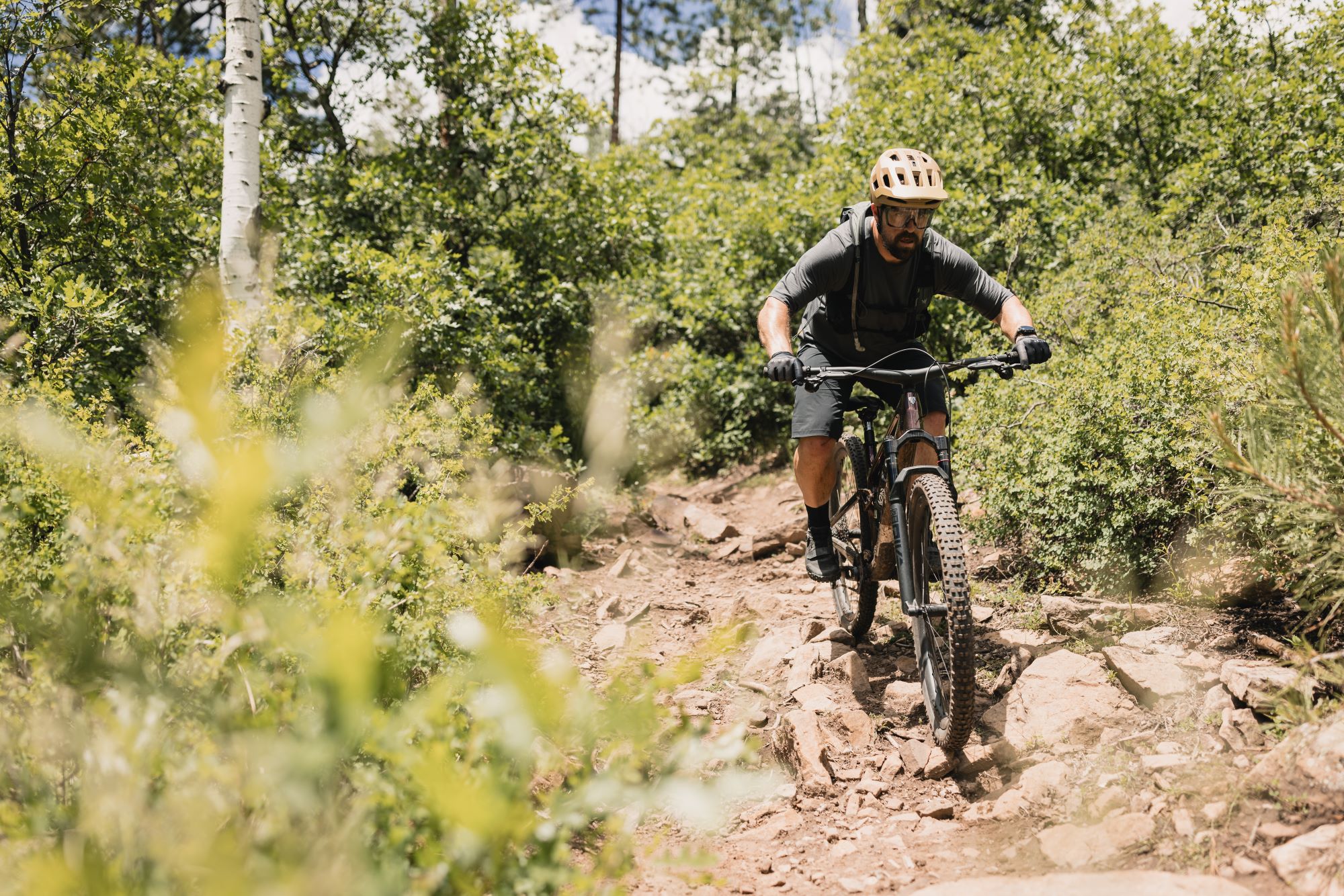
Daniel is available on Wednesdays, Thursdays and FridaysThe latest Trek Top Fuel is one of the most versatile to date. This fourth-generation platform encompasses the heritage of XC from earlier generations while nodding to the future with more travel and capability. The lines are somewhat blurred between an XC long-travel bike and a lightweight trail bike. Regardless of categorization, the bike is designed to be super-adjustable with a redesigned frame and a 4-position Mino Link. There’s also a ton more you can customize, like wheel size, geometry, and suspension travel, making it super appealing for everyday trail riding or even XC racing duties.
Trek has opted for refinement rather than revision, a trend the industry is increasingly embracing. Generally, bikes are in a good place regarding geometry numbers, so there’s no need to reinvent the wheel—at least for now. While the new Top Fuel looks similar to the previous generation, it has gone on a slight diet with about a 100g savings in the carbon frame and uses slimmed-down tubes across the entire frame. The new 4-position flip chip, used for adjusting the bike’s geometry or the amount of shock progression, is located at the lower shock mount. This flip chip offers High/Low geometry settings that modify the angles by 0.5° and change the BB height by 6mm. Additionally, you can move the suspension leverage rate forward and backward with the flip chip. The forward position offers 14% progression, while the rear position offers 19%, providing more ramp-up at the end of stroke. I rode mainly with the rear, more progressive position and found it better suited to my riding style and the terrain where testing was done.
I appreciate the ability to change out the rear and front travel if desired. The rear shock is built around a 185x50mm shock, but you can increase the stroke to 55mm and boost travel to 130mm. The frame is rated for a 120-140mm travel fork, which allows for different setup options such as an XC whippet with 120/120mm travel or a rowdier trail bike with 140/130mm travel. I’m inclined to build the latter, so hopefully, I’ll have more on that sometime soon. If you wanted to have a mullet setup with a 27.5″ rear wheel, that’s also possible with this new platform.
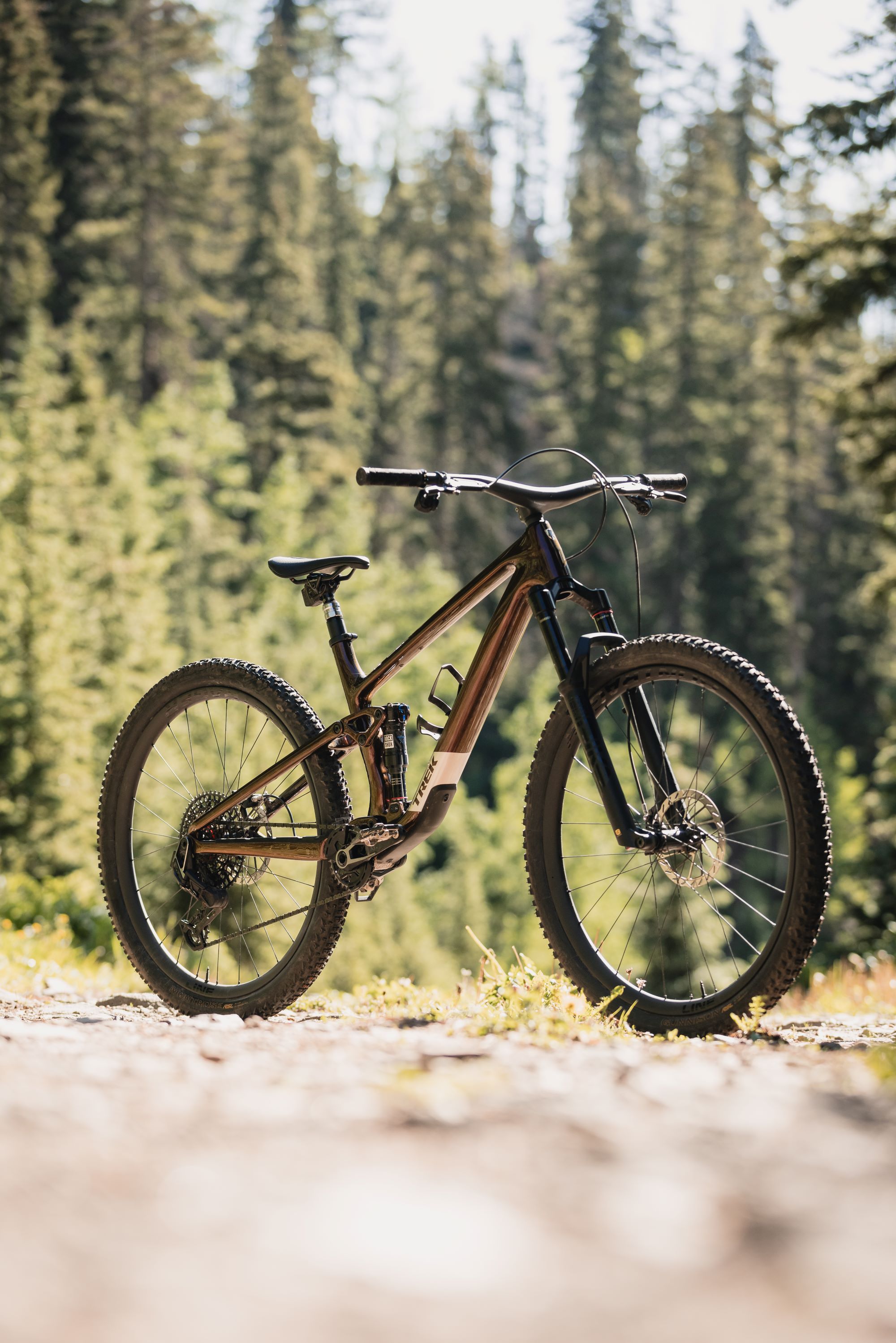
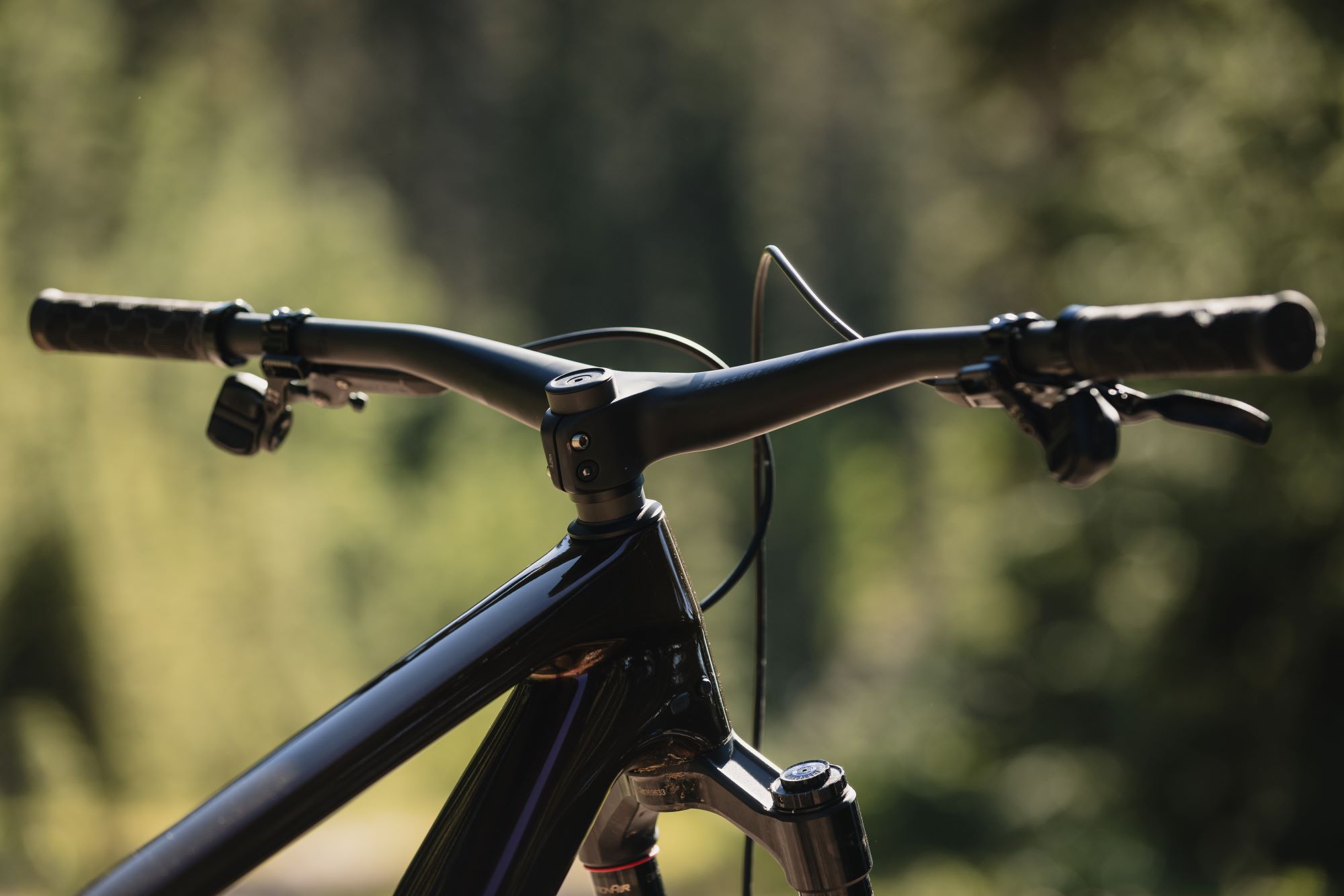
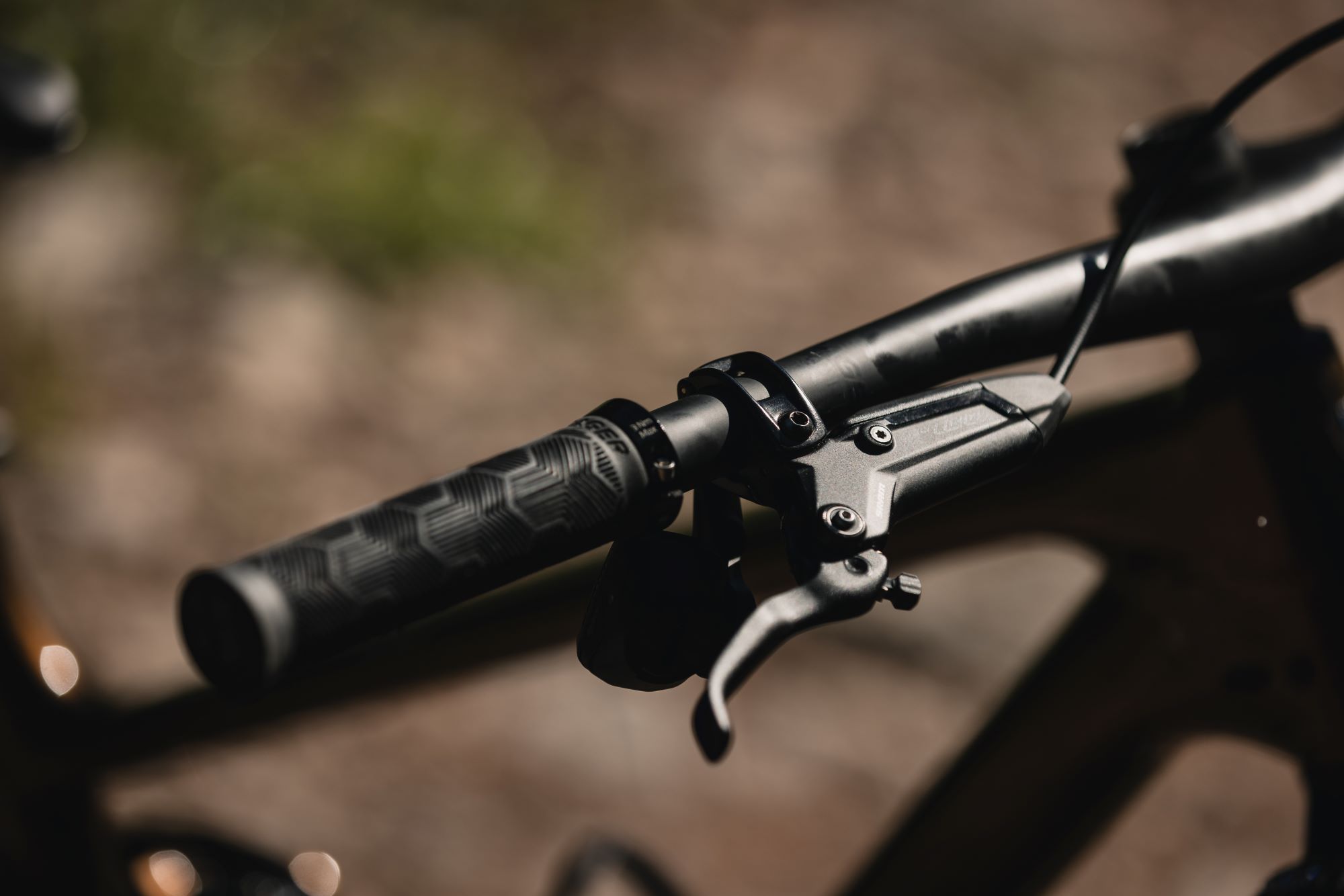
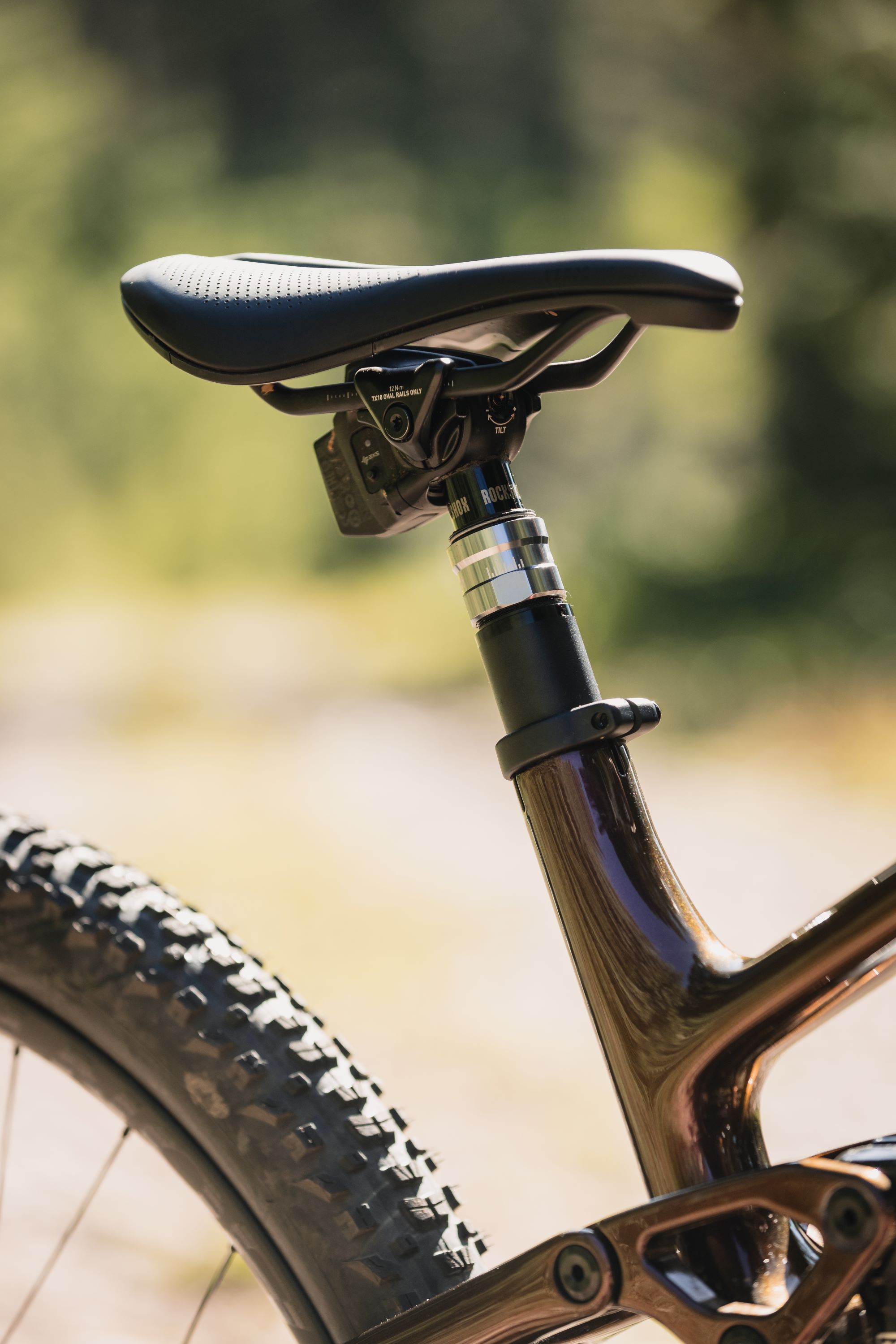
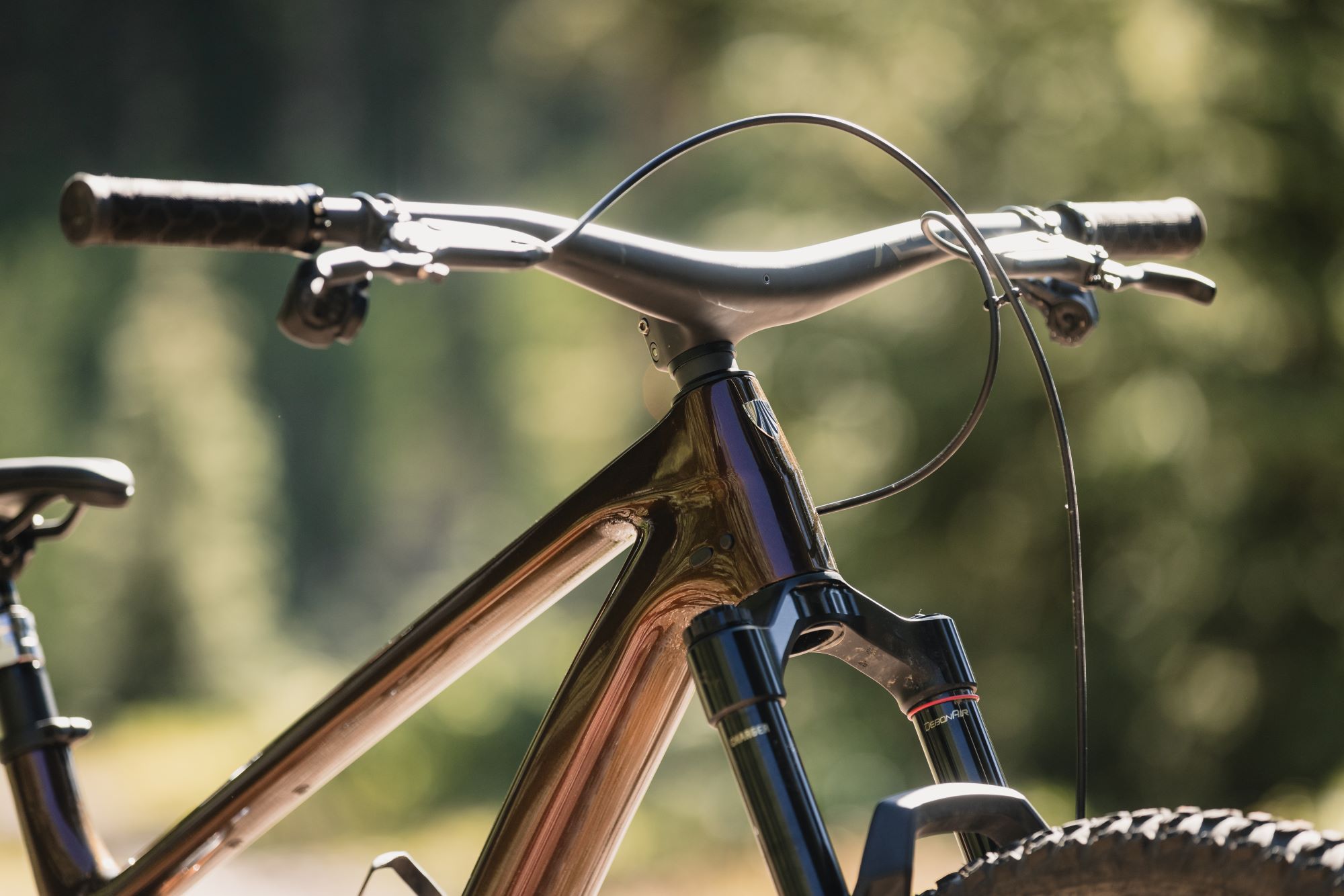
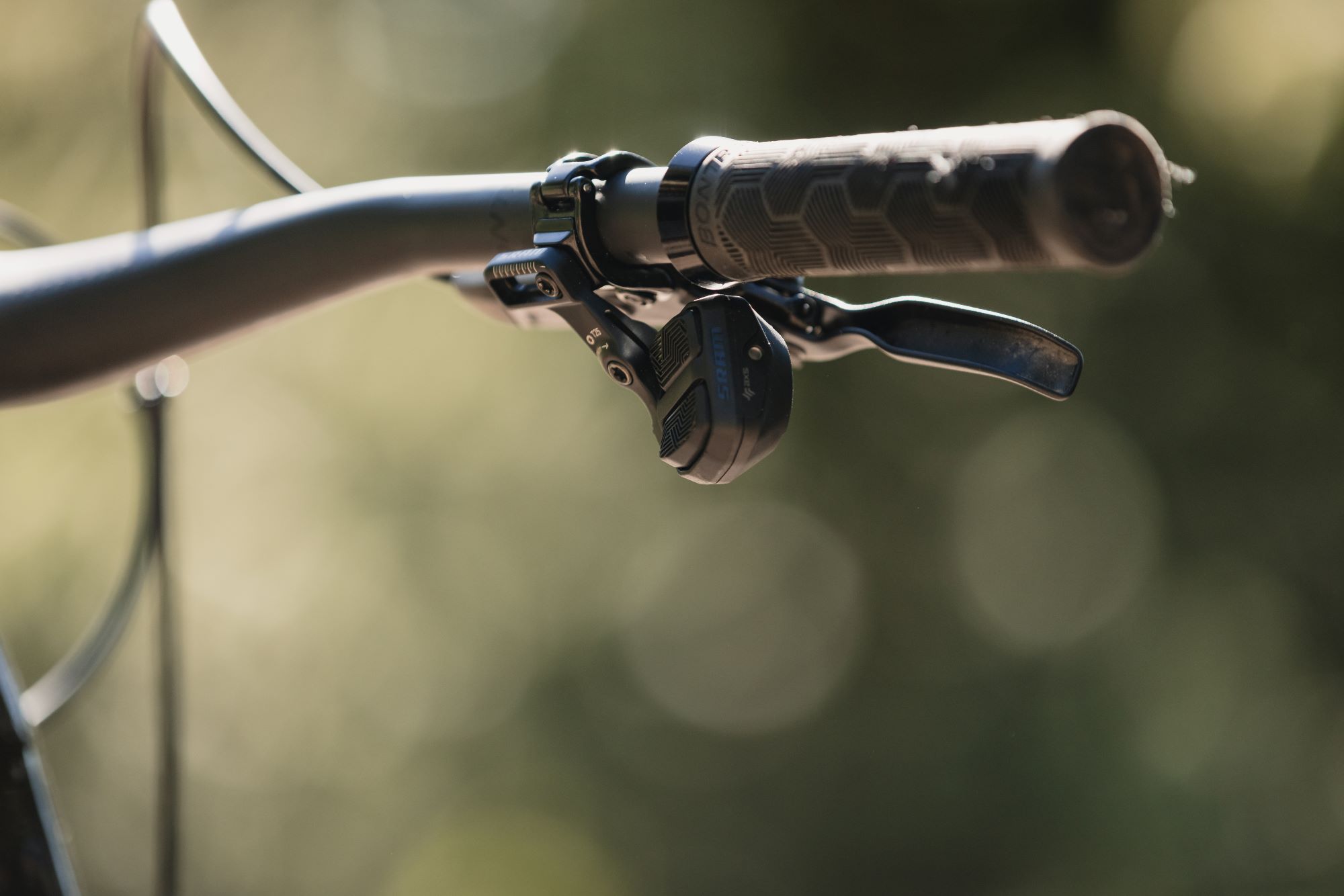
Returning to small refinements, the new Top Fuel is slightly more progressive than the previous generation and has a tad more anti-squat. Rear travel is kept at 120mm and comes with a 130mm travel fork up front. 29″ wheels are standard on all frames except the small, which is built around 27.5″ wheels. The internal storage has also been updated with larger openings and better weatherproof sealing, and cables have been kept out of the way to minimize snagging. Trek has won the applause of shop mechanics by keeping cables out of the headset and eliminating the Knock Block headset. A tried-and-true threaded BB is used, as well as bolt-on downtube armor and a rubber chainstay protector.
While there are slight changes to geometry, the 65.5° head angle remains consistent across all sizes. The effective seat tube angle ranges from 75.2-76.9° – Trek lists this angle based on a specific saddle height for each size. Another update is the size-specific rear center lengths, which vary from 435mm (smaller frames) to 445mm (X-Large frames).
I had the pleasure of riding the new Top Fuel in Durango, Colorado. There’s plenty more to come from that trip, plus some other riding around North America. Having a week based in Durango meant I could get familiar with the bike, logging over 15 hours of ride time. The first thing that struck me was the pedaling efficiency and overall zippiness of the bike. I rode twice a day locally and had two high-country long ride missions as well. On all occasions, from road to gravel to trail, I didn’t feel the need to hit the lockout lever as it pedaled great wide open. The bike feels swift and light but handles rowdier terrain very well. While the Pike fork nods to more trail-oriented riding, there’s something about the overall frame that makes it more compliant than the white paper stats indicate.
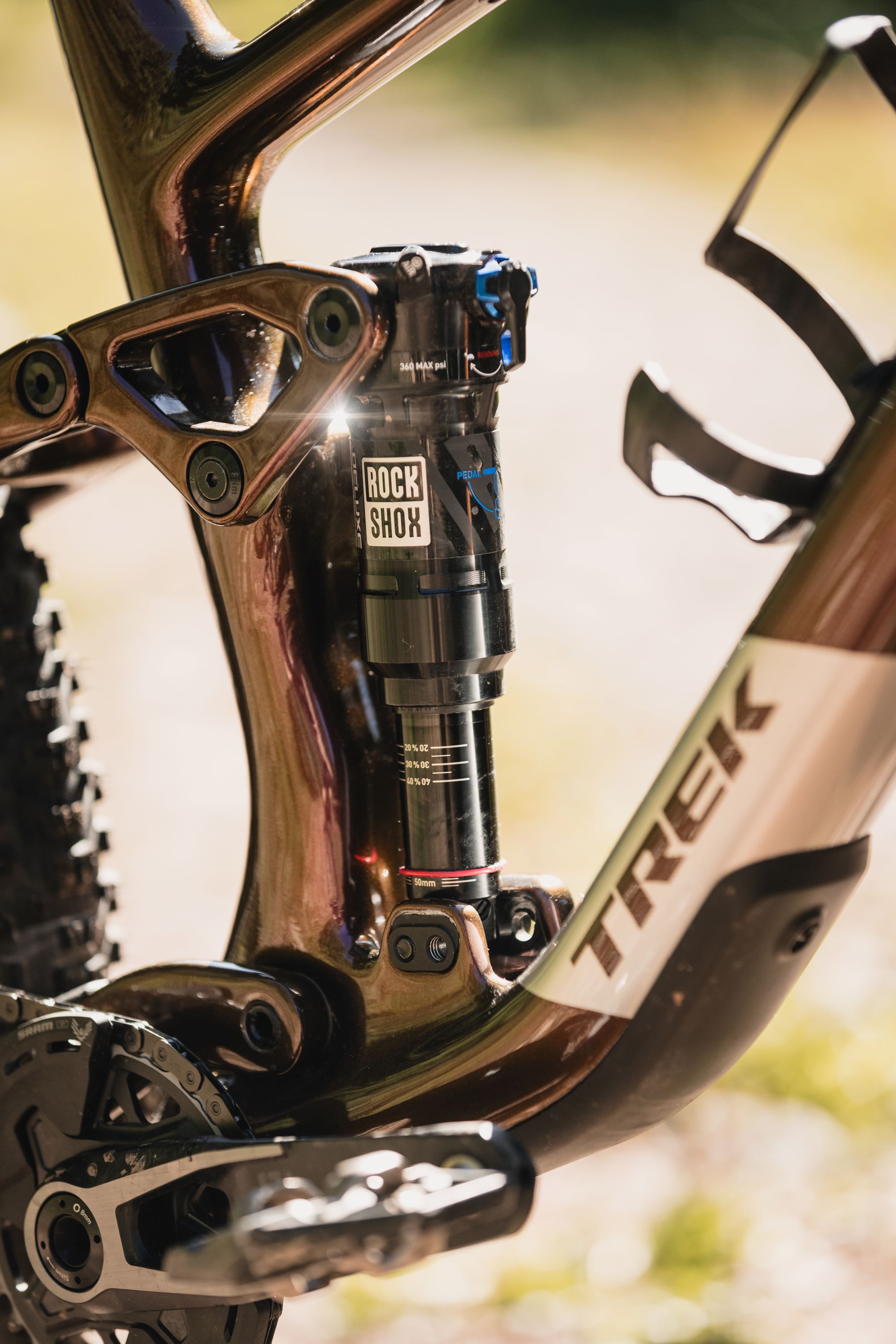
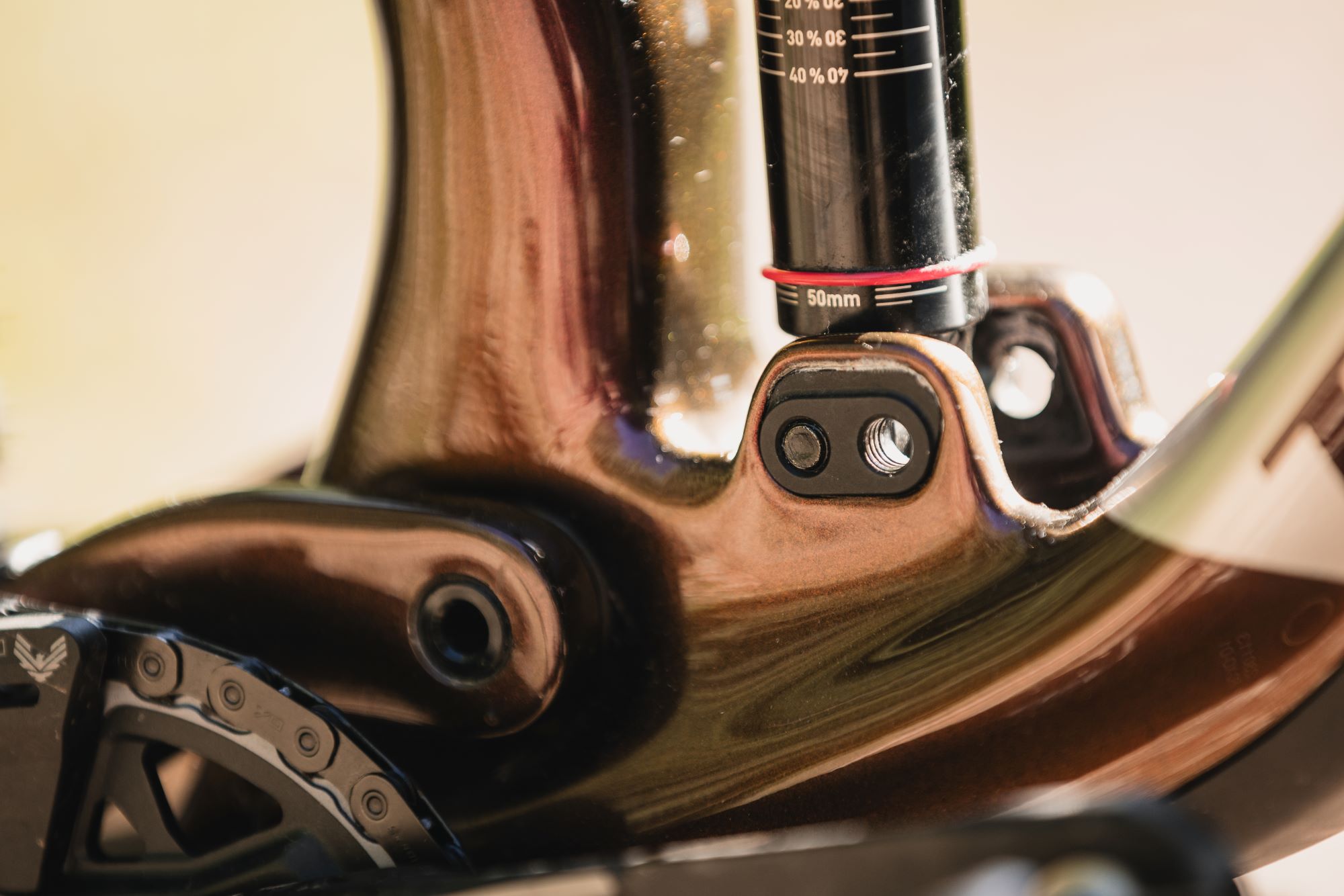
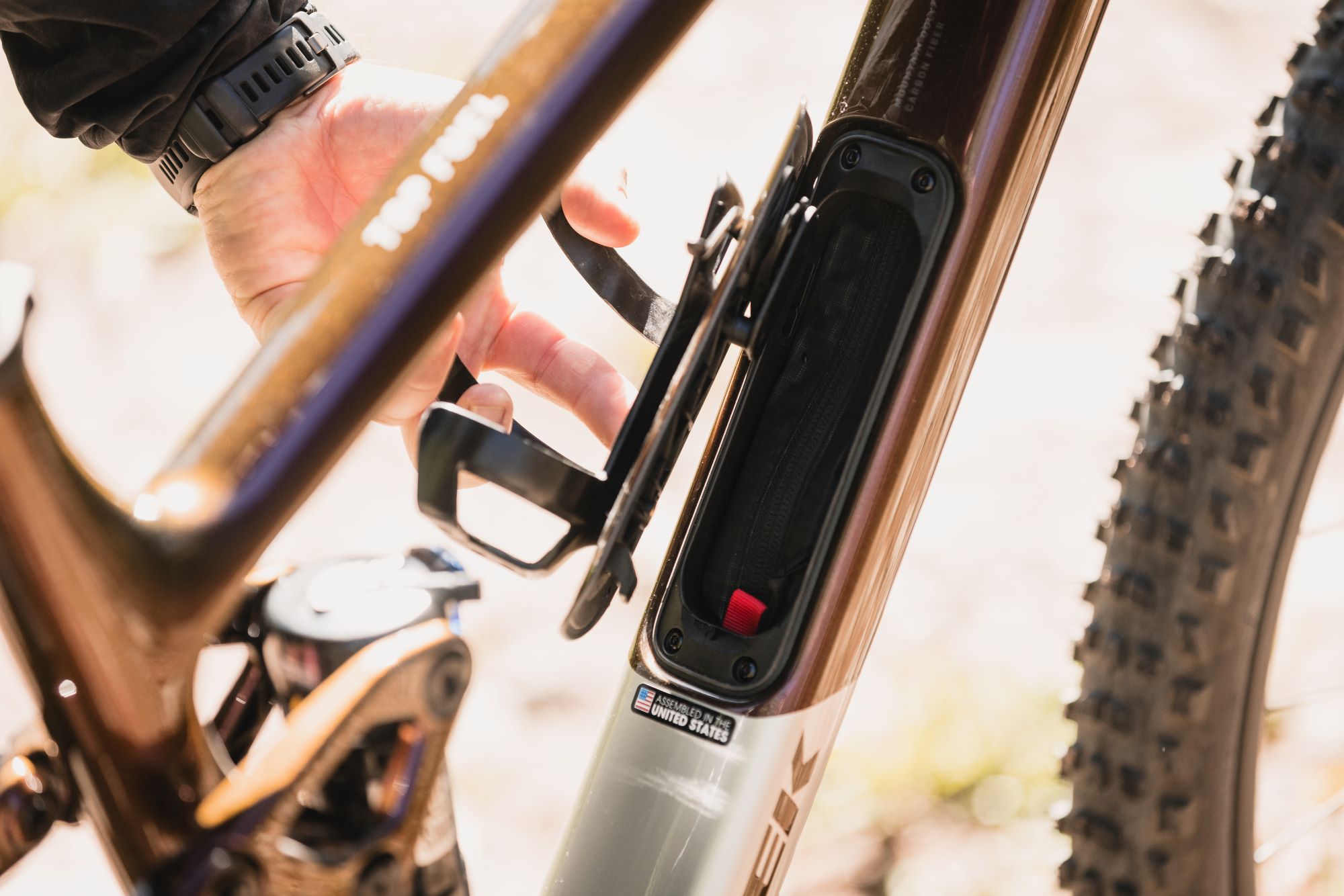
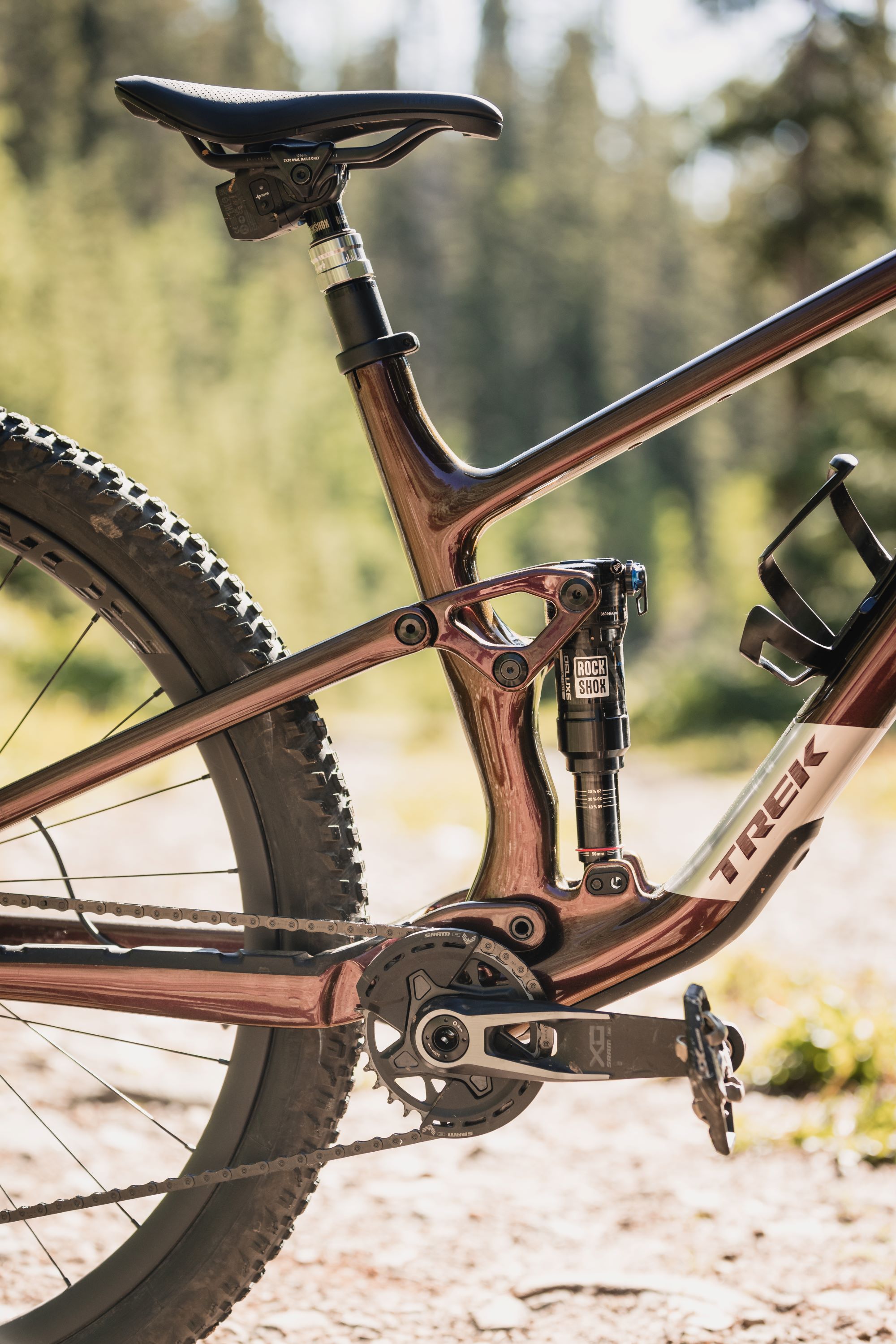
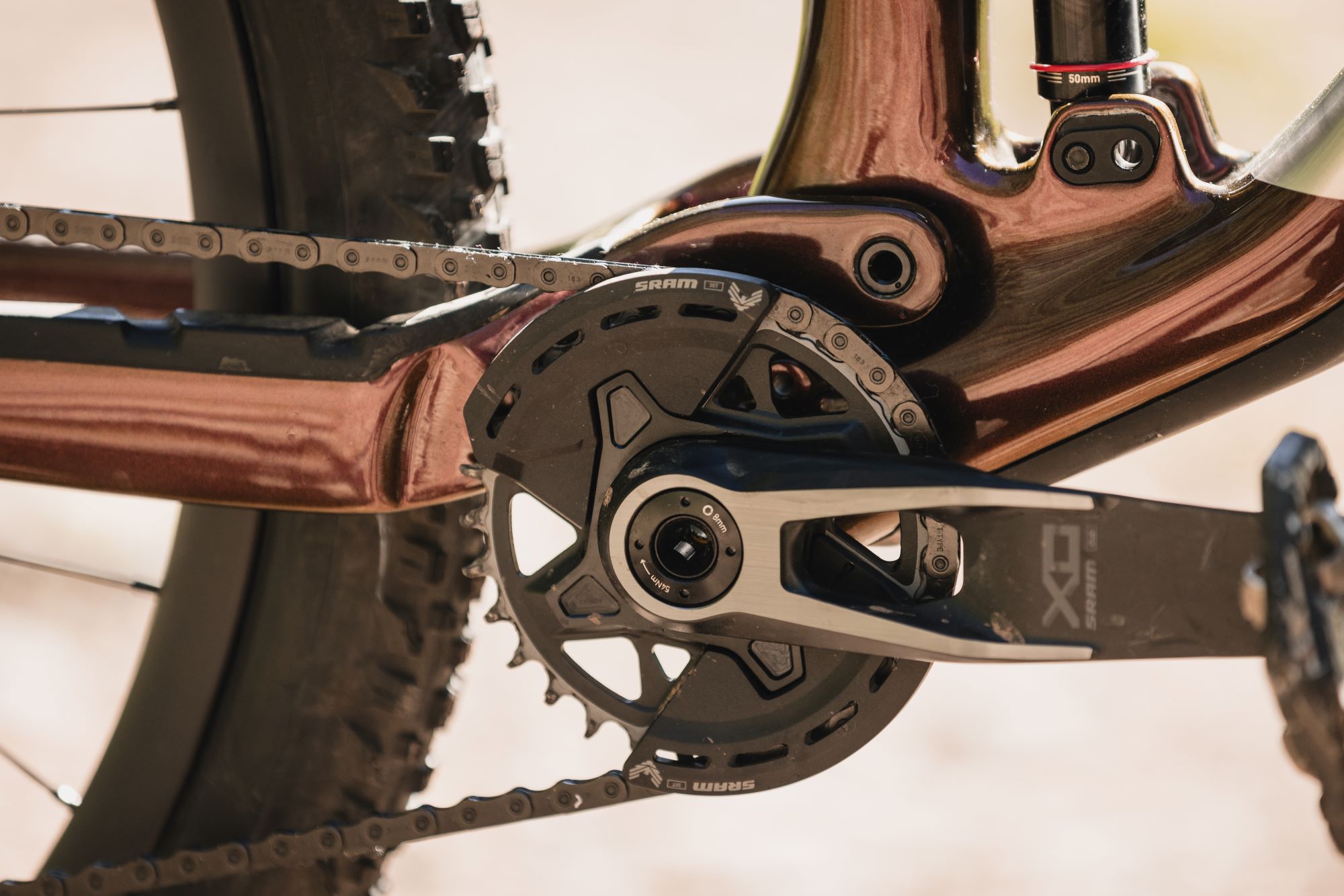
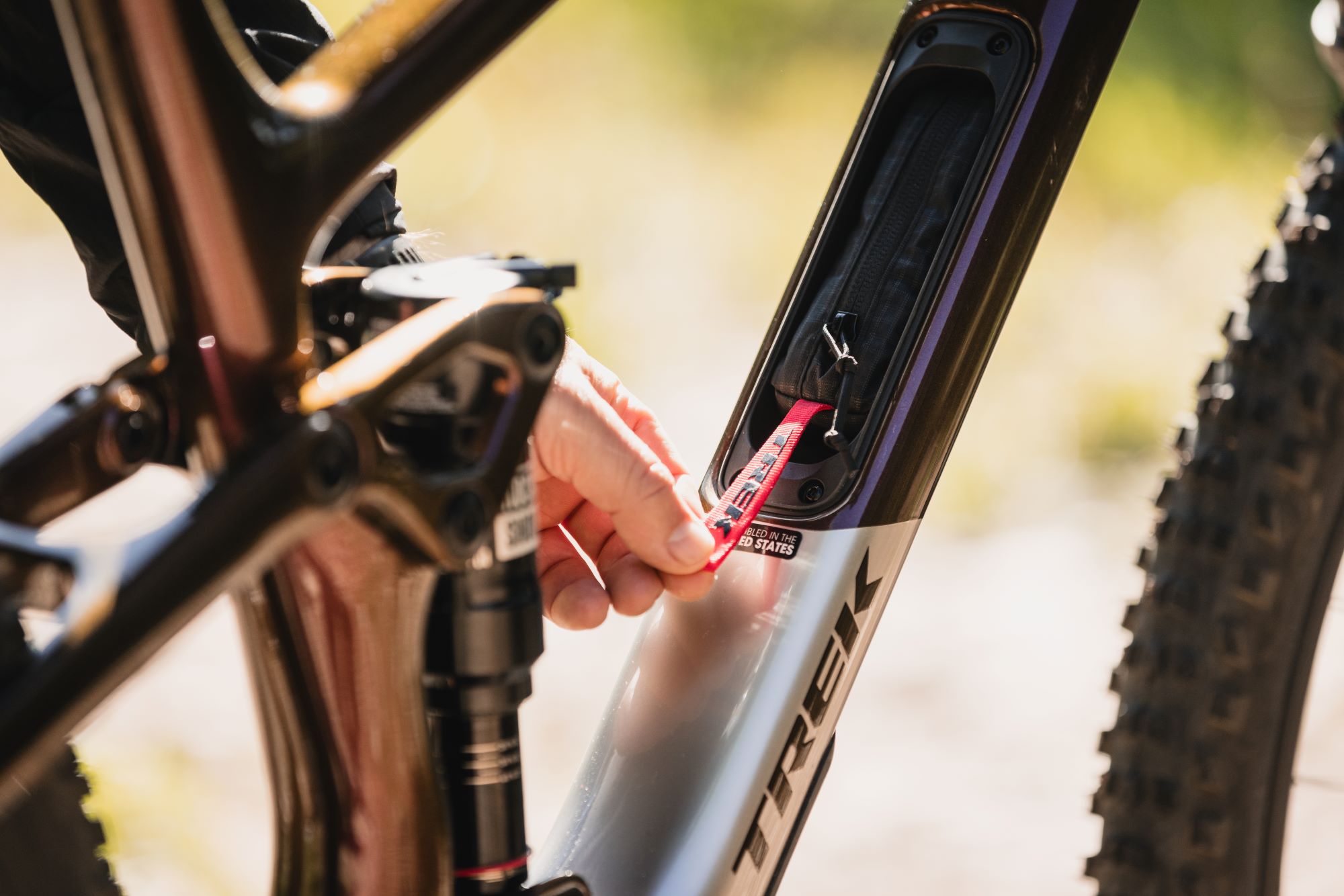
This compliance was evident when we ventured into the backcountry, which made for lengthy descents. The bike would eat up what was in front of it on rougher sections of trail, with the suspension holding its own. The lower progression setting was ideal for the ramp-up. It offers adequate dampening and felt comfortable even after several hours in the saddle. The Bontrager spec’d tyres are very supple and keep the weight down however I’d prefer something a bit beefier even with the weight penalty. Whilst they didn’t give me any grief on rockier descents you’d have to choose the best line as I was a tad worried about snagging them.
On the shorter, punchier rides in and around Durango’s extensive trail network, the bike was super smooth and sprightly. From more XC-oriented loops to bike park-style jumps and berms to rock slabs, even with sketchy rocky descents, the rear end stays active even under brake load. I think the key component is the four-bar suspension platform over a single-pivot flex-stay, which offers superior grip both uphill and downhill. There’s suitable snappiness, and the bike generates speed very well.
I’m very keen to build this bike as a burlier 140/130mm trail bike, so hopefully, we can make that happen soon. We will bring an in-depth review of the new Trek Top Fuel in our next publication, which is out in September.
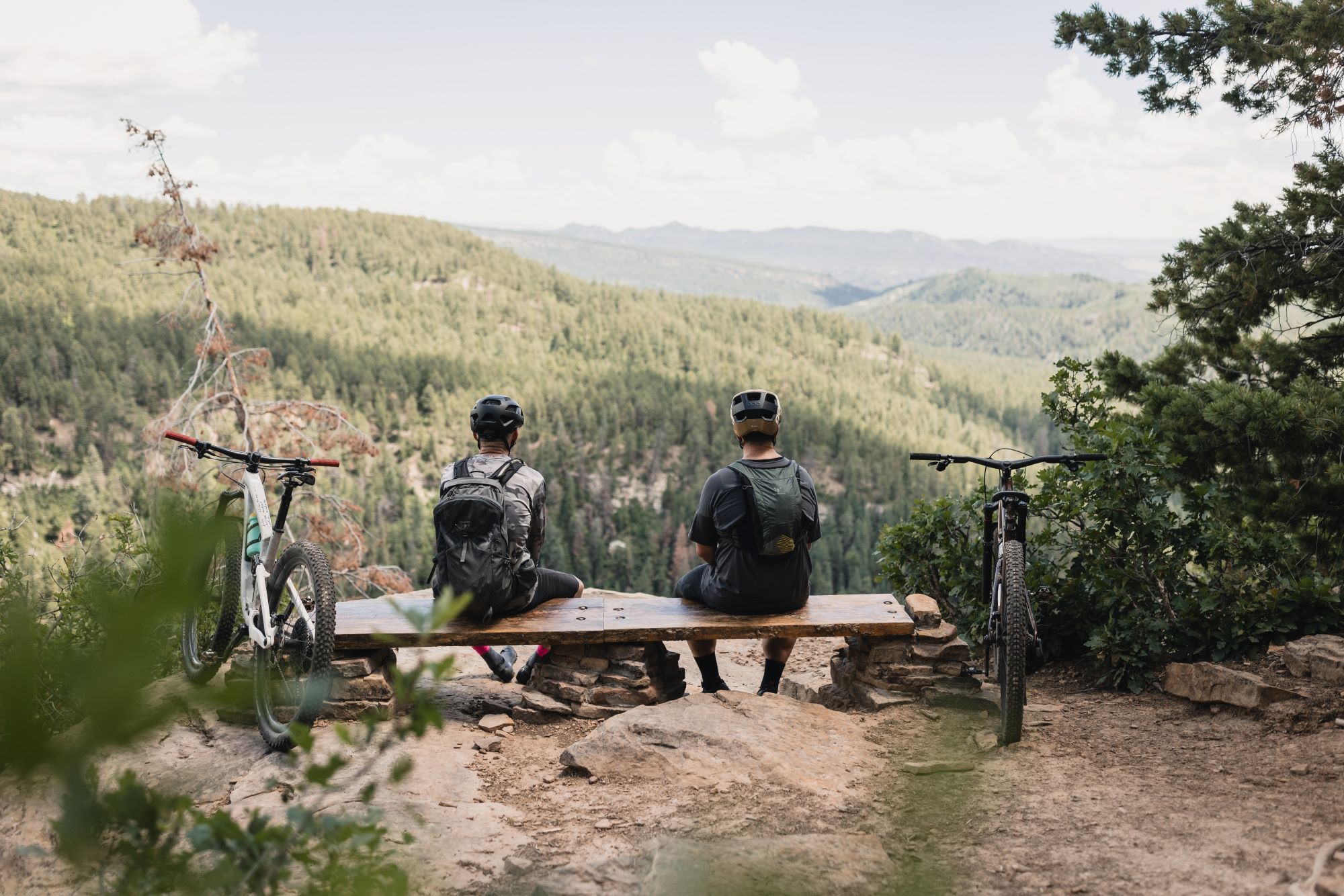
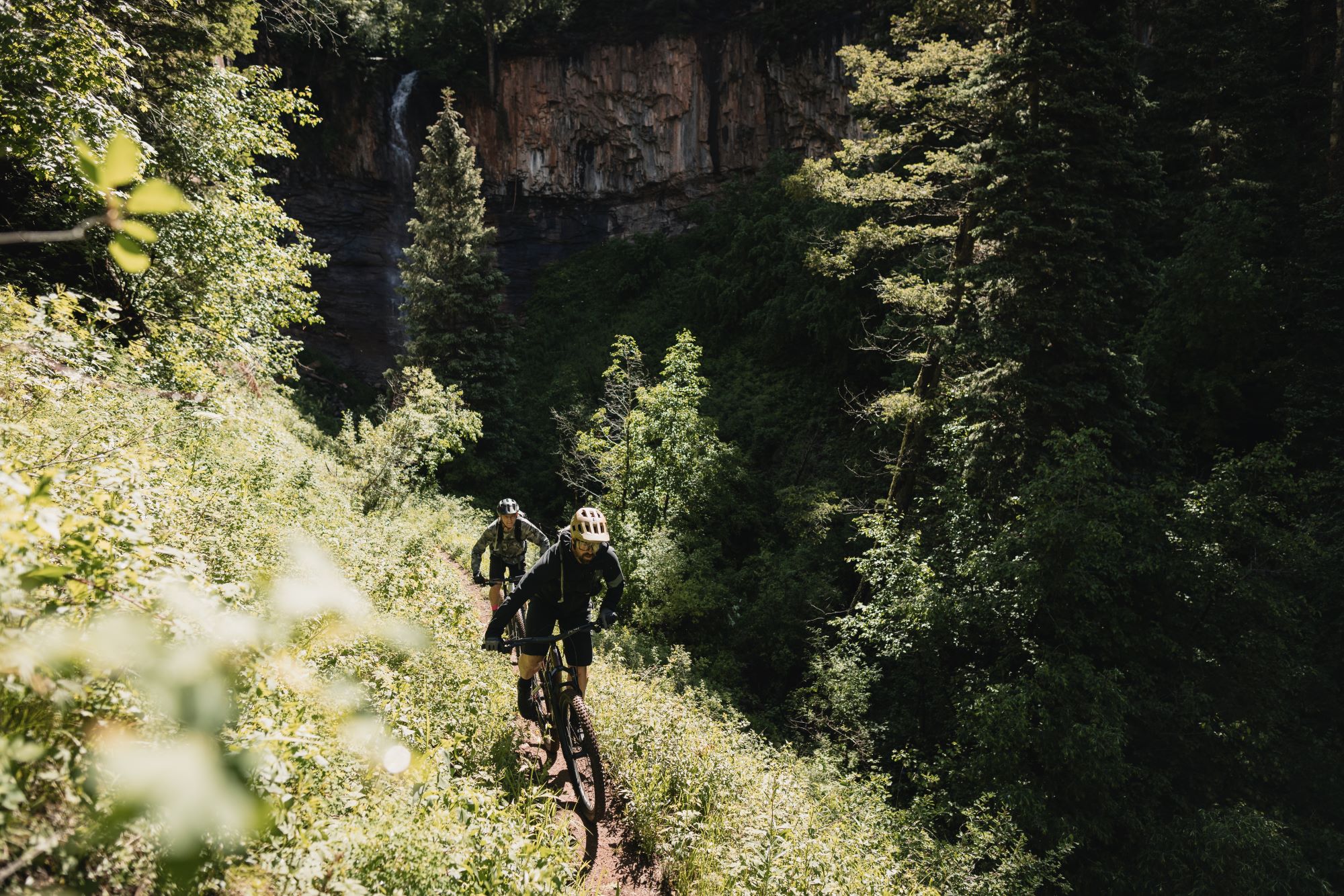
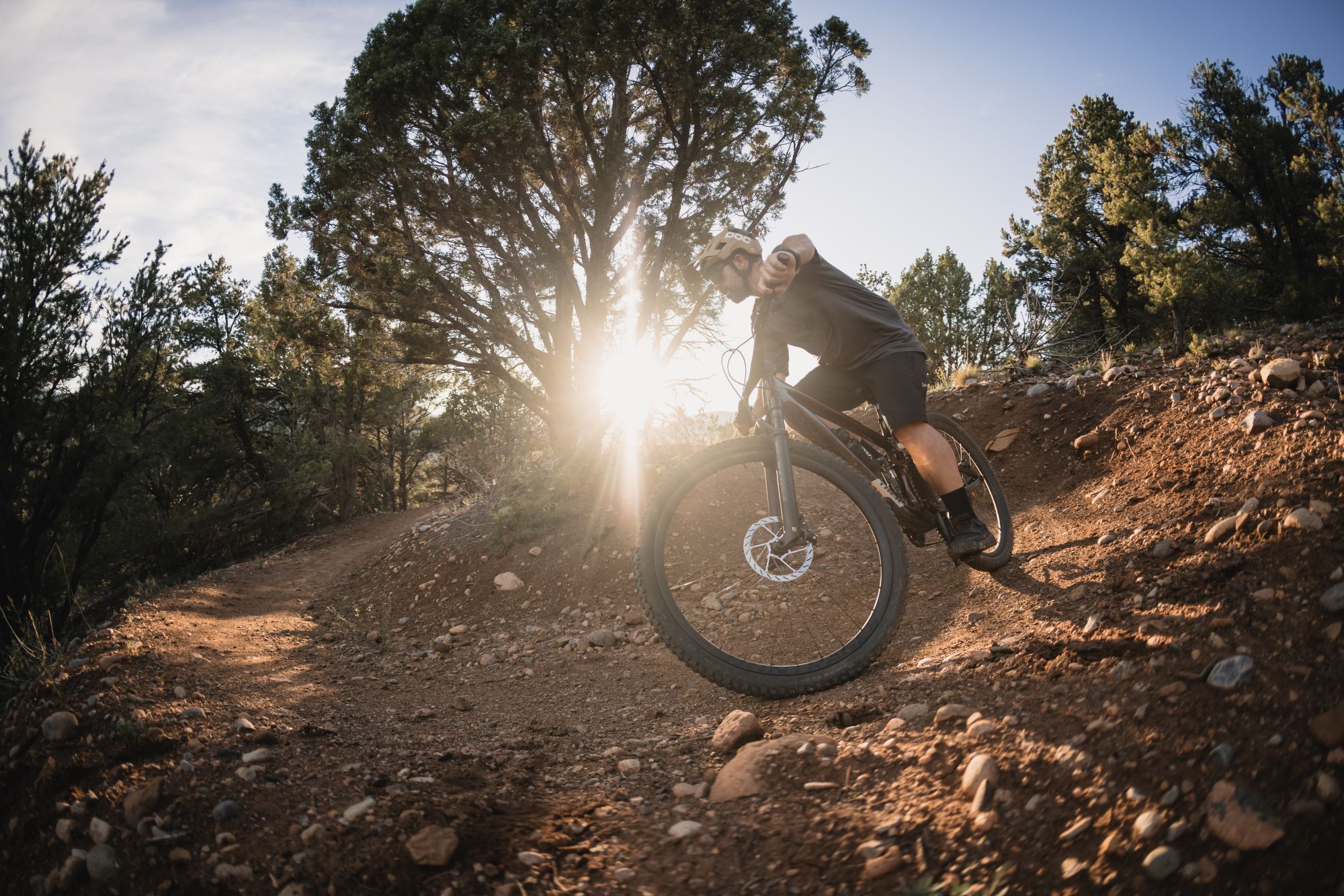
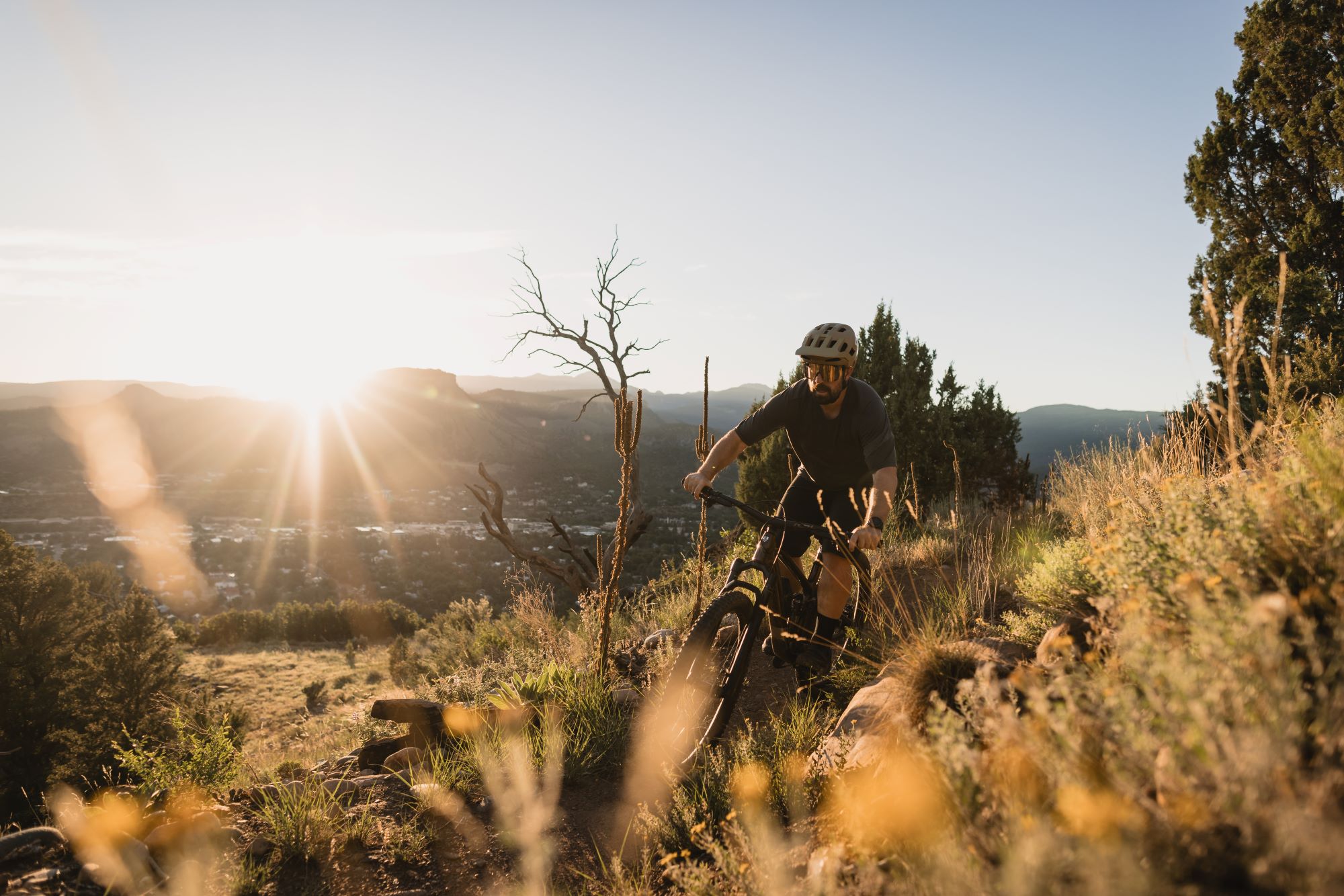
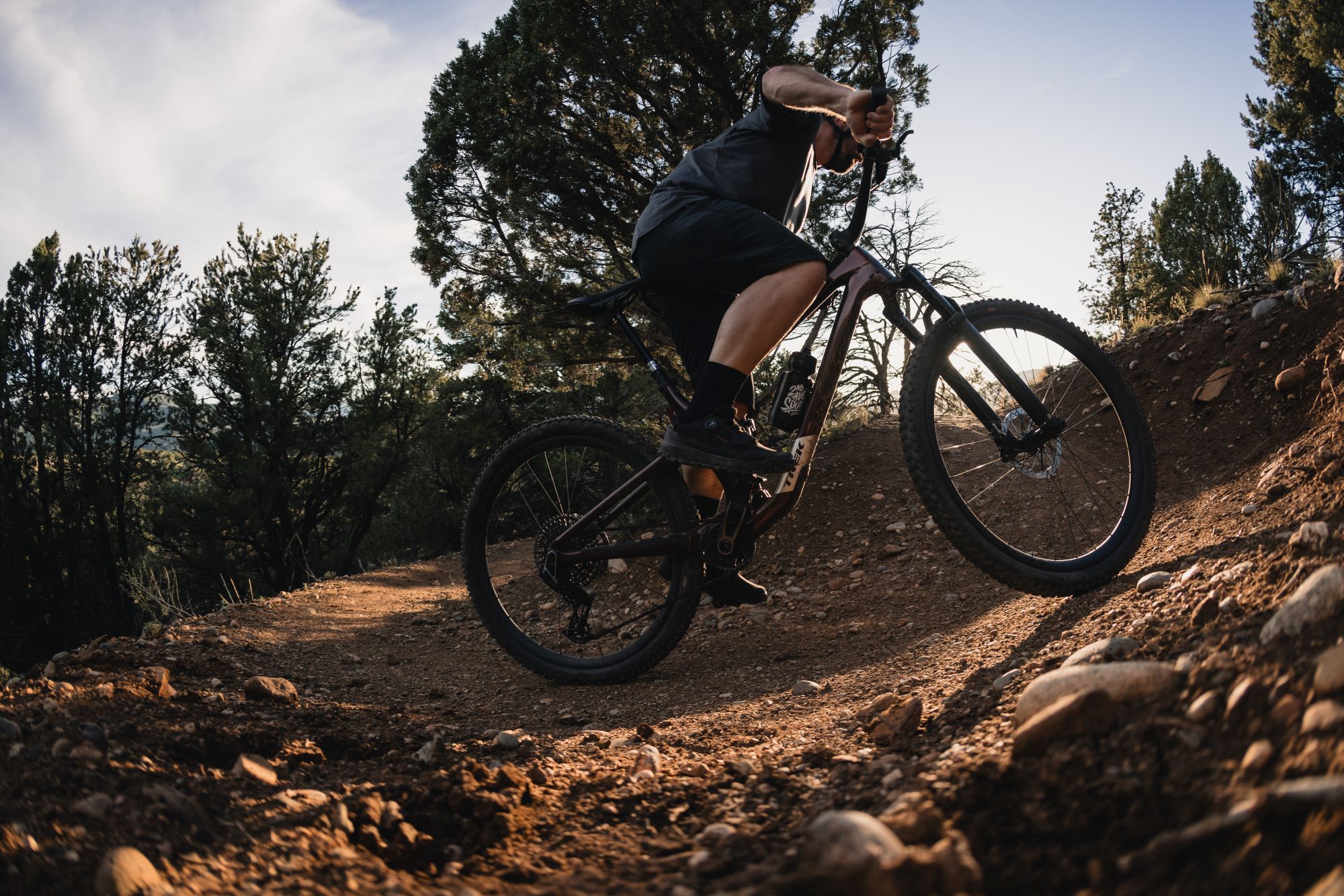

Mammoth of a Time with Winni Goldsbury
Words by Lester Perry
Images by Henry Jaine
On 23rd and 24th March 2024, Nelson Mtb Club knocked out the tenth edition of what is arguably NZ’s toughest gravity race; the Mammoth Enduro. Riders were presented with six epic descents linked by equally epic liaison climbs. The course designers aren’t total masochists, and eased the pressure on competitors by throwing in a couple of (no doubt banter-filled) shuttle uplifts to keep spirits high.
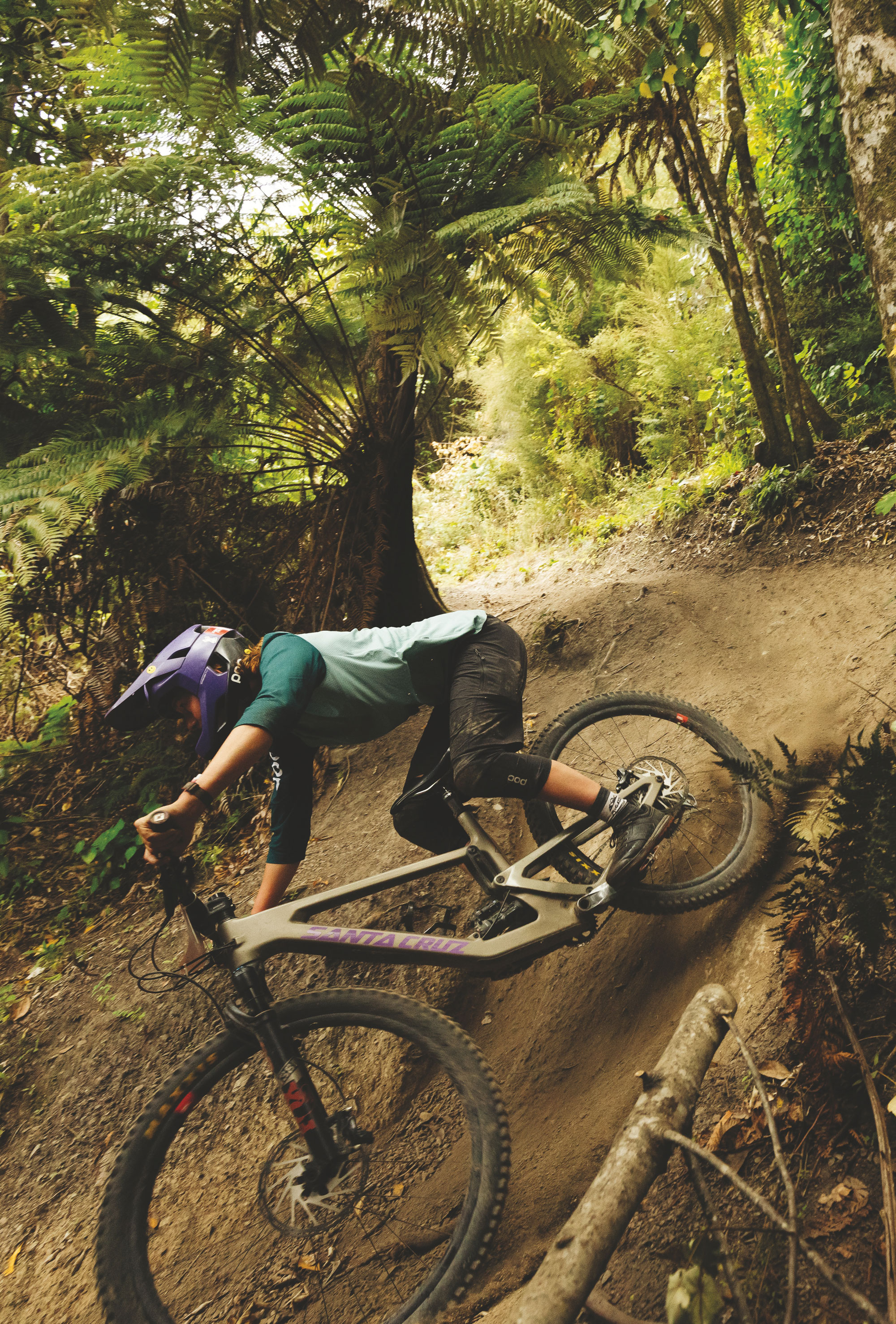
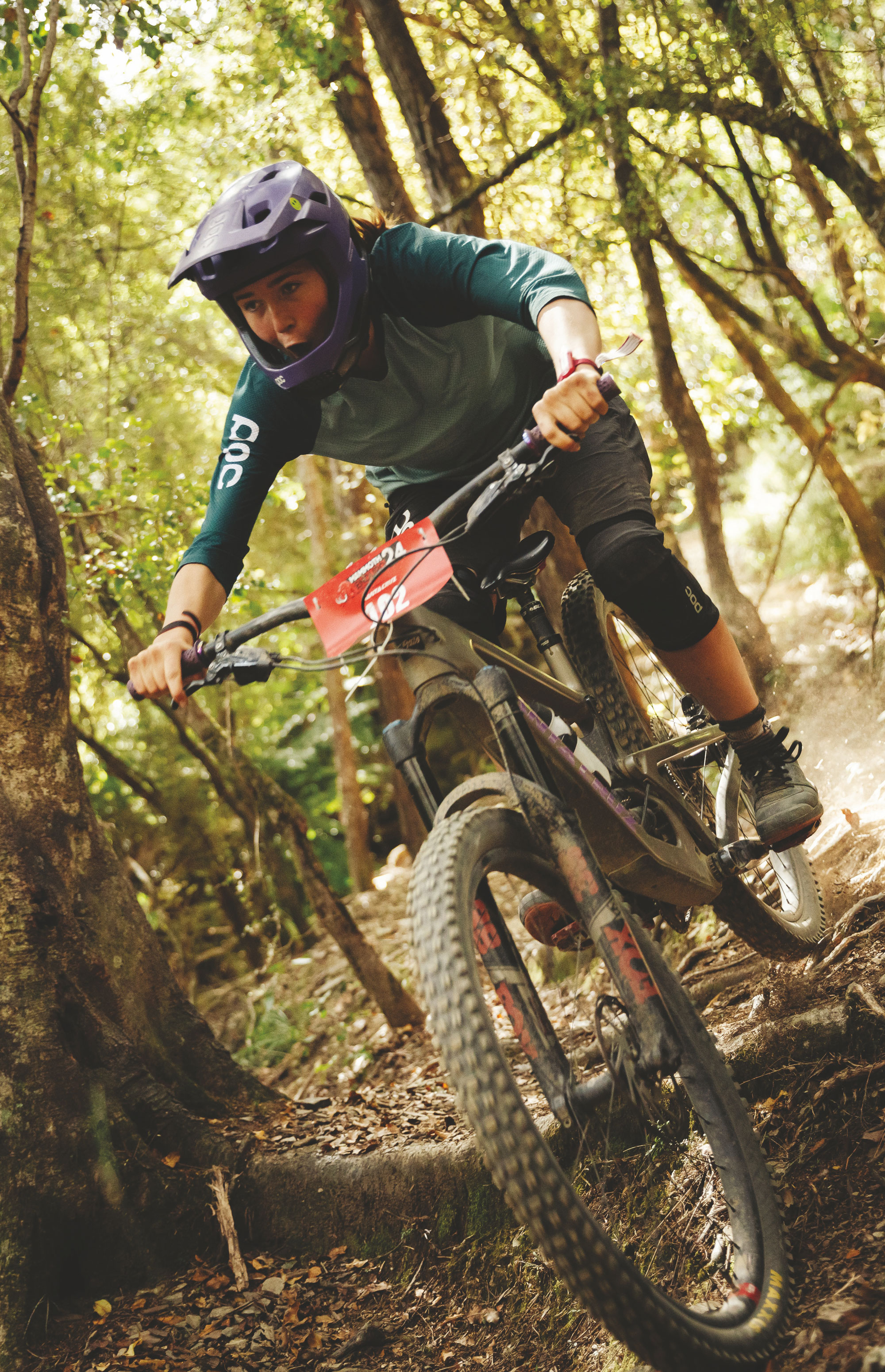
Racing down Peaking Ridge for Stage 4 was a highlight for Winni, the difference in speed from just riding it at her normal pace to a full-attack race pack, transformed the trail from a janky rhythmless physical challenge to a grin-inducing run where the root-balls and jank became flowy jumps and compressions.
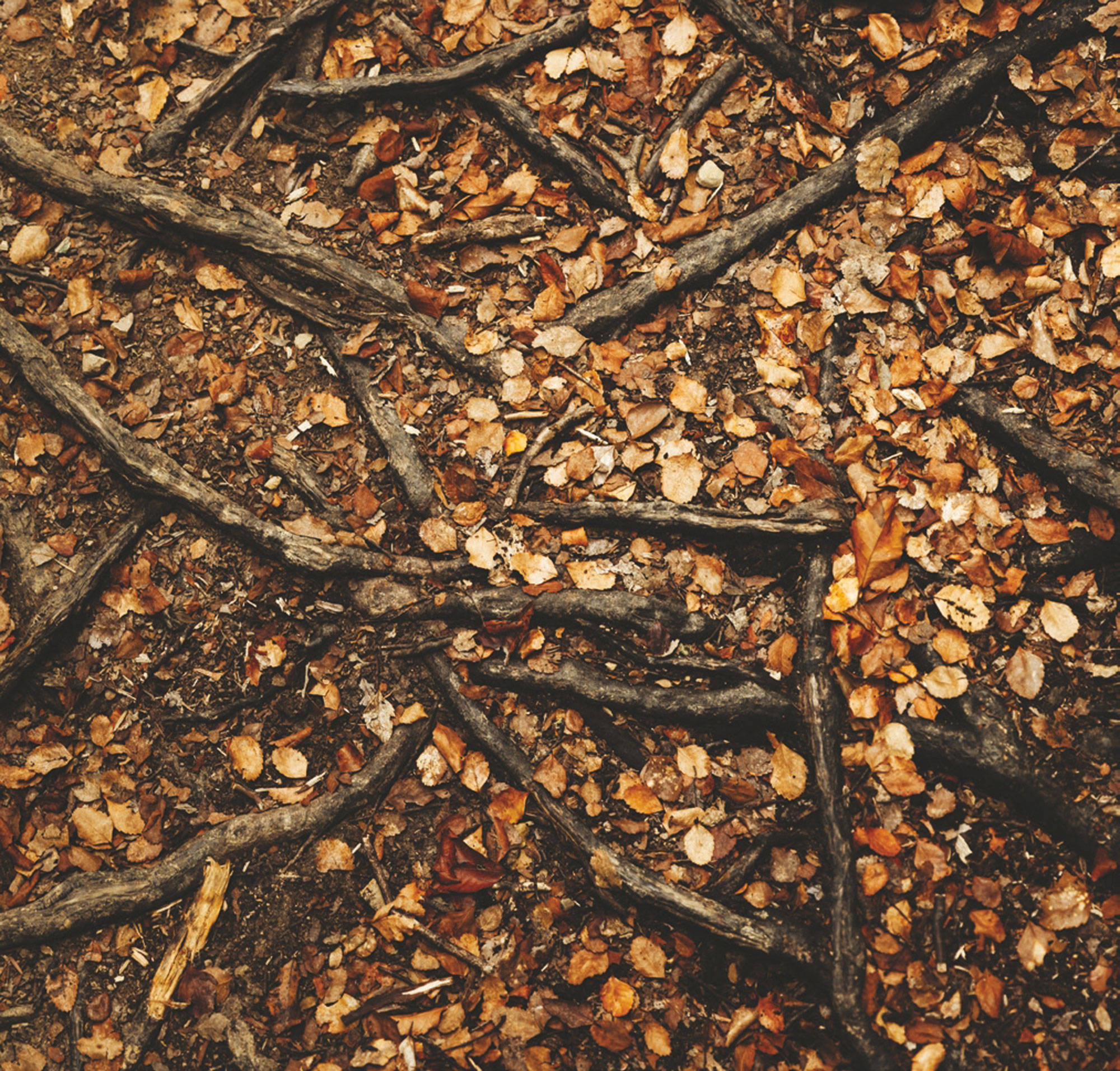
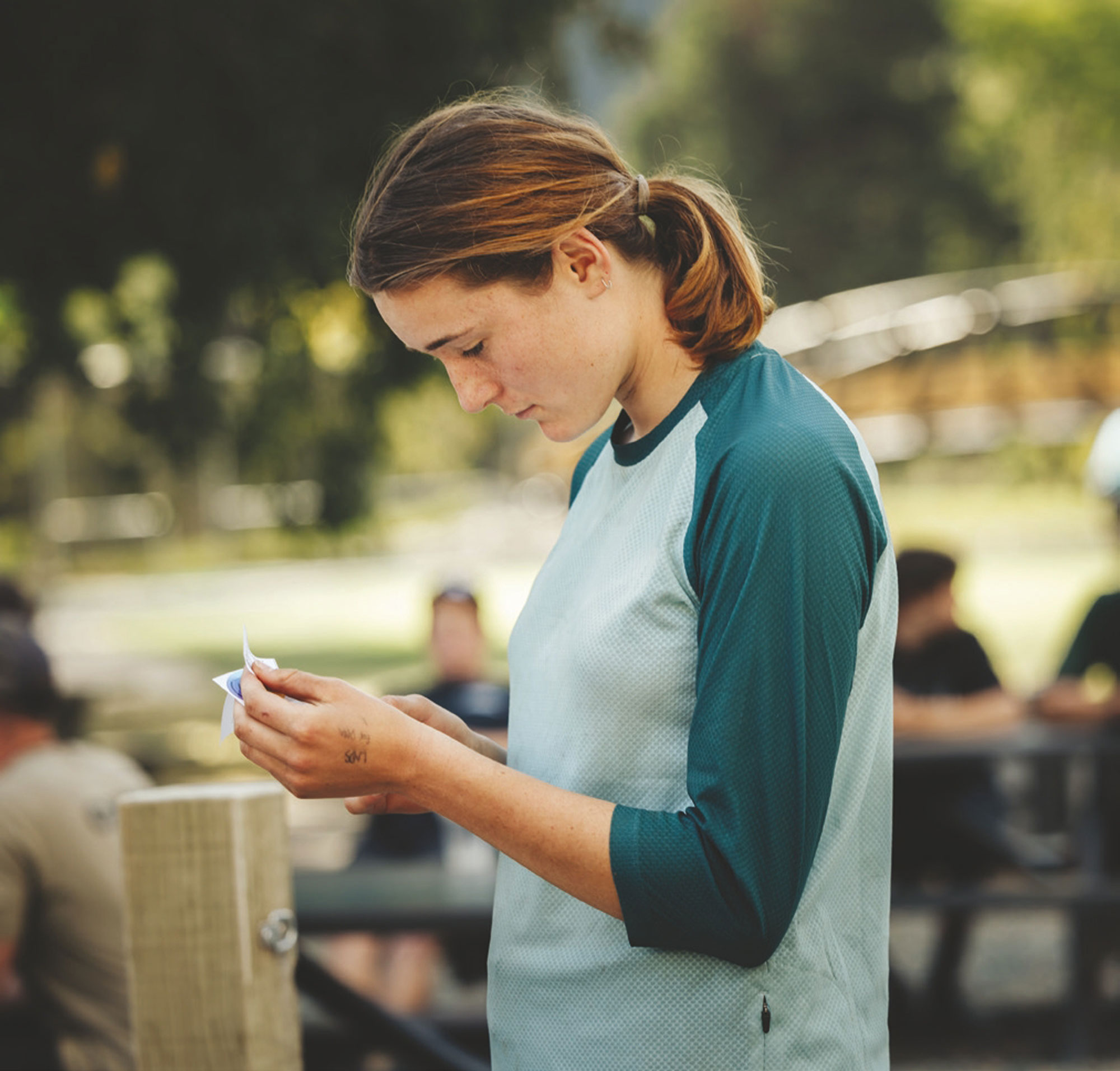
A few out-of-towners joined the local heavy hitters, but as with any enduro race, the locals certainly have the upper hand when it comes to knowing the trail nuances and how to race them well. This is definitely the case on Nelson’s technical steeps, where local knowledge pays dividends in the form of seconds on the clock.
Hailing from Christchurch, seventeen-year-old Winni Goldsbury turned up to Mammoth having ridden some, but not all, of the race stages. Practice was to be her first look at some of the trails. Not exactly confidence-inspiring when you’re about to go head to head with not only Nelson’s finest, but the women who are some of the nation’s fastest enduro racers.
The ace in Winni’s hand was that she’d proven herself just three weeks earlier at the NZ Enduro National Championship at Cable Bay Adventure Park, just outside of Nelson. Winni not only won the U21 championship but bested all other women in attendance, including the Elites.
Winni battled on foreign soil against local fast woman, Rae Morrison, duking it out over the Mammoth’s stages, trading stage wins and the race lead multiple times throughout the two competition days. Winni narrowly cinched the win over the seasoned Morrison by a sniff under a second! This was tight racing at its finest, and not only a huge surprise but another boost in confidence for the ever-improving Winni, with yet another podium in her break-out 2024 season.
She’s been at this bike game a while now, most of her life to be precise. At just six months old, she and her twin brother were presented with a pair of bikes by their grandfather. Handcrafted from old Kauri weatherboards from his house, these first bikes mean the pair can claim they were literally riding bikes before they could walk. From then on, mountain biking has been a key part of life for Winni, from doing skids at the local park, to cutting laps at the Christchurch Adventure Park once that was built. Since her first races at age 11, it’s been all go – and her passion for riding and racing continues to grow.
The ace in Winni’s hand was that she’d proven herself just three weeks earlier at the NZ Enduro National Championship at Cable Bay Adventure Park, just outside of Nelson. Winni not only won the U21 championship but bested all other women in attendance, including the Elites.
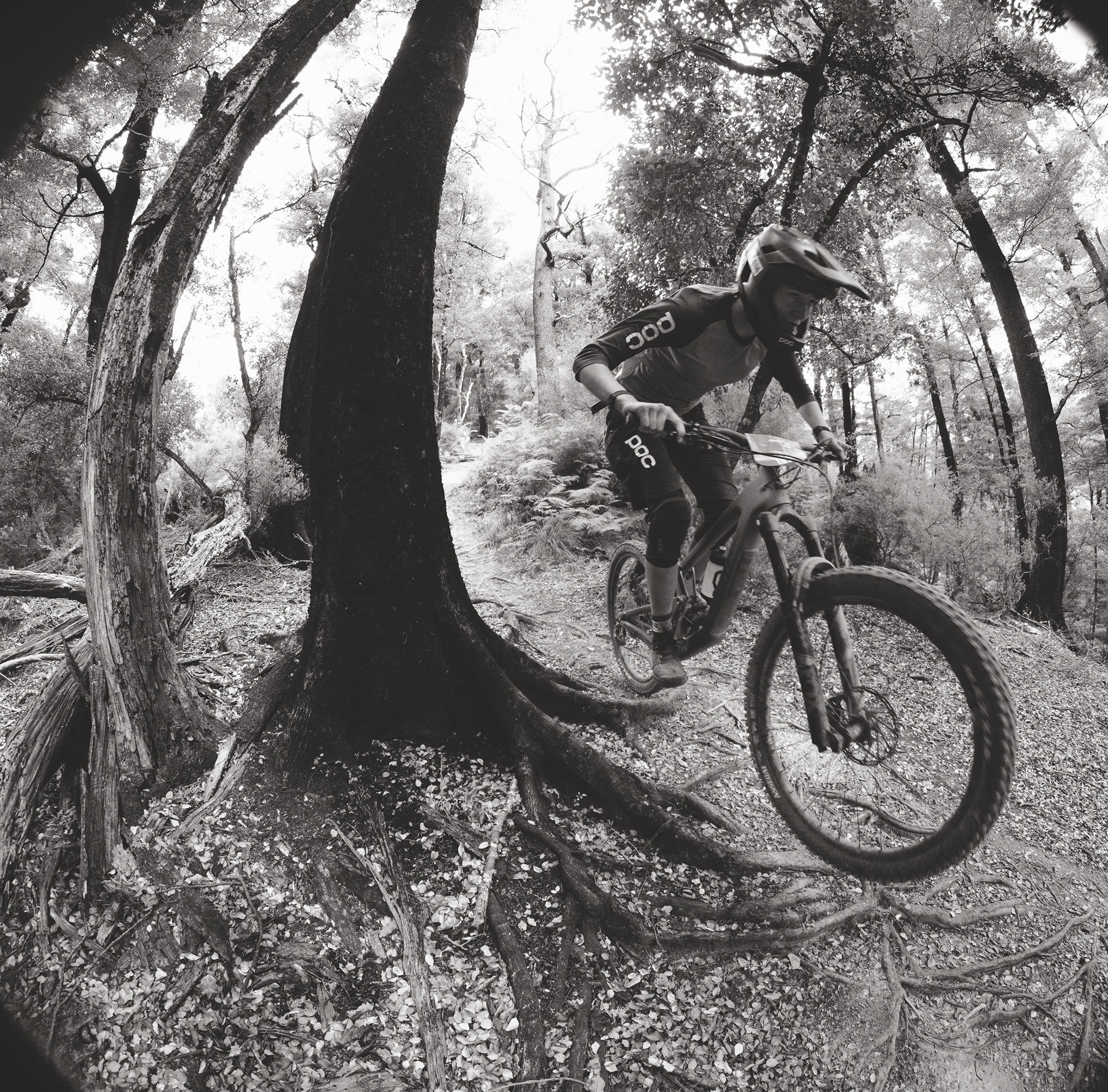
We caught up with Winni after Mammoth to get her thoughts on the event, dig a little deeper into her past, and get a glimpse into her hopes for the future.
“Becoming the NZ Women’s Enduro National Champion for 2024 is definitely a pretty great start to the year; hopefully, I can keep the momentum going for the rest of the year! Racing the Mammoth for the first time was awesome because the race had lovely people both participating and running it, as well as being run on an amazing bunch of trails. Honestly, it feels kind of like a dream to be up there with these ladies. I get to race with women as amazing and kind as Lou Kelly, Rae Morrison, George Swift and Xanthe Robb; it’s absolutely astounding. To be able to keep up with them makes the whole experience even more surreal,” explains Winni.
Winni had a couple of solid, and ultimately successful, days at the Mammoth, but the race wasn’t without adversity. On the first day, her chain came off during the first timed stage. Returning to the timing tent, the person who was doing the timing said that Rae’s time for stage one was 30 seconds faster than her time, which meant Rae would’ve been 4th in the pro-elite men category. Winni thought Rae must have had an amazing run. As luck should have it, though, the intel she received was incorrect, and Rae had finished only one second ahead of her in that opening stage. Seeing Rae’s time was still within reach added some pressure and ultimately fired Winni up to push harder heading into day two.
“The second day was also sweet. I was just so happy to be there racing with all those awesome people. Overall it was an amazing weekend,” she confirms.
“Honestly, it feels kind of like a dream to be up there with these ladies. I get to race with women as amazing and kind as Lou Kelly, Rae Morrison, George Swift and Xanthe Robb, it’s absolutely astounding. To be able to keep up with them makes the whole experience even more surreal.”
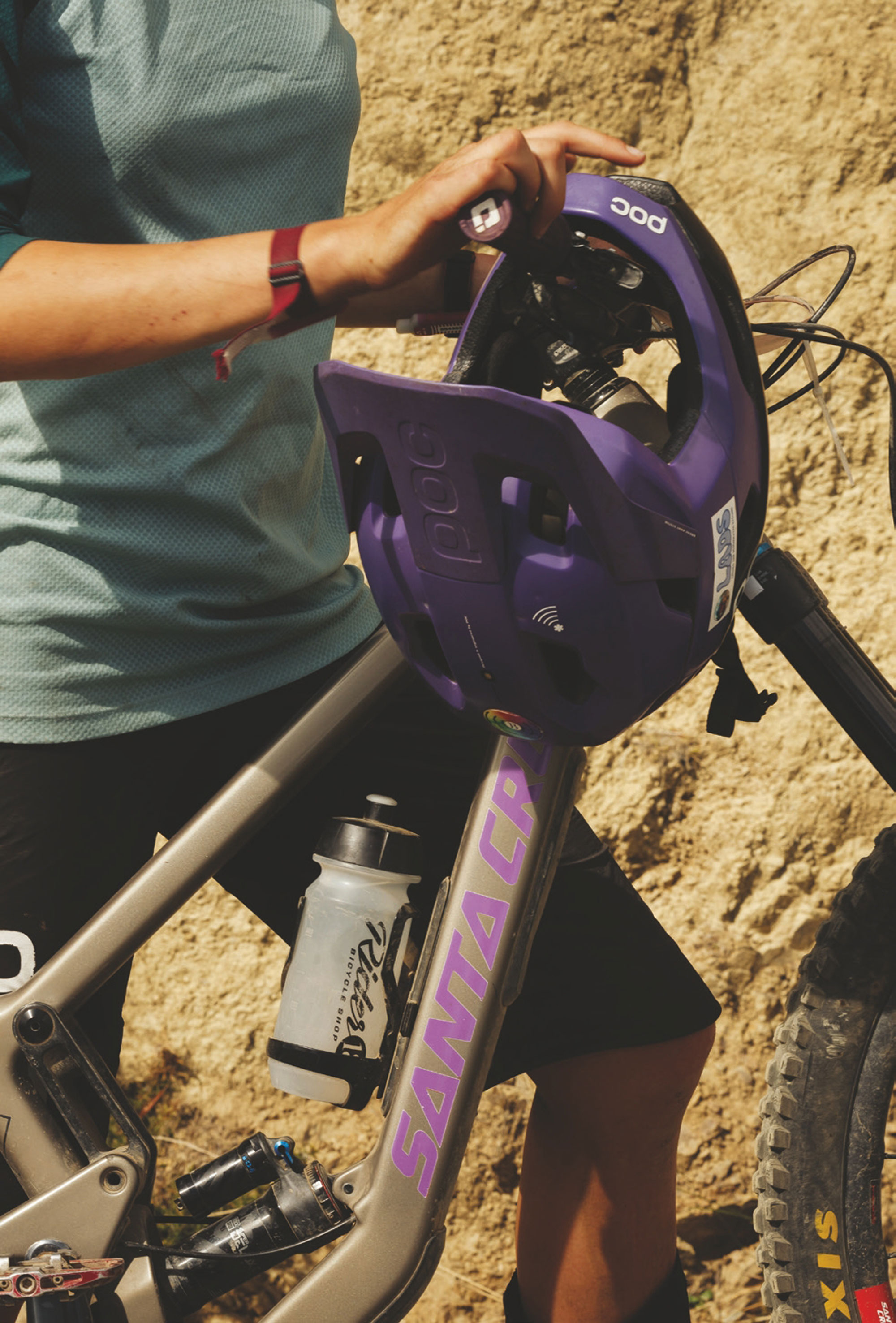
Day two kicked off with Stage 2, ‘Te Ara Koa’ into ‘Fringe DH’ and finishing down ‘Butters’; three trails combined to make one epic 3.3km trail, and the longest of the race. Aside from a lap in practice, Winni hadn’t ridden Fringe DH or Butters, and the stoke was real to get to race them for the first time. Unfortunately, Lady Luck wasn’t on her side, and she took a crash on this stage. All was not lost, however, she took the race lead from Rae, finishing the stage to take a sub-1-second buffer going into stage 3.
Racing down Peaking Ridge for Stage 4 was a highlight for Winni, the difference in speed from just riding it at her normal pace to a full- attack race pack, transformed the trail from a janky rhythmless physical challenge to a grin-inducing run where the root-balls and jank became flowy jumps and compressions.
Stage 5 was raced down the infamous 629 trail and its smorgasbord of steep dropping turns, slippery chutes, roots and rock; a jewel in Nelson’s MTB crown! Partway down the stage, Winni “had a random burst of energy which lasted until the end of the race; sprinted the entirety of the final horrible climb up Maitai Face”. It seems it may have been more than just a “random energy burst” though, having stopped at the food station on the climb to Maitai Face for a quick break to pat a puppy.
Maitai Face is a staple at most enduros in the area, dropping riders down through lofty pines, over roots, off-camber – and it has some of the steepest grades in the region; tough in the dry but nearly-unrideable in the wet. Fortunately, the weather gods played ball and delivered bone-dry conditions for the Mammoth riders. It was this 6th and final stage where Winni secured her win, pipping Rae by a narrow 3.5 seconds, putting her ahead once again and giving her the overall win by a scant half a second. A dominant performance battling not only Rae Morrison but Xanthe Rob, who raced consistently through the day to round out the top three over a minute and a half back.
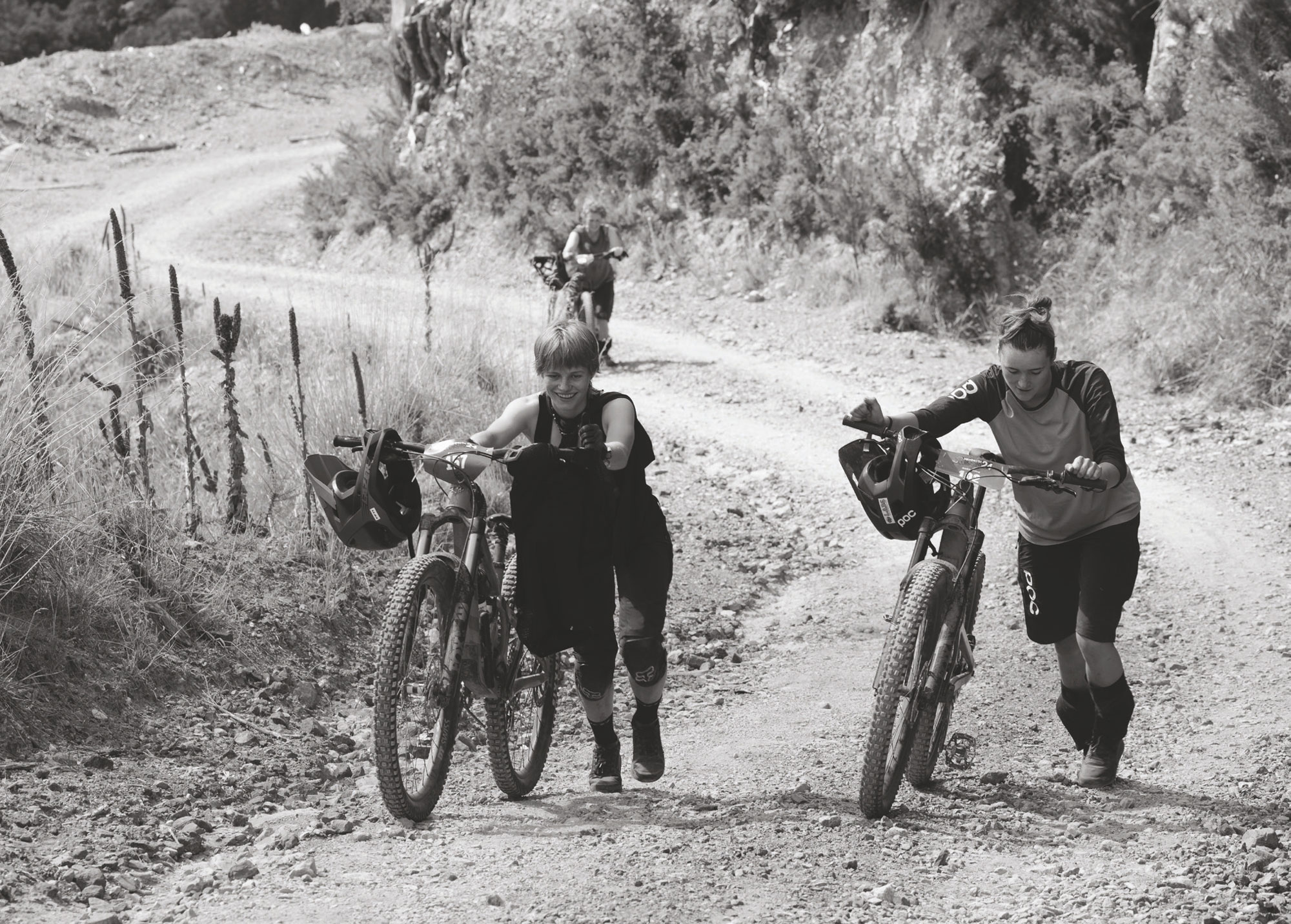
Off the back of Mammoth, Winni picked up couple of injuries which slowed her down for a few weeks but, once recovered, she was all go - preparing to head over to Europe to race some Enduros. By the time this magazine breaks cover, she should be jetting her way to the other side of the globe to begin another chapter in her life.
Winni’s not one to get too bogged down in the details of bike setup; there are no special tweaks or specifics to her setup, it’s more of a “run what you brung” scenario. Her only comment about setup was the use of a pair of Reserve wheels fitted with Cushcore inserts and Maxxis Assegai tyres, pumped to 23 PSI front and rear, allowing her to attack Nelson’s gnarliest, remaining fully focussed on the task at hand rather than nursing her steed or riding light while concerned about flat tyres.
Breakout seasons often come after a period of hard work and focused training; for Winni though, her approach is more laid back than many at her level. “My training schedule is very, very serious, and intense,” she jokes. “No, no, my training is very relaxed and is limited to push- ups and intervals. I just ride every day and try to keep up with people who are faster than me.”
As simple as that.
Winni’s seemingly laissez-faire, relaxed attitude and absolute froth for mountain biking aren’t unique to her; it’s a full-family affair.
“My parents have both been extremely important in my MTB journey so far, as they are also obsessive mountain bikers. My mum, Melanie Blomfield, is a super competitive person all around and mountain biking is no different. She has dominated the 50+ category for the last five years and often beats most of the open women in local races. She has always been phenomenal and extremely supportive of my racing,” explains Winni. “My dad, Richard Goldsbury, was a cross country and downhill racer in the 90’s and 00’s. When enduro came into existence he definitely enjoyed that, and now he sometimes gives races the privilege of his participation, although mainly spends his time taking stunning photos of riding, and building the coolest tracks in Canterbury. He is very supportive. They’ve both influenced my riding so much because of their different riding styles, so I’ve learned to ride lots of different types of terrain. We travel across New Zealand a lot and get to ride all the different types of riding NZ has to offer.”
Off the back of Mammoth, Winni picked up couple of injuries which slowed her down for a few weeks but, once recovered, she was all go – preparing to head over to Europe to race some enduros. By the time this magazine breaks cover, she should be jetting her way to the other side of the globe to begin another chapter in her life.
Alongside Winni, Shannon Hewetson backed up his win at the NZ Enduro Championships at the Mammoth.
“Mammoth Enduro was a really rad event,” says Shannon. “They had everyone speculating on the tracks with the organisers staying tight lipped right up to the week of, meaning most were in the same boat practice-wise. We raced some of the best, most iconic trails – both skill and fitness-wise – for Nelson. Peaking Ridge and 629 were lots of fun, but all stages required a lot of focus with their duration, and all had high consequences if you misjudged things. The weekend went smoothly for me, didn’t really expect to do what I did; I thought I’d be feeling flat after Cable Bay (NZ Champs). Sometimes those days when you think things could have gone better, or you could have had better intensity, can really surprise you! Coming off the back of taking out Nationals Champs a few weeks prior, I felt a lot of pressure to back it up with a solid win, so was pretty stoked to take it out and to close out the summer season with another win.”
Thats a wrap for our Mammoth Enduro series. We’re looking forward to next year’s race and hope to see some of you there!
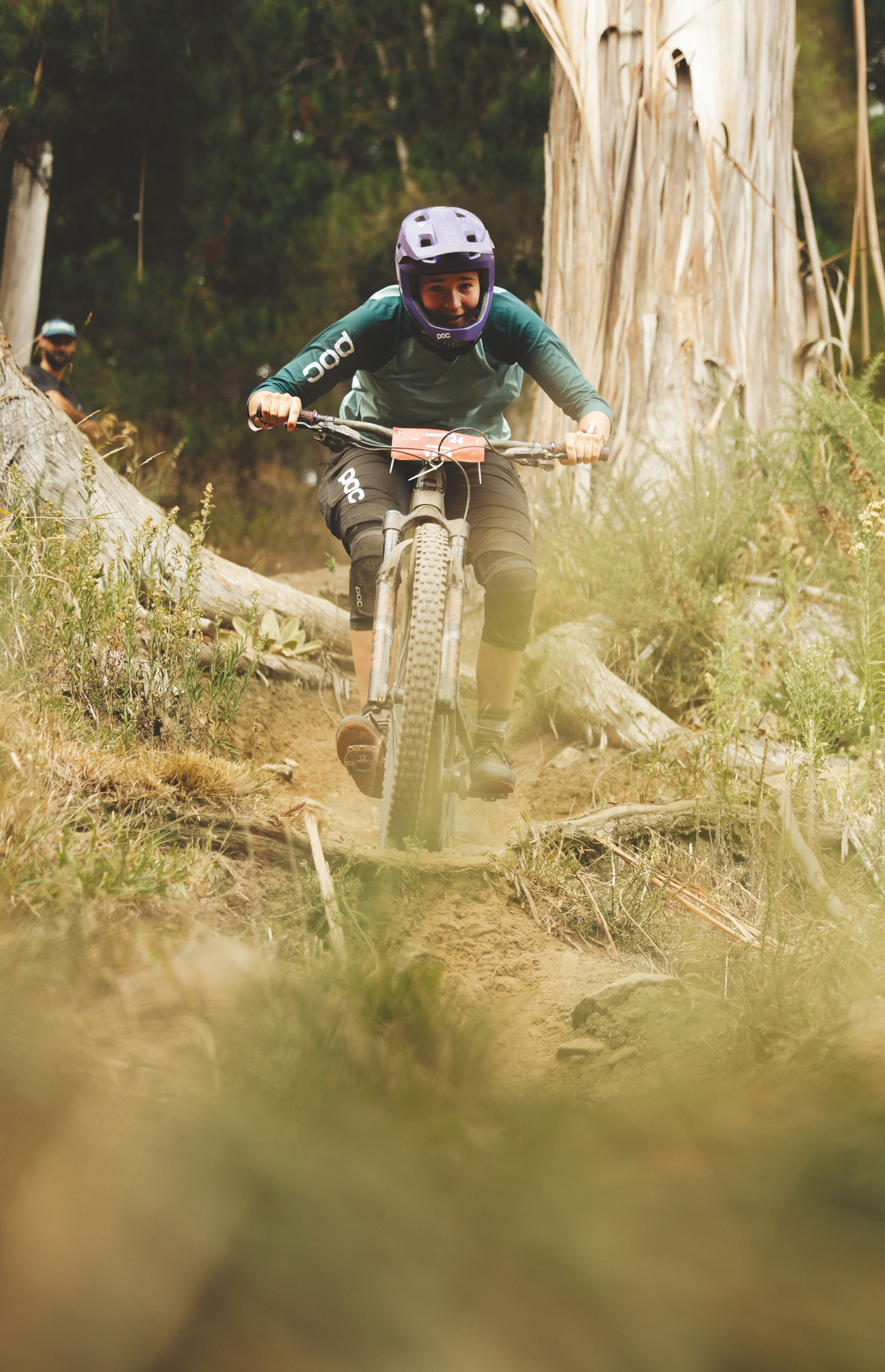

Small Victories: Celebrating a 40th following a spinal cord injury
Words & Images Chris Owen
Turning forty is a milestone that deserves a decent celebration. A couple of years ago, I was on the verge of hitting the big Four-O, but it was hard to believe… How had I been a ‘grown up’ for that long? When it came to the good times I had on bikes, it didn’t seem I had progressed far from adolescence really!
I’d spent a good part of my adult life riding bikes, and the things I loved about it hadn’t changed since I was a kid; doing skids, hucking off stuff, and trying (failing?) to go faster than my mates – all put a big grin on my face. And, of course, that surge of adrenaline and relief you experience when you ride out the other side of something terrifying.
On the 10th of September 2022, I suddenly felt my age pretty significantly, following a crash that was one for the books. Bike parks often promote the ‘Pre-Ride / Re-Ride / Freeride’ approach to hitting new or re-built trails, and a popular jump line had just re-opened after having some work done on it. I was keen to sample the new features, but I was also in a hurry to get home and keep promises to my wife – no time for pre-rides or re-rides. Bombing down the trail, I overshot a jump at full pace and, looking ahead with horror, saw what was about to happen.
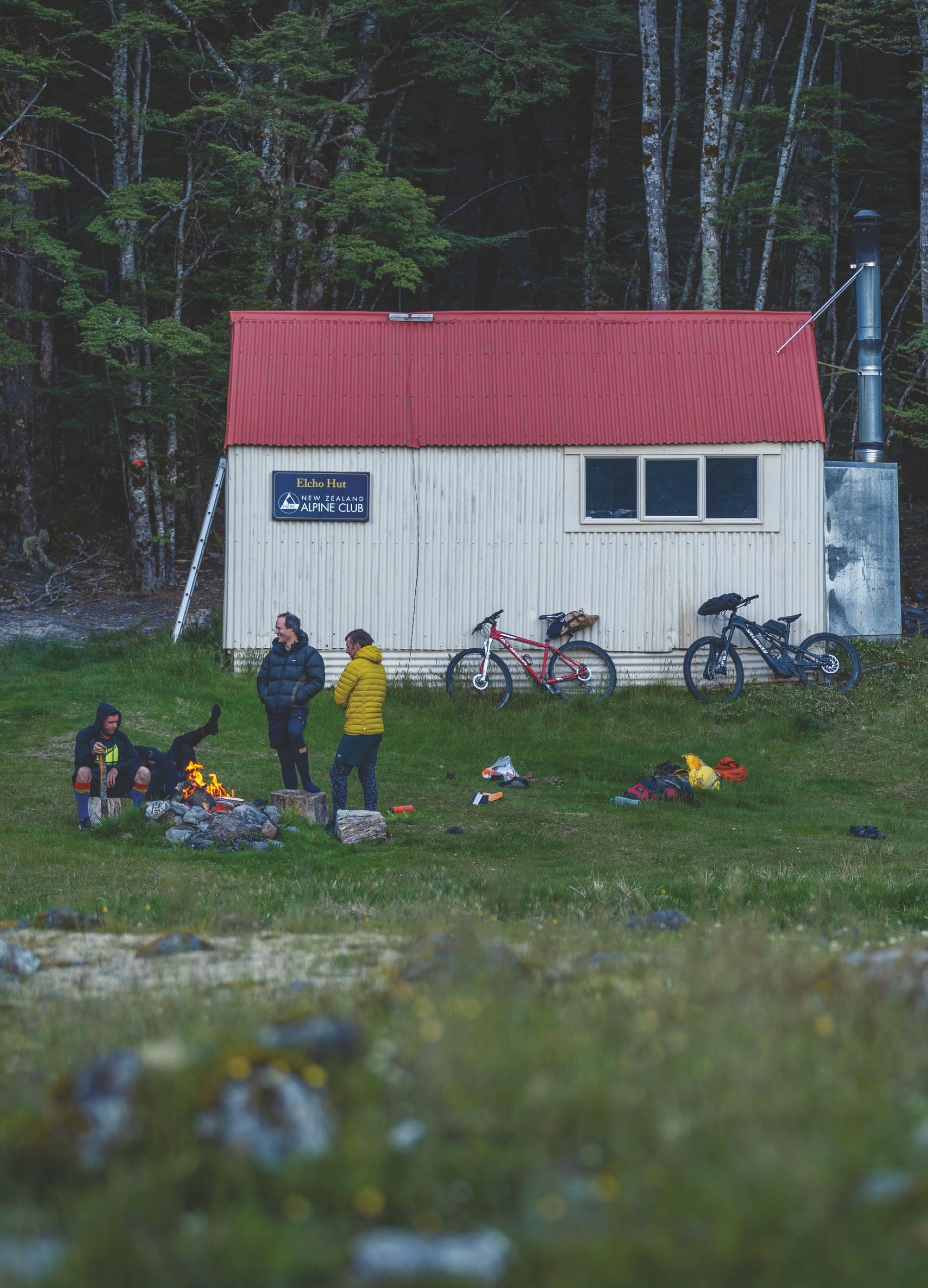
The second my wheels touched down, way past the landing, my bike ploughed into the back of a freshly built berm. The result (after getting flipped upside down and clipping a tree), was twelve broken ribs, a split diaphragm, three broken vertebrae and a spinal cord injury. In a split second, some bad decision making had changed my life.
The weeks and months following the crash pushed my body and my mind to their limits. I spent four months as a patient in Burwood Hospital’s spinal unit, full of uncertainty about what the rest of my life was going to look like. Burwood is an excellent facility, but even the most qualified doctors were reluctant to tell me whether or not I’d walk again. When your lower body suddenly goes offline and you don’t know whether you will get it back, it’s terrifying; there is so much to process. At Burwood, I felt like I’d been plucked out of my ‘normal life’ into a whole new world; one that involved wheelchairs, catheters, an endless array of medication, and a total invasion of privacy. The first few evenings there were the hardest; after visitors left and the ward was quiet. In those moments, negative thoughts, anxiety and fear tried their best to consume me.
Reflecting on my time in Burwood, I consider myself one of the lucky ones, for so many reasons. Firstly, I didn’t hit my head. Secondly, I did have a shot at getting back on my feet, due to the way I’d damaged my spine – it wasn’t certain, but if I put the work in, I may just walk again. More importantly, though, my accident taught me just how much the people in my life cared about me. I was deeply moved by the ongoing flow of love and support I received. Collectively, everyone strongly believed that I would crush my recovery, and this lit a fire under me – I had so many incredible people in my corner, I was seriously motivated to work as hard as possible; not just for myself, but for them as well.
Amongst the patients at Burwood were some inspirational people who became close friends. They helped me realise that the hard work started in my head. I learnt early on that I couldn’t let negative thoughts see the light of day. Easier said than done, but crucial to getting out of bed every morning, into a wheelchair, and down the hallway to physio. I did my best to focus on the present – I tried not to pay attention to the sheer scale of work that lay ahead of me. It became obvious pretty quickly that this recovery was going to be a slow grind, so I chose (and still choose) to celebrate the small victories. It was all about the small victories. Focus on the battles, don’t think about the war. Block out thoughts about the future, just visualise walking out the front door on discharge day. Most importantly, believe in myself. There were plenty of rough days when this mindset went to the dogs. But, for the most part, I tried to see life through this lens, and so I went to work.
Fast forward to November 2023: it’s been a heavy year but I’m on my feet, and even better – I’m back on a bike! I discharged from Burwood by walking out the front door just as I had imagined. But, despite that milestone, I’m not out of the woods – a number of leg muscles still lack proper function, and it doesn’t take much to absolutely exhaust me. It’s still uncertain how much strength I’ll get back but, after everything I’ve been through, I’m insanely grateful to get this far. It’s been months of life on repeat, working with a cast of amazing people: physio, acupuncture, hydrotherapy, gym, Pilates, work, family time, rest. Rinse and repeat weekly. The progress is glacially slow, but there is always noticeable improvement every week or two, even if it’s minimal. That’s all the motivation I need to keep going at it. Small victories.
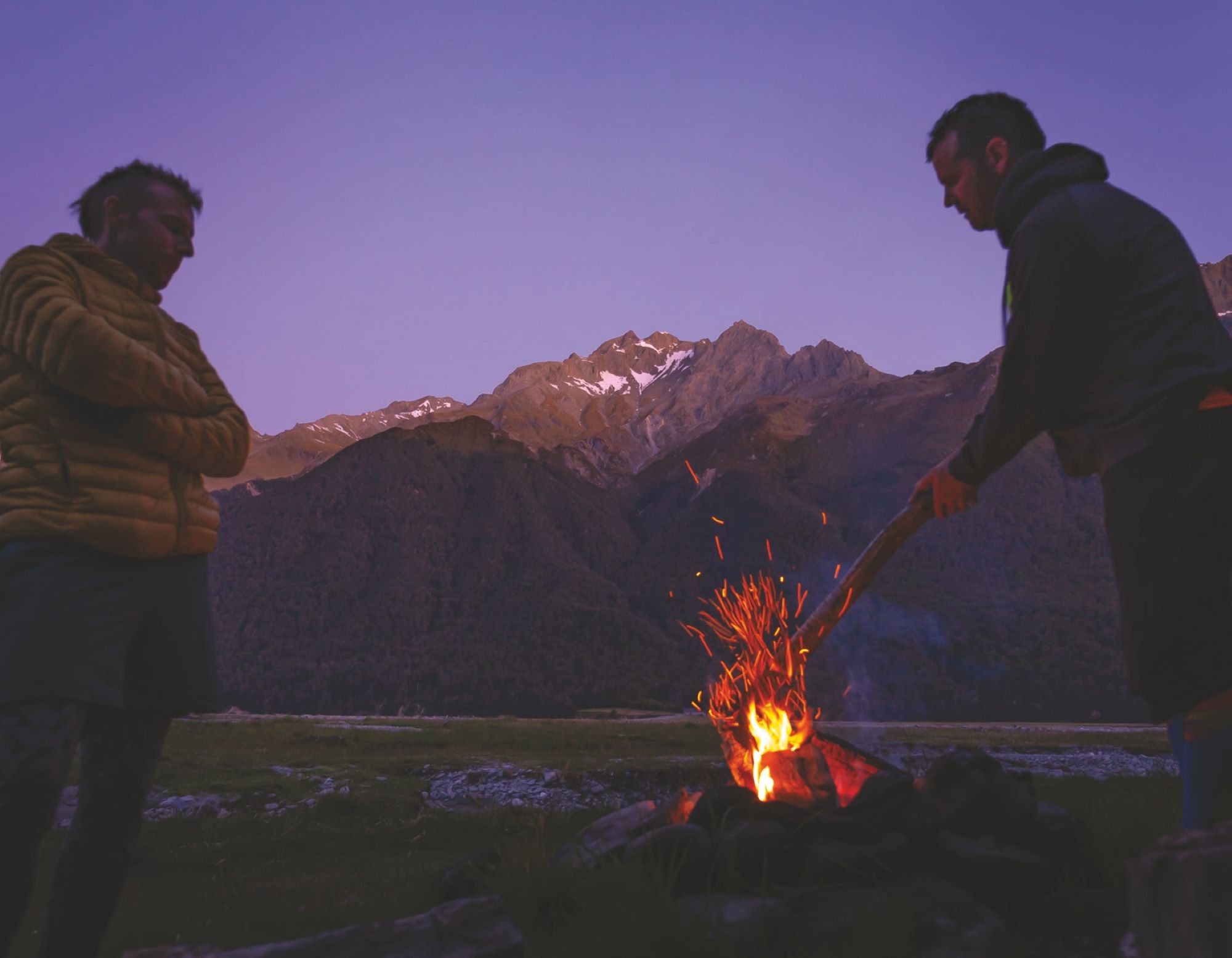
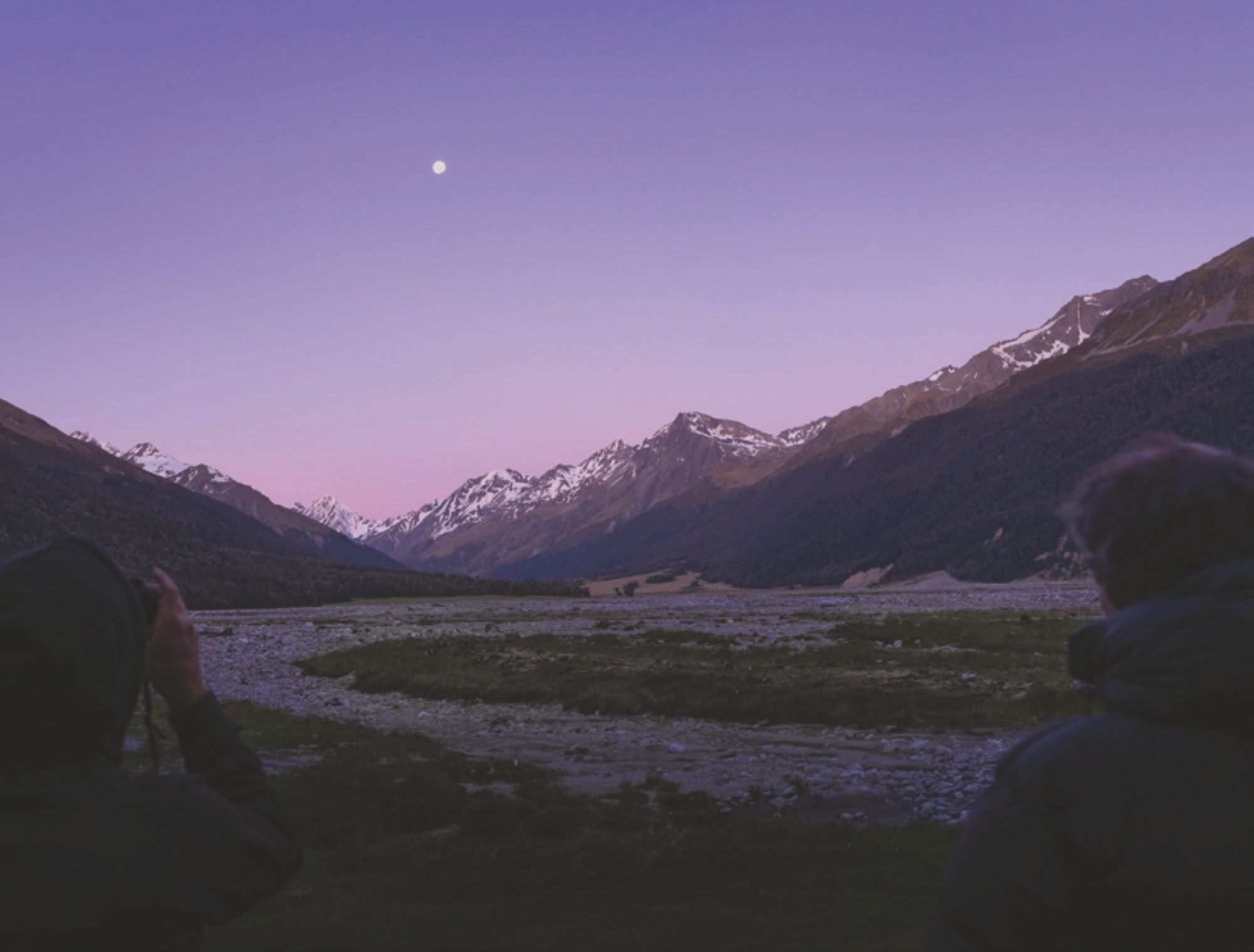
Focus on the battles, don’t think about the war. Block out thoughts about the future, just visualise walking out the front door on discharge day. Most importantly, believe in myself. There were plenty of rough days when this mindset went to the dogs. But, for the most part, I tried to see life through this lens, and so I went to work.
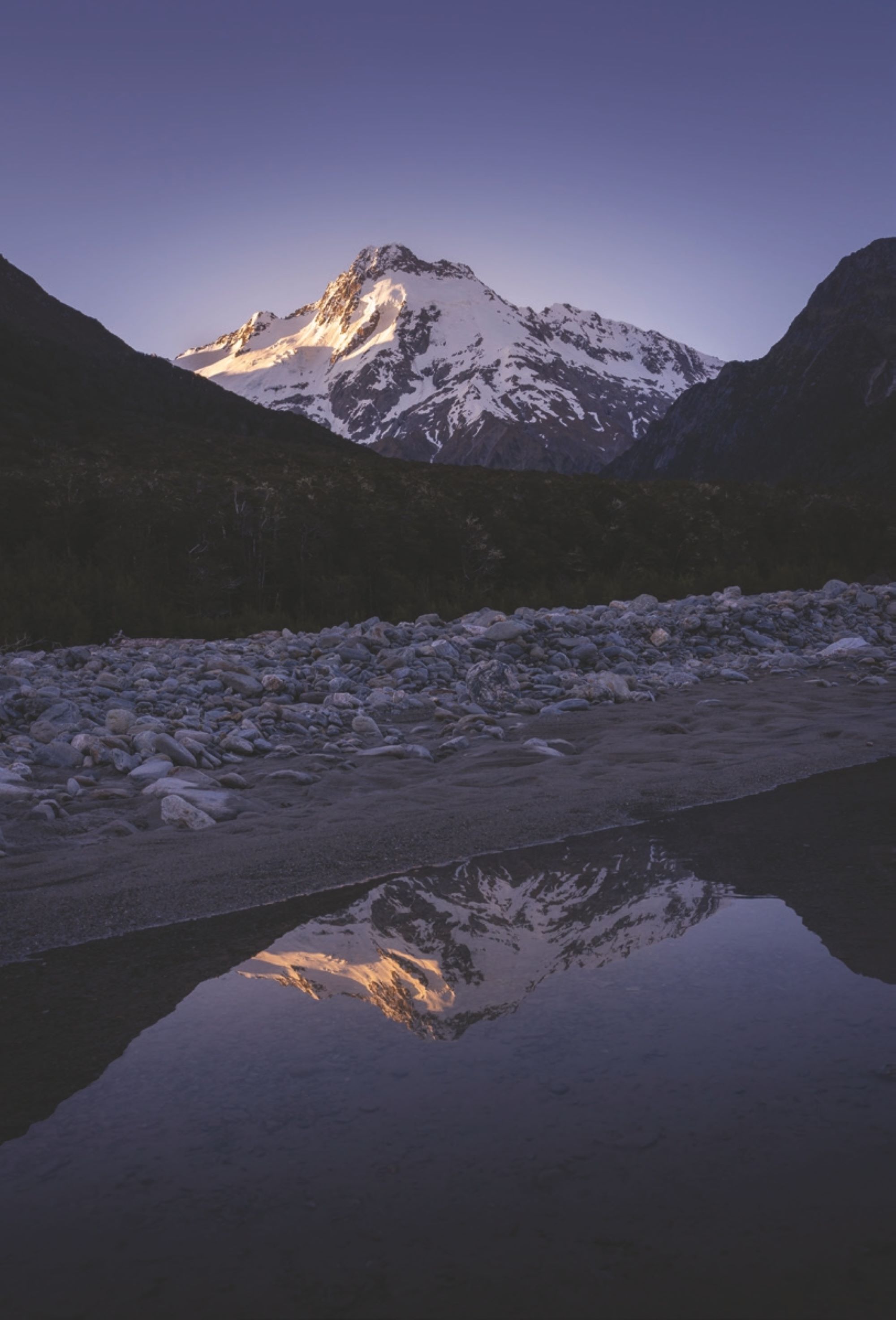
Seemingly out of nowhere, my 40th is just around the corner and, aside from special time with my beautiful wife and cheeky children, there’s only one way I want to celebrate it – on bikes in the mountains (eBike for me), with my mates and my brother. Doing something that, for a while, looked like it may never be possible for me again. Group chat created, keen participants locked in, route and hut suggestions getting thrown around. Lots of ideas are kicked to the curb. Understandably, everyone is concerned about what I’ll be able to manage. I convince the boys an overnighter in the Hopkins Valley is perfect, based on my very faded recollection of a climbing trip there 11 years ago. I sell it as a cruisy pedal up a flat valley, mostly 4WD track with a few shallow river crossings. Sold. Packing starts in earnest, including all the usual bikepacking and camera gear as well as crutches, a bag of meds, and bathroom consumables (if you know, you know… if you don’t, ignorance is bliss). It’s the night before, forecast looks perfect, and I can’t wait. I decide to dig out the photos from that climbing trip, years before. I notice suddenly that the ‘shallow’ river crossings I recalled were actually knee-deep and swift, in more than one photo… Hmmm.
The drive down is great. I can’t believe I’m on the road with mates, heading into the hills, after the year that has just passed. Unreal. It’s a thought that sticks with me all of Friday evening and well into Saturday morning as we set off up the valley. We enjoy a chilled 4WD trail for the first few kilometres, but suddenly we are faced with our first river crossing. It’s definitely not shallow, but it’s not ridiculously deep either… it’ll go. One by one we egg each other on as the acoustic bikes get across with a few near-swims, and a lot of laughs. Then it’s my turn – I’ve done my research on the Turbo Levo’s waterproof rating, now it’s seriously about to get tested. So is my skinny right leg – if I mess this up and have to tripod quickly, there’s a fair chance the leg will just buckle, and I’ll go down with the ship. Stop thinking, start pedaling. I charge at the river and emerge on the other side upright and grinning. The boys are cheering, and so am I. More importantly, the bike is still working!
That first crossing sets the tone for the next two or three hours; weaving our way up the riverbed, carefully looking for good spots to cross, then going for it. The kilometres fall away and our bed for the night, Elcho Hut, is only a couple of km’s away. I couldn’t be more content.
Suddenly, we’ve arrived at a bottle neck. On our right, the river has become noticeably deeper and swifter. Even the strongest amongst us (including an ultra-runner and a 6-foot sheep shearer) reckon it’s dicey, let alone for a bloke with semi- functional legs! We have no choice but to explore options on our left, where the river cuts in abruptly against the bush. Looks OK on the map, just have to link up with the nearby tramping track. The boys can portage my bike along the track for about 500m while I hobble along it on crutches; all good. Except, it’s not…. the boys find the orange track markers amongst an ocean of windfallen trees and thick saplings. Pretty average terrain to push a 23kg eBike through, loaded with gear! Regardless, everyone gives it a damn good go, trying to clear a path, knowing that it looks like our only option. To me, that shows the character of guys I’m privileged to be here with. They have my back, just as they have right through this injury.
I feel a bit helpless, sitting on the riverbed while everybody else is working so hard to find a way through. We regroup, confirming my worries – the bush route’s just not going to work. At this point, I notice the fatigue starting to creep in. I know this feeling after limping home from physio more times than I care to recall, and it means my body is on the gas light. I won’t have the energy to backtrack five hours to the car. Nobody says it out loud, but it’s looking like an unplanned night in the bush could be on the cards. Everyone spreads out on one last recce. We might be in luck: Phil thinks he has found a goaty little route sandwiched between the bank and the river’s edge, about one foot wide in places, weaving under and over fallen trees. Beggars can’t be choosers, so we set out in single file – me on crutches and everyone else carrying bikes in one hand, balancing against the riverbank with the other. So far so good. After about 15 minutes of this procession, we are nearly through the worst of it. The last obstacle, a semi-submerged tree, has me doing my best to crawl/dry-hump my way over it, in an effort not to fall in the drink. We regroup on the river flat, chuffed. The Type 2 fun is over, and we’re looking forward to knocking it off with one last pedal.
Suddenly, we’ve arrived at a bottle neck. On our right, the river has become noticeably deeper and swifter. Even the strongest amongst us (including an ultra-runner and a 6-foot sheep shearer) reckon it’s dicey, let alone for a bloke with semi-functional legs! We have no choice but to explore options on our left, where the river cuts in abruptly against the bush.
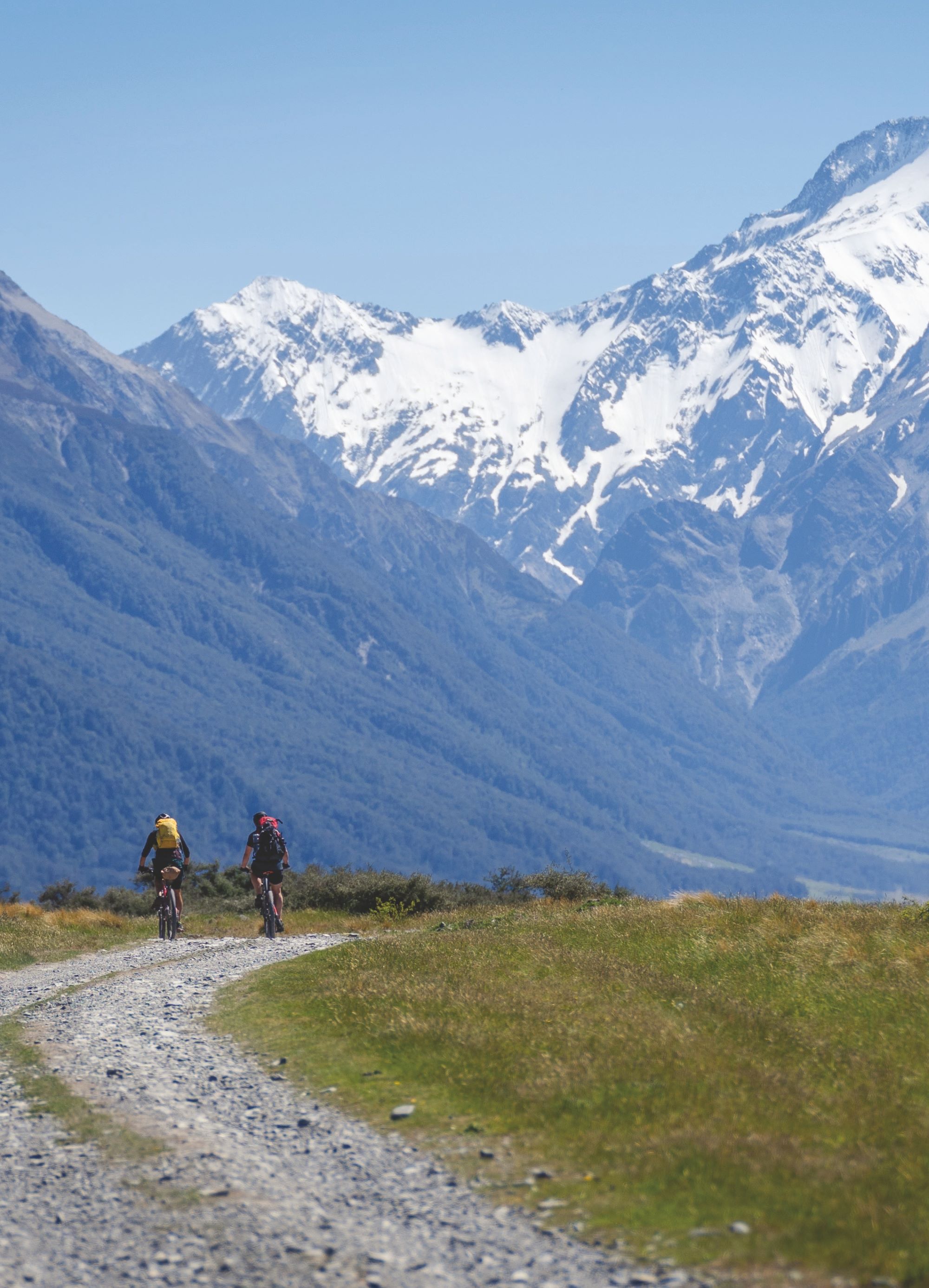
After everything I’ve been through, the privilege of being in this valley on a clear moonlit night with my bro and my mates, is not lost on me. What a way to turn 40.
The final, grassy river flat has us surrounded by a chain of snowcapped peaks, and it’s a pleasurable bit of riding after the last couple of hours. We all feel the relief at this point, roaring with laughter when Brion suddenly goes over the bars, courtesy of a camouflaged hole. Elcho Hut comes in to view, stoked. The evening is spent glassing for Tahr, taking pictures, swatting sandflies and spinning yarns. We are an eclectic mix of blokes, so the conversation topics are wide ranging to say the least.
I break away from the boys for a bit, camera in hand, and hobble around on the riverbed. As much as I want to enjoy the campfire yarns, I also want a quiet moment to enjoy what’s around me, and reflect on where I’ve come from. It’s been a wild year. I always thought spinal injuries happened to those at the pointy end of the sport. Truth is, we risk an injury of this magnitude every time we swing a leg over our bikes. Despite the issues I still face today, I’m immensely grateful that the injury wasn’t worse, and proud that my body has been able to repair itself to this point. I can’t ride the kind of trails I used to enjoy, and on a bad day, that fact hurts…. But this injury (and this trip) has taught me that just being out in the hills surrounded by good friends and family is what matters most. After everything I’ve been through, the privilege of being in this valley on a clear moonlit night with my bro and my mates, is not lost on me. What a way to turn 40.
“We don’t know how lucky we are mate” - Fred Dagg
